ccc offers comprehensive solutions designed to modernize financial businesses as per the outlook of the Saudi regime

 SANJAY KUMAR EDITOR-IN-CHIEF INTERNATIONAL FINANCE
SANJAY KUMAR EDITOR-IN-CHIEF INTERNATIONAL FINANCE


ccc offers comprehensive solutions designed to modernize financial businesses as per the outlook of the Saudi regime

 SANJAY KUMAR EDITOR-IN-CHIEF INTERNATIONAL FINANCE
SANJAY KUMAR EDITOR-IN-CHIEF INTERNATIONAL FINANCE


Mortgage rates continued to decline in the United States, as the new house sales data suggest the entry of new buyers into the market. For the first time in almost 11 years, home sale prices decreased year over year in February 2023, and total home sales experienced their greatest monthly percentage gain since July 2020.
Is the US property market up for a growth trajectory in 2023?
Experts have mixed opinions as there is a shortage of homes in the country. Those who bought houses recently at historically low loan rates are continuing to live in them. The difficulty of affordability for many people, especially first-time homeowners, is perpetuated in part by tight inventory constraints that prevent prices from declining.
Shifting the focus away from the property market, let’s talk about the electric vehicle sector, where car sales are soaring like never before. Results for the first quarter indicate happy news for the electric vehicle makers, despite supply chain challenges and higher upfront prices. Ford declared a growth rate of 139% while Volkswagen witnessed a 65% increase, and Tesla registered a sales rise of 81%
Concerns among consumers over rising oil costs and tax incentives are thought to be the reason for the shift in the attitude of customers when it comes to buying electric vehicles. And this behavioural change is undoubtedly helping the automakers.
And last but not least, this edition of the International Finance Magazine is bringing another inspirational tale for its readers, from Saudi Arabia, where ccc by stc, a leading Customer Experience Management provider, is progressively pioneering the advancement of the Business Process Outsourcing (BPO) industry in the Kingdom through local, digitized services with international standards such as COPC OSP standards.
ccc also offers comprehensive solutions designed to modernize financial businesses as per the outlook of the Saudi regime
INDUSTRY
ECONOMY
16

ELECTRIC VEHICLES:

In 2021 Ramaphosa offered an action plan to develop additional power generation capacity in the short to medium term
TECHNOLOGY

46
IMF
BANKING AND FINANCE
66



















SWIMMING AGAINST THE STREAM: THE NETFLIX STORY
Netflix earned some 7.7 million new subscribers in the last three months of 2022

88
BLENDING AI & RULES-BASED APPROACH IN FINANCE















Most financial institutions want to ensure they are knowledgeable about Artificial Intelligence
100
Climate change affects a company's fundamentals, and thus markets overall

FEATURES
30 Technology & the future of real estate
58 Reopening of China to benefit Thai economy?
78 Agro-tech revolutionizing coffee production
BUSINESS DOSSIER





40 PNL: Leading Africa’s logistics sector from front



56 Meteoric rise of Quantum Metal





72 Landco: When luxury meets sustainability


82 Siang Tang Tan: Leader who transformed Muscat air cargo
92 Finexis Advisory Guiding HNWI clients to success
98 Tamweel Aloula Changing Saudi’s SME landscape
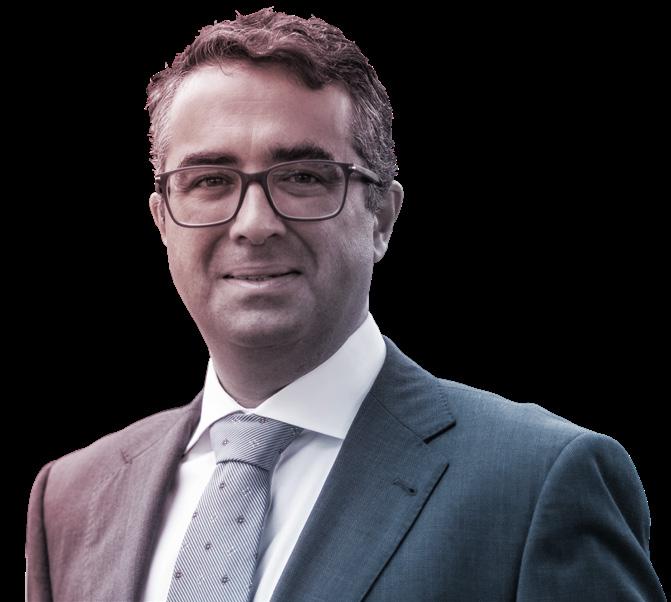
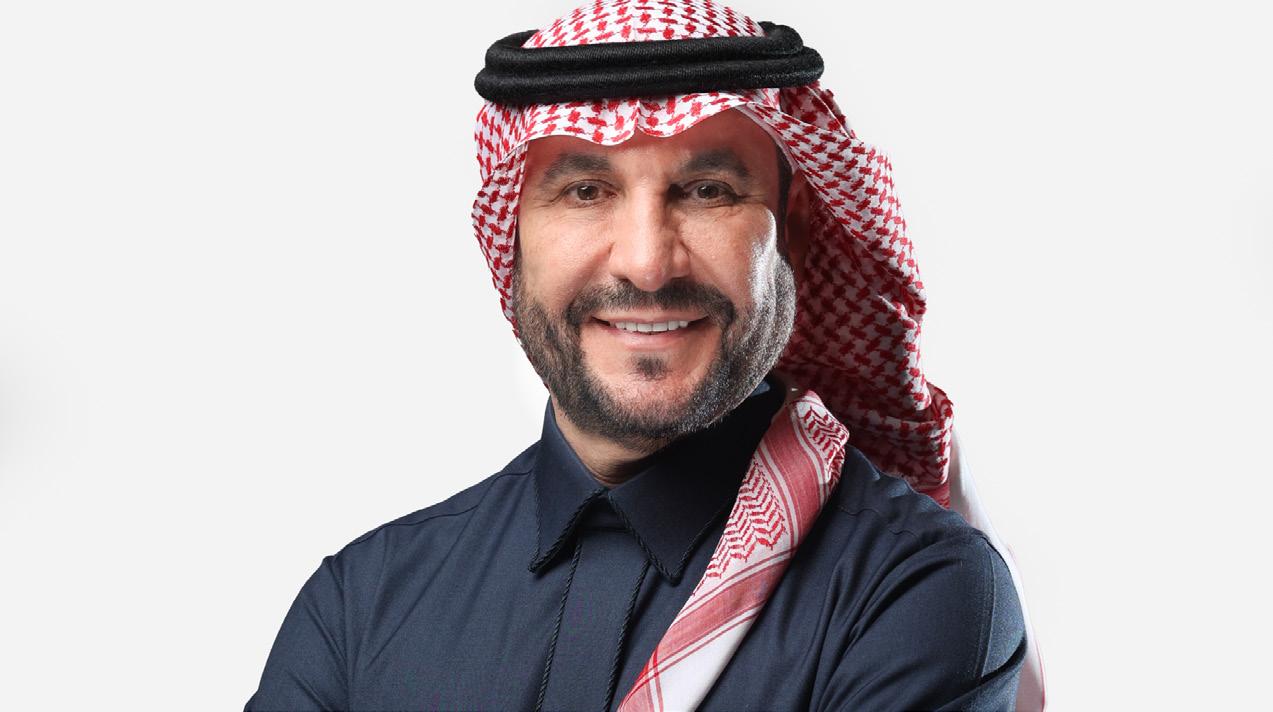
www.internationalfinance.com

Director & Publisher Sunil Bhat
Editor-in-Chief

Sanjay Kumar
Editorial
Prajwal Wele, Agnivesh Harshan, CL Ramakrishnan, Prabuddha Ghosh
Production Merlin Cruz
Design & Layout
Vikas Kapoor
Technical Team
Prashanth V Acharya, Sunil Suresh
Business Analysts
Alice Parker, Indra Kala, Stallone Edward, Jessica Smith, Harry Wilson, Susan Lee, Mark Pinto
Business Development Managers
Christy John, Alex Carter, Gwen Morgan, Janet George
Business Development Directors
Sid Jain, Sarah Jones, Sid Nathan
Head of Operations Ryan Cooper Accounts Angela Mathews
Registered Office INTERNATIONAL FINANCE is the trading name of INTERNATIONAL FINANCE Publications Ltd 843 Finchley Road, London, NW11 8NA
Phone +44 (0) 208 123 9436
Fax +44 (0) 208 181 6550 Email info@ifinancemag.com
Press Contact editor@ifinancemag.com
Associate Office Zredhi Solutions Pvt. Ltd. 5th Floor, Sai Complex, #114/1, M G Road, Bengaluru 560001 Ph: +91-80-409901144


A competitive market does not require a "magic number" of network operators, according to Britain, which set the goal of bringing next-generation 5G mobile service to inhabited areas by 2030. All four of the country's mobile networks—BT's EE, Telefonica's O2, Liberty Global's Virgin Media O2, and Vodafone are implementing 5G. Currently, at least one carrier can provide basic 5G coverage to 77% of the population. By the end of the decade, Britain said it intended standalone 5G, also known as 5G Plus, to be widely accessible, opening the door to new technologies like driverless cars, robotics, and drones.
A software upgrade that would allow investors access to more than $30 billion of the digital tokens is scheduled for the second-largest cryptocurrency, Ether. Investors will be able to redeem an offshoot of ether tokens that they have deposited in exchange for interest on the blockchain network during the previous three years thanks to Shapella, the most recent upgrade to the Ethereum blockchain. According to data company Dune Analytics, these so-called "staked ether" tokens currently make up around 15% of all ether tokens and are valued at about $31 billion. The changes will lead to heightened volatility for ether, investors predicted.
The private equity firm Blackstone Inc announced that it had raised $30.4 billion for its newest global real estate fund as it seeks to expand in the sector. Blackstone Real Estate Partners X is a 48% larger real estate fund than the company's last one, which closed in 2019. Blackstone has shifted away from assets like traditional offices and malls that are suffering from a post-pandemic adoption of flexible work and spike in e-commerce, concentrating its portfolio on logistics, rental housing, hotel, lab office, and data centres. Sector selection has never been more critical, Ken Caplan, CEO of Blackstone said.
HP announced in a security bulletin that it would take up to 90 days to patch a critical-severity vulnerability that impacts the firmware of certain business-grade printers. The security issue is tracked as CVE-20231707 and it affects about 50 HP Enterprise LaserJet and HP LaserJet Managed Printers models. The company calculated a severity score of 9.1 out of 10 using the CVSS v3.1 standard and notes that exploiting it could potentially lead to information disclosure.


MOHAMED BIN ZAYED
CROWN PRINCE OF ABU DHABI
According to State Finance Minister Shehan Semasinghe of Sri Lanka, the World Bank has promised to continue supporting the island nation's efforts to stabilise its economy and speed up its economic recovery. The World Bank Group extended its assistance to Sri Lanka, according to State Finance Minister Shehan Semasinghe, who made the statement while in Washington for the 2023 Spring Meetings of the World Bank Group and the International
Monetary Fund. In the meeting, Semasinghe met with the World Bank's Managing Director of Operations, Anna Bjerde, together with Central Bank Governor P. Nandalal Weerasinghe and Secretary to the Treasury K. M. Mahinda Siriwardana. According to the report, the Minister said the discussion focused on how Sri Lanka’s reform agenda will support its economic recovery. He also interacted with the World Bank team that specialised in interventions.
He was recently named the Crown Prince of Abu Dhabi, the oil-rich capital of the UAE. He is the eldest son of UAE President Sheikh Mohamed bin Zayed Al Nahyan.

AKBAR AL BAKER

CEO QATAR AIRWAYS GROUP

Al Baker has been at the helm of Qatar Airways. He oversees a team of more than 41,026 people. The group reported 78% increase in revenues of $14.4 billion.
CEO ENOC GROUP
The group has 30 subsidiaries and employs more than 9,000 people. ENOC has a total of 162 fully operational service stations around the UAE.

As the SNB deposited the cash with Credit Suisse, sight deposits increased from 515 billion in midMarch to a peak of 567 billion francs Ukraine stated in June 2022 that it hoped to earn 1.5 billion euros by the end of the year from electricity exports to the EU
According to data published by the central bank, Credit Suisse has already paid back some of the emergency liquidity offered by the Swiss National Bank (SNB), signalling an ebbing of the liquidity crisis which triggered the lender's fall. Sight deposits - cash held by commercial banks overnight with the SNB - fell by 31 billion Swiss francs ($34.3 billion), the data showed.
The drop was the second-largest decline ever, trailing only the time when the SNB began removing market liquidity after ending zero interest rates in September of 2022. Sight deposits have increased recently as a result of Credit Suisse receiving emergency liquidity injections to prevent a bank run as anxious customers withdrew their money. As a last-ditch effort to save itself, the lender said last month that it sought to borrow up to 50 billion francs from the SNB. The data said that confidence has been lost in the bank due to their number of mistakes. The SNB also provided an additional 200 billion francs in liquidity following a state-sponsored takeover by rival UBS.
As the SNB deposited the cash with Credit Suisse, sight deposits increased from 515 billion in mid-March to a peak of 567 billion francs. However, the rising trend reversed as sight deposits decreased to 532 billion francs. The SNB, UBS, and Credit Suisse all declined to speak publicly on the situation.
An economist at J.Safra Sarasin named Karsten Junius said the reduction may be linked to Credit Suisse repaying part of the emergency liquidity it had borrowed and no longer needing to rely on the support of the central bank, Reuters reported.

"Confidence in the bank has been restored by the UBS merger, and from this data, it would appear customer outflows have stopped. A bank run has been stopped by the SNB coming in and offering massive liquidity and customers are reassured by UBS being there too. Credit lines from other banks would also appear to have been re-established," Junius said.
Sight deposits would have decreased as a result of the SNB's possible involvement in the forex markets, Junius added.
Ukraine's energy minister announced that electricity shipments to Europe have restarted after being halted in October when Russia started mounting frequent missile and drone attacks targeting vital energy facilities. The strikes resulted in widespread power outages that affected both businesses and residents, prompting workers to put in extra hours trying to fix the grid.
Energy Minister German Galushchenko said, "We have resumed exports, adding that Russia did not succeed at all at destroying our energy system."
The primary market for energy exports from Ukraine is the European Union. Despite the resumption of exports, according to Galushchenko, the country's first priority remains the provision of electricity to its own citizens.

"We hope to reach the export volumes that we had last year. We plan and will conduct negotiations to increase them because today's reserves in the system allow us to do that," he said in televised comments.

Ukraine, which once exported electricity to Moldova, Hungary, Slovakia, and Poland, stated
in June 2022 that it hoped to earn 1.5 billion euros ($1.64 billion) by the end of the year from electricity exports to the EU.
"There are currently plans to increase cross-border traffic between Ukraine and Poland, which will increase exports," Galushchenko added.
In order to look into Russian airstrikes on the power grid, the chief prosecutor of the International Criminal Court travelled to Ukraine in February. According to Kyiv, the strikes were meant to scare regular residents. The military of the adversary had to be weakened, according to Moscow.
The airstrikes resulted in power outages in the eastern and central regions of Kharkiv and Poltava. The mayor of Kharkiv, Ihor Terekhov, described the damage in the city as “colossal” and they advised residents to be patient as water, electricity and heating were out back then.
In response to attacks, the US national security council spokesperson, John Kirby, said Russia was trying to "put fear into the hearts of the Ukrainian people and to make it that much harder on them as winter is now upon them."
Apple hopes to achieve carbon neutrality throughout its entire supply chain and product lifecycle

DOE intends to dramatically change how it determines the petroleum-equivalent fuel economy rating for EVs
Apple announced that it had increased its financial contribution to a fund it had set up two years prior to investing in initiatives that reduce atmospheric carbon. The Restore Fund, which the iPhone manufacturer established in 2021 with a $200 million commitment, will receive up to an extra $200 million in investment, according to the company. The additional funding is anticipated to help the fund launch new initiatives and double its prior target of removing approximately one million metric tonnes of carbon dioxide annually, the company said. Apple hopes to achieve carbon neutrality throughout its entire supply chain and product lifecycle, by 2030. The fund is established with NGO Conservation International and Goldman Sachs Group Inc.
The dollar dipped against most major currencies, with the exception of the yen, with investors anticipating US inflation data due for publishing would provide some insight into when US interest rates will peak. The US dollar index decreased 0.07% to 102.05 when measured against a basket of currencies. The euro moved up 0.12% to $1.0926, while the pound gained 0.02% to $1.2430. Both currencies are now trading above their anticipation. According to a Reuters poll of economists, the US inflation data for March is predicted to come in at 5.2% year-over-year, down from 6.0% earlier, while core inflation likely edged up to 5.6%. It could be the difference between a 25bp hike at the next Fed meeting.




In order to achieve government fuel economy standards, the US Energy Department (DOE) proposed lowering the mileage ratings for electric vehicles (EVs), a move that would compel automakers to offer additional low-emission vehicles or upgrade current ones. For use in the National Highway Traffic Safety Administration's (NHTSA) Corporate Average Fuel Economy (CAFE) program, DOE intends to dramatically change how it determines the petroleum-equivalent fuel economy rating for electric and plug-in hybrid vehicles. "Encouraging adoption of EVs can reduce petroleum consumption but giving too much credit for that adoption can lead to increased net petroleum use," DOE said in its proposed regulation.







Ahli Bank in Oman reported that its board had rejected a merger proposal from Bank Dhofar, Oman's second-largest institution. A non-binding merger offer from Bank Dhofar was rejected by Ahli Bank's board, which is partially owned by Bahrain's Ahli Bank. The smaller lender disclosed that it had received a proposal to merge with Bank Dhofar, which would have resulted in an organisation with assets worth more than $19 billion. According to financial statistics, Ahli Bank in Oman has around $7.9 billion in assets, compared to $11.2 billion for Bank Dhofar. A binding merger agreement between HSBC Bank Oman and regional rival Sohar International Bank was signed last year; the arrangement received central bank approval in February.




of people shifting from petrol vehicles to EVs
In a housing market crash, you would typically see a 20% to 30% drop in home prices and a decline in home sales—far more than what’s currently happening
According to the National Association of Realtors, mortgage rates continued to decline in the United States, the new house sales data show that more buyers are entering the market. For the first time in almost 11 years, home sale prices decreased year over year (y-o-y) in February, and total home sales experienced their greatest monthly percentage gain since July 2020. However, many experts have mixed opinions on how much further home values will fall this year.
The data shows that there is still a shortage of homes in the country. Those who bought homes recently at historically low loan rates are continuing to live in them. The difficulty of affordability for many people, especially first-time homeowners, is perpetuated in part by tight inventory constraints that prevent prices from declining.
As property prices continue to rise year over year, they are not as startling as they were at the beginning of 2022. Experts say, how much further home prices dip in 2023 will likely depend on where mortgage rates go.
Housing experts continue to keep a close eye on
the economy as the industry moves to the first half of 2023 after being pulled in many different directions by factors like high inflation, highinterest rates, persistent geopolitical uncertainty, and fear of recession.
However, there are some promising trends developing. According to the National Association of Realtors (NAR), the median price of an existing home sold in February decreased by 0.2% to $363,000 dollars from the same month last year. This brings to an end a record-breaking run of 131 straight months of year-over-year gains, despite a 14.5% increase from January to February in total existing-home sales, which ended a 12-month streak of declining sales. According to NAR, these sales were down 22.6% from a year ago.
According to preliminary data from the US Census Bureau and the US Department of Housing and Urban Development (HUD), housing starts increased by 9.8% in February, contributing to the creation of much-needed inventory. According to Freddie Mac, mortgage rates decreased slightly in mid-January and were 6.42% for the week ending February.
Since the housing crash of 2008, when the construction of new homes plummeted, there has been a problem with low housing inventory. It has not entirely recovered—and won’t in 2023. In contrast to earlier downturns, the housing supply has remained
As property prices continue to rise year over year, they are not as startling as they were at the beginning of 2022
stuck at close to historic lows, supporting demand and maintaining higher home prices.

Inventory has a 2.6-month supply at the current sales pace, which is low by historical standards but up from 1.6 months a year ago, according to NAR. Industry analysts have a pessimistic assessment of when inventory will eventually stabilise based on this and other data.
"I believe that we are likely to see low inventory continue to vex the housing market throughout 2023," says Rick Sharga, executive vice president of market intelligence at ATTOM Data. And with 70% of homeowners sitting on a mortgage rate of 4% or less, Sharga says we are unlikely to see an inundation of homes soon, the Forbes Advisor reported.
On the other hand, there are some positive signs present in the field of home construction. According to the US Census Bureau and HUD, single-family construction which started in February jumped by 9.8% and building permit applications by 13.8% after five straight months of losses.
The most recent data from NAHB/Wells Fargo Housing Market Index (HMI) on builder outlooks also showed optimism. The HMI index, which measures builder confidence, increased by two points, from 42 to 44. After 12 straight months of declines, this is the third consecutive month-over-month improvement. Experts say, there will need to be more consecutive upticks before seeing a meaningful resurgence in new construction because builder confidence is still low. An index of 50 or above suggests more builders predict excellent conditions ahead.
Experts also stated that the Federal Reserve is making matters worse by consistently raising the federal funds rate. Federal Reserve Chair Jerome Powell answered inquiries regarding the Fed's strong monetary tightening strategies in its attempts to control inflation during a semi-annual hearing before the Senate Banking Committee.
During a conversation with Senator Raphael Warnock, Jerome Powell noted that boosting the central bank interest rate increases borrowing costs for businesses that build new houses and
makes financing and expanding manufacturing for suppliers more expensive. Additionally, he acknowledged that high fixed mortgage rates deter homeowners from selling their homes when they have a low fixed-rate mortgage. These conditions all put further pressure on the inventory, Jerome Powell explained.
"The bottom line is that there really isn’t a likely scenario that leads to inventory levels approaching historically normal numbers in 2023, which means that prospective homebuyers are still going to have to work hard to find something to buy," Sharga said.
Due to the continued inventory problem that is keeping home prices elevated, many analysts anticipate that the housing market is more likely to correct itself from the double-digit percentage rises which are seen in home prices over the past several years rather than crash.
"Home prices will be steady in most parts of the country with a minor change in the national median home price," Sharga said.
However, some experts who follow the housing market predict that some areas may experience an increase in home sales and prices, particularly in places where home values have remained reasonable over the past few years when compared to the median income.
"We are estimating about a 5% drop nationally. Some markets, believe it or not, will probably see prices continue to increase," Sharga added. Senator Raphael Warnock agrees, pointing out that there
would be increases or decreases in housing prices depending on the region, with cheaper places likely to witness price rises and more costly ones likely to see falls.
According to some analysts, a significant proportion of borrowers have positive equity in their houses, placing today's homeowners in a considerably stronger position than those who were recovering from the 2008 financial crisis. As a result, there is little chance of a home market crash.
"Homeowner equity is at the highest level it’s been in the past several decades, so homeowners have a lot of value in their home," Nicole Bachaud, an economist at Zillow, said.
In a housing market crash, you would typically see a 20% to 30% drop in home prices and a decline in home sales—far more than what’s currently happening. Another crash symptom that’s been missing is a jump in foreclosure activity.
"I think we’re more likely to see the market cool, rather than crash," Sharga said.

Even with the gradual increase in foreclosures that followed the COVID-19 foreclosure moratorium's expiration in September 2021, they are still below pre-pandemic levels.
The Year-End 2022 US Foreclosure Market Report from ATTOM Data shows that the number of foreclosures was 34% lower in 2022 than it was in 2019.
"It seems clear that government and mortgage industry efforts during the pandemic, coupled with
the United States
2013 - 302
2014 - 324
2015 - 363
2016 - 371
2017 - 378
2018 - 397
2019 - 395
2020 - 392
2021 - 389
2022 - 391
From 2015- 2022 (In Million Dollars)
Source: CensusHUD
a strong economy, have helped prevent millions of unnecessary foreclosures," Sharga said.
Foreclosures increased by 2% from December to January 2023, up 36% from the previous year. The fact that many homeowners, including those who are having trouble making payments, have seen a significant increase in their property values recently is a significant distinction between the current housing crisis and that of 2008. That means they still have equity in their homes and are not underwater—when they owe more than the house is worth.
Sharga noted that borrowers in foreclosure are leveraging the positive equity in their homes by refinancing their homes or selling for a profit. "It seems likely that this is a trend that will continue in 2023," Sharga said.
In any market, purchasing a home is a very personal choice. Homes are typically the biggest single investment that a person will make in their lifetime, therefore it's important to have a strong financial foundation before making a purchase. Based on your down payment and interest rate, use a mortgage calculator to determine your estimated monthly housing costs.
Neda Navab, president of the US region at Compass, a real estate tech company, said, "Trying to predict what might happen this year is not the best home-buying strategy. Buyers sitting on the sidelines today in anticipation of lower prices tomorrow may end up disappointed."
Neda Navab anticipates a slight reduction in home prices in the hotter markets of recent years, but she does not anticipate a widespread, nationwide price decline similar to that which followed the 2008 financial crisis. Experts advise buying a home based on your wants and budget rather than holding out for substantially lower pricing. It is possible that a house you like in a neighbourhood you like that also meets your budget is the one for you. But, if you make too many compromises to obtain a home, you can experience buyer's remorse and be forced to sell the property.

According to the CoreLogic Market Risk Indicator (MRI), which
provides a monthly assessment of the overall health of the nation's housing markets, Bellingham, Washington, is at extremely high risk (70%-plus chance) of experiencing a decrease in home values over the coming 12 months. Other areas with a very high probability of price drops include Crestview-Fort Walton BeachDestin, Salem, Merced, and Urban Honolulu in the United States.
A probability score (from 1 to 100) is provided by CoreLogic Market Risk Indicators, a multiphase regression model, for the likelihood of two scenarios for each metro: a price fall of more than 10% and one of less than 10%. The likelihood of a price cut increases with a score. CoreLogic is a leading global provider of property information, analytics, and dataenabled solutions.
To make homes more accessible, the housing market may require 'a correction.' Since the beginning of 2012, the national housing market in the United States has increased annually. All 50 states and the District of Columbia saw an increase in home prices during the second quarters of 2021 and 2022. Buyers continue to raise property prices in today's housing market, which causes homes to sell quickly. To win bidding wars in the fiercely competitive home market during this pandemic, the United States witnessed overzealous purchasers submit offers before visiting the property and waive contingencies.
editor@ifinancemag.com
Although electric vehicle sales appear to have a future, there are worrying shortages of essential materials, which may hinder automakers' ability to meet demand while maintaining low prices

Electric vehicle (EV) sales are soaring like never before. Results for the first quarter indicate nothing but happy news for the electric vehicle makers. The auto industry claims good performances in electric vehicles despite supply chain challenges and higher upfront prices.
Major auto player Ford declared a growth rate of 139% while Volkswagen witnessed a 65% increase, and Tesla registered a rise of 81%
Concerns among consumers over rising oil costs and tax incentives are thought to be the reason for the recent amazing performance of electric vehicle sales.
Global oil prices have skyrocketed as a result of rising inflation following the COVID pandemic recovery and the Russian invasion of Ukraine. The average price per gallon in the US recently stood at $4.25,
up from $2.92 a year ago.
While increasing gas prices have prompted American consumers to think about purchasing electric cars, tax incentives, such as the federal tax credit of $7,500, have also played a huge role in inspiring many to switch to electric vehicles.

Although electric vehicle sales appear to have a future, there are worrying shortages of essential materials, which may hinder automakers' ability to meet demand while maintaining low prices.
The shortages are caused by a number of issues, including sanctions against Russian metals, COVID
lockdowns in China, embargoes against minerals from Xinjiang, and the backlog in US mining project approvals.
The most pressing scarcity is lithium, a vital component of batteries. Compared to last year, the cost of lithium battery cells has already risen from $105 to $160 per kilowatt-hour, and if supply constraints are not resolved, costs will keep increasing.
There have long been recommendations for producing more lithium batteries. It was foreseen by Tesla CEO Elon Musk in November
2021. He made light of the possibility that Tesla would have to enter the mining industry later in April on Twitter. But it's not just Tesla alone; due to a lack of batteries, Volkswagen has already sold its entire electric vehicle inventory in the US.
China currently dominates the lithium battery business. It refines 80% of the world's raw materials, owns 77% of the world's cell capacity, and produces 60% of the world's battery components. Lockdowns imposed by the government have had a catastrophic impact on world productivity. These slowdowns not only endanger American industry but also national security because these batteries are employed in electric vehicles and a variety of US defence technology.
The public and private sectors must collaborate to boost investments, advance mining and production in the United States and the Western Hemisphere quickly, and diversify supply chains to lessen our reliance on Chinese lithium in order to handle this threat.
Businesses have been stepping up to the plate and investing in electric vehicles and the essential components required for making these vehicles.
Tesla just purchased 10,000 acres in Nevada to start mining and established a Gigafactory in Texas to act as its primary manufacturing plant. SK, a South Korean firm, is getting ready to launch a sizable battery factory in Georgia where it will produce batteries for Ford and Volkswagen.
As part of its plan to obtain lithium from the Salton Sea in California's Imperial Valley, where the Berkshire Hathaway Power Plant is attempting to produce up to 600,000 tonnes of lithium carbonate annually, GMC announced that it will invest in Controlled Thermal Resources, a business that uses geothermal energy to extract lithium.
Despite these actions being praiseworthy, the problems cannot be resolved by the private sector on their own. The Joe Biden administration must promote divestment from key minerals made in China.
The White House has so far set aside more than $7 billion to improve the country's battery supply chain. As part of that investment, $3.1 billion, according to Joe Biden, will be given to businesses that produce and recycle lithium batteries. The Defense Output Act was also approved by the White House in March, which will significantly enhance battery production.
However, the Biden administration needs to go further. While exploring minerals that can replace lithium in batteries, the White House ought to offer incentives to firms willing to invest in battery plants in the US. China operates 93 large battery plants, compared to just 4 in the US.
New mining facilities must be approved quickly by the federal government. Eliminating regulatory barriers to mining will not only boost investment but also shorten the response time for urgent shortages, and solve a critical need in national security.
Finally, the US sector needs to diversify its supplies in order to completely lessen its reliance on lithium. Some firms have already identified viable solutions.
Iron-based grid batteries are being developed by ESS Inc. of Oregon, which will reduce the need for lithium and increase the supply of electric vehicles. Since the ocean is thought to contain up to 180 billion tonnes of lithium, a German Tech Institute assumes they can filter seawater to get additional lithium.

With everything said, the electric vehicle is the wave of the future for the auto industry, but for this revolution to truly succeed, the public and private
sectors must collaborate to reduce the regulatory burden on mining and production as well as to challenge China's dominance by promoting investment in domestic or "near-shore" lithium resources and expanding the range of practical battery options.
The problem does not lie only with the shortages of essential materials but also with the urge for people to shun fossil fuel-powered vehicles and opt for electric vehicles.
After persuading a reluctant Congress to invest heavily in electric vehicles, the White House must now convince tens of millions of hesitant drivers to buy them.
The administration aims to stop fossil fuel-powered transportation as electric cars struggle to shed their image as unreliable and difficult to charge. But unfortunately, GOP lawmakers are spreading these perceptions to harm the
administration’s plan.
Federal agencies are hurrying to improve electric vehicle driving and boost public confidence by providing 500,000 new chargers and forming a new office to coordinate the changeover.
Additionally, the climate measure Joe Biden signed recently combines incentives for car buyers with prizes for carmakers who increase electric vehicle production and shift manufacturing lines to the US, providing the firms with a new impetus to embrace the change and promote the vehicles.
Even electric vehicle loyalists are frustrated by wait lists and increased pricing, adding to the administration’s difficulties.
Gregory Pierce, co-director of UCLA’s Luskin Center for Innovation, predicts a rough few years. Even with subsidies, there aren’t enough
affordable electric vehicles.
Robert Fernatt, director of the state’s electric auto association, said it’s “very tough.” A vast region of West Virginia has no fast charging stations for anything but a Tesla, an expensive premium car. He advises out-of-state travellers to avoid West Virginia.
Even California, the country’s electrification pioneer, faces challenges in accelerating the change. Even with state and federal subsidies for low-income drivers that could soon add up to $17,500 for a used model, getting drivers into the cars is difficult.
At whatever price, selling most drivers on the autos will take time. According to an April survey by Consumer Reports, most drivers would not contemplate buying or leasing an electric vehicle today.
there has been expensive and resourceintensive, mainly focusing on a few states. As a result, only 5% of new automobiles sold are zero-emission, and nearly half of those sales are in California.
Joe Biden’s aim of selling half of all new automobiles as electric by 2030 will require many more states to adopt California’s and Massachusetts’ intensive outreach and regulatory measures.
However, not everyone is on board. The GOP is still working for the fossil fuel lobby, which wants to slow down the transition to green energy.
Meanwhile, Lucid Group, a Californiabased electric vehicle manufacturer, has announced that it would be opening its first overseas manufacturing plant in Saudi Arabia. Apart from this, the Kingdom of Saudi Arabia will give up to $3.4 billion in financing and incentives over the following 15 years.
According to a press release issued by the luxury automobile company recently, the manufacturing plant would be able to build 155,000 vehicles per year and will first serve the local market. The automobiles will thereafter be exported to other countries.
Currently, Lucid’s factory which is based in Arizona can produce 350,000 units a year. Furthermore, Saudi Arabia’s minister of funding, Khalid al-Falih has stated that the country needs electric vehicle battery manufacturers, suppliers, and others who will open stores in the country, potentially creating 30,000 jobs.

Khalid al-Falih concluded by stating that Saudi Arabia is dedicated to its transition away from traditional fuels and sustainable energy.
Many owners of the 2.5 million electric cars in the US love them. However, getting editor@ifinancemag.com

ccc offers comprehensive solutions designed to modernize financial businesses as per the outlook of the Saudi regime

is a Saudi Arabia-based leading Customer Experience Management provider, which is progressively pioneering the advancement of the Business Process Outsourcing (BPO) industry in the country through local, digitized services with international standards such as COPC OSP standards.
While ccc empowers businesses in Saudi Arabia and beyond to strategically optimize operations for various service lines including Customer Lifecycle Management, HRO, F&A for multiple industry segments, it also boosts operational efficiency through an enriched experience to achieve more impactful and long-lasting business outcomes.
ccc is the subsidiary of Saudi Telecom (stc), the largest telecommunications provider in KSA and is headquartered in Riyadh. ccc operates from three strategic locations across the country, assisted by stateof-the-art facilities and technology that ensure the best quality, consistent services to its customers.
The company has employed more than 6,000 people, including 2,300 women, so far with a very high Saudization rate. With digital technology playing an increasingly important role within the large socioeconomic set-up, ccc’s approaches make it well-placed to take advantage of the opportunities it holds. The company has a wide range of solutions spanning the entire spectrum of customer care, technology services, digital businesses, consulting, back office, and all other specialized services focused on ccc’s primary aim to provide customers with an enhanced experience.
BPOs enable companies to streamline their operations by undertaking most of the monotonous duties from their core teams, thus allowing them to focus on important responsibilities which result in increased productivity and higher cost reductions.
The industry is currently on the evolution path
and here are some other key trends ccc thinks will happen in the Saudi’ outsourcing industry going forward:
Digitization will give BPO services a new lease of life
Digitization has broadened the range of services that the future of the BPO industry can provide. ‘Traditional’ outsourcing has declined as new technologies are offering newer alternatives.
Robotic Process Automation (RPA) is beginning to take over, supported by Artificial Intelligence (AI), which can lead to more agile outsourcing services offering customers higher quality experiences. Technological advancements and solutions will change the way businesses interact, engage with their customers and fulfil their service obligations.
BPO providers will be aiming at automating firstlevel customer interactions and work processes with tech-like chatbots instead of completely relying on manual tasks. This will help lower attrition in the long term. Automation will greatly impact the type of services provided by BPOs.
During and post the COVID pandemic, remote/ hybrid work culture has become the sort of the new normal. Going forward, BPOs will increasingly gain from utilizing part of the
ccc by stc

workforce as it can reduce a great number of physical overheads.
A combination of both onshore and offshore outsourcing models can optimize companies’ operational costs. Known as right shoring, the process involves outsourcing complex and higher-valued customer interactions onshore, while moving regular high-volume tasks to cheaper locations.
Traditional dialogue-based IVR (Interactive Voice Response) systems with complex menu trees don’t meet the needs of the tech-savvy consumers of the 21st century. IVR systems are getting augmented with AI technology, thus significantly improving the efficacy of self-service systems.
The BPO sector will adopt new trends like the Outsourcing of Knowledge Processes (KPO), Outsourcing Legal Services (LPO), Research Process Outsourcing (RPO), services aided by Information Technology Enabled Services (ITES).
The BOP industry will continue to be a customercentric one and the changes and new trends here will all be based on customer experiences. There is a growing demand for CX consulting services, thus providing new growth avenues of growth for contact centres.
While omnichannel service delivery and customer analytics solutions are the key trends shaping the future of CX, a few other important aspects for delivering top-notch customer experience and differentiating it from competitors are providing personalized services, having efficient addressing of issues, and gaining the customer trust through accuracy and follow-ups.
Enterprises are increasingly looking to partner with operators who are not only capable of embracing the customer-centric approach but also can proactively suggest innovative solutions for transforming their CX operations.
BPOS need to focus on three global trends that are improving customer experience: CX consulting: Several operators are expanding their portfolio to offer CX consulting services – from conceptualization to integration and implementation of comprehensive customer-centric solutions to enhance CX.
Omnichannel CX: Customers are now relying on multiple interactive platforms to connect with businesses and this approach focuses on having consistent communications and engagements across all channels.
CX analytics: This is the key in getting the context on-point for every customer interaction. It also captures the most updated customer insights, helping enterprises make strategic decisions on products and services.
Chief Financial Officers (CFOs) these days have to face immense pressures, given the economic environment and the changing global

landscapes. Apart from meeting the dual mandates of leading their financial functions with digital transformation, these professionals also need to ensure that their organizations accelerate on the progress path.
This factor is guiding businesses now to use outsourcing, in order to drive transformational changes, improve business results, and create profit-driving platforms. ‘Vision 2030’ is about building a strong, thriving, and stable Saudi Arabia that provides fair economic opportunity for all. Another pillar of this vision is the determination to become a global investment powerhouse based on the idea that the country holds strong capabilities and these can be harnessed to stimulate the economy and diversify revenues.
There’s an appetite for outsourcing customer care services and the key drivers behind this are improving effectiveness and saving cost. Saudi has a price-sensitive market and this factor makes many


BPO service providers enter a price-war mode to gain a larger market share. On the other hand, a large segment of the market is not quality-driven, especially retail, hospitality, and food.
Thus, clients will evaluate the BPO providers on the prices in higher weightage over the services’ quality. Industries like banking and finance (BFSI) and government services used to be the greatest consumers of BPO services. However, recently, the Council of Cooperative Health Insurance Council (CCHI) and National Cybersecurity Authority (NCA) put pressure on the BFSI sector to insource the BPO services and nationalize the expertise.
Having said that, manpower-based services will witness increased adoption by the government, like facility management, paid parking management, and revenue-sharing business. These types of activities will help further BPO services by some service providers.
That apart, some of the other high-growth verticals are:
E-commerce, which has a 41.0% CAGR (Compound Annual Growth Rate) currently, will continue to grow, but not at the same pace as online shopping becoming mainstream. The market would witness increased competition and the existing platforms will become more efficient in order to deliver better customer service.
Healthcare at 31.6% CAGR as the Ministry of Health deployed several applications and services, apart from increasing its contact centre capacity to respond to citizens' queries related to the COVID-19 medical consultation. The privatization of hospitals will drive the contact centre business both in voice and digital formats.


The government at 15.7% CAGR is looking to rebound from the fall in oil prices and the pandemic, and will invest in the contact centre to cater for the high demand for new services in tourism, culture, sports and investment.
The moderate growth verticals are:
Retail and wholesale at 9.4% CAGR were heavily impacted by COVID, as the pandemic and the resultant social distancing norms refrained consumers from visiting retail shops and diverted them towards e-commerce. Businesses in this field will be under continuous pressure, as they will be forced to opt for cost-cutting measures including renegotiation of outsourcing contracts.
Travel and transport at 7.4% CAGR will have to contend with the large contracts in aviation which will be subjected to heavy negotiation. The sector growth will be supported by the contracts for metro Riyadh and public transportation.

The energy sector at 7.0% CAGR is mainly manpower outsourcing driven. The falling oil prices will result in heavy negotiations with contact centres and BPO providers.
Others at 7.7% CAGR include automotive, pharmaceutical, real estate, manufacturing, agriculture, media, and entertainment. The drop in 2020 was majorly driven by sectors like entertainment and automotive, which will turn to
digital channels to serve their clients. Currently, utility, hospitality, BFSI and telecom are the slowest growing verticals, thus needing steady revival efforts.
Talking about outsourcing, CFOs are still the key decision-makers. Saudi Arabia is currently experiencing a growing demand for front-office process outsourcing. Over 77% of the spending can be attributed to front-office processes while around 23% can be attributed to back-office activities ’outsourcing. The front-office outsourcing market will grow at a five-year CAGR of 10.2% while the back-office market, although small, will grow at a CAGR of 9.5% in the same timeframe.
The aim is to improve the business environment, so that the economy grows and flourishes, driving healthier employment opportunities and long-term prosperity. This promise is built on cooperation and on mutual responsibility, and ccc has chosen to step in to help the country attain this vision. The ccc F&A spectrum of services can provide businesses with next-generation
capabilities, digital playbooks, and underlying systems that can help their clients to optimize their finance functions and create financial intelligence.
The company also leverages technology, automation, industry and domain expertise to digitally transform F&A (Finance and Accounting) into the value addition of its client enterprises so that these businesses can grow and attract global investments. ccc also offers comprehensive solutions designed to modernize financial businesses as per the outlook of the Saudi regime.
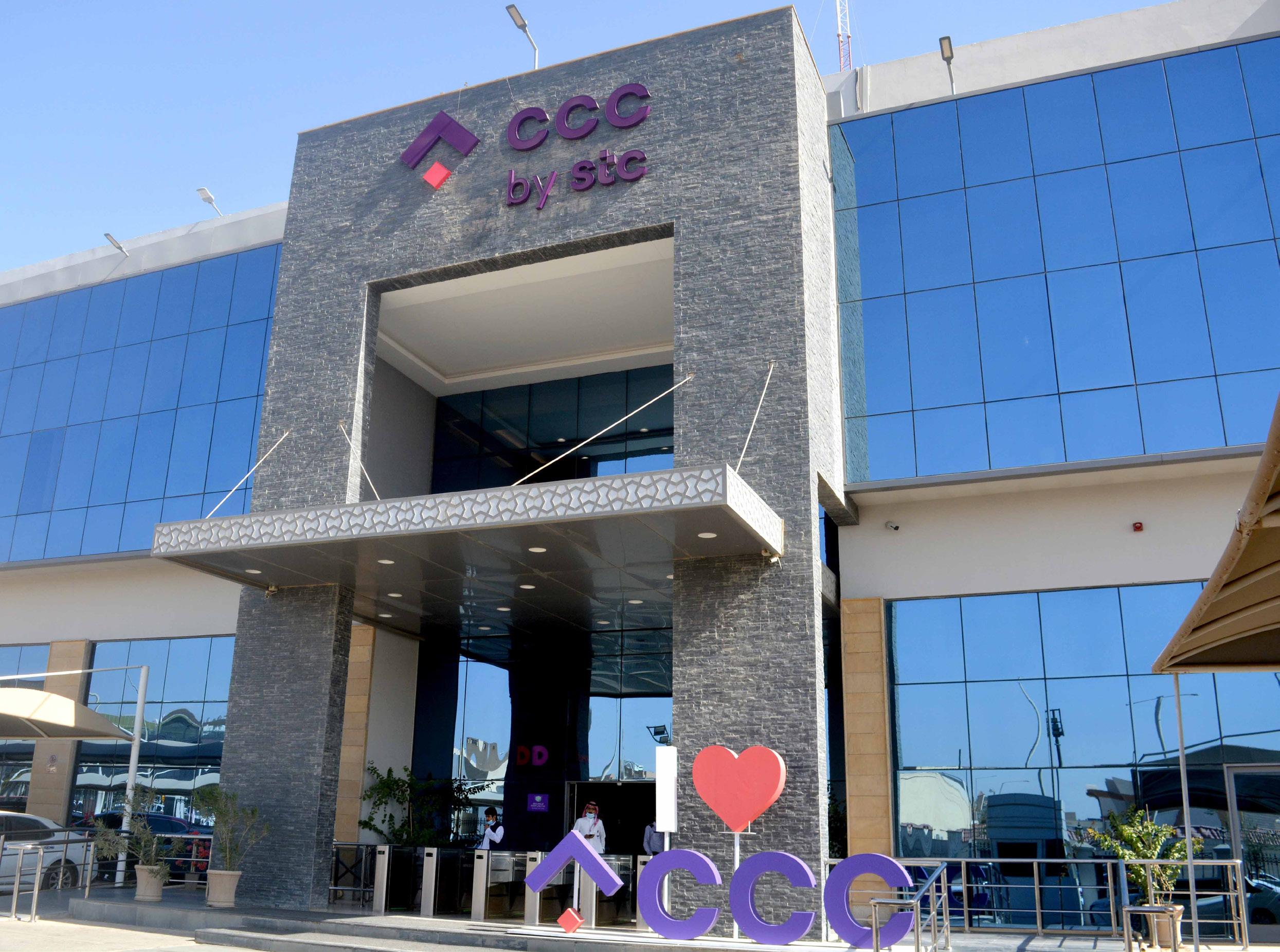
Having a CFO professional to handle the bookkeeping and accounting work is something which remains on top of any company’s priority list. The reason big businesses are choosing to outsource their F&A activities lies in the fact that this option gives them access to highly-skilled, well-trained and knowledgeable financial expertise, which in turn, helps these enterprises to ensure smooth operations,
faster growth and improved cash-flows.
Having an outsourced F&A activity also helps businesses to focus on their core functions and move up the value chain ladder. The choice is between an advanced outsourced accounting team and customized controller/CFO services, but the point here is that the particular activity will transform the concerned business’s finance functions and maintain foolproof accounting, which will help the enterprise to generate a solid brand name.
Having an outsourced F&A activity gives businesses better cost-saving options and a sound ability to solve capacity issues. Some of the other advantages are:
Access to F&A expertise: Outsourcing helps businesses to access the specialized knowledge of highly trained accountants/finance professionals. These individuals have the experience and expertise to produce the best results, irrespective of whatever businesses they are working in.
Higher time and cost savings: Outsourcing is cheaper, as you don't have to face the prospect of facing overhead expenses, which is faced by businesses in case they are hiring and maintaining a team of dedicated inhouse staff to handle the bookkeeping job. Also, the employees get spared from these mundane tasks and
they can use this extra time to give priority to solving other operational issues.
Increased scaling ability: Outsourcing F&A gives businesses the ability to scale up or down their operations based on the workloads. Businesses can increase or decrease the number of people working on projects and not be bound by time or cost constraints to deliver as per clients’ needs.
Better business intelligence & business
continuity: An outsourced accounting team gives businesses the element of proactivity as financial experts can spot red flags beforehand and offer appropriate solutions.

Some of the commonly outsourced services are payroll accounting, accounts payable, and accounts receivable. However, most businesses are now eyeing more strategic and high-level functions such as budgets, forecasts and internal audits. That’s where Digital Finance & Outsourcing comes into the picture.
This solution has the technological advantage, as it brings from Robotic Process Automation (RPA), automated bill payments, and enterprise
resource planning (ERP) solutions, apart from being adaptable towards global operating models that help companies save on time and resources of manual F&A.
Digital Finance & Outsourcing is, however, not supposed to replace the manual finance functions in the client companies. It’s more about the effective harmony between the man and the machine, which in turn, will help companies to work more on operations and sales while ensuring that their daily mundane and repetitive financial tasks are being taken care of consistently.
Digital finance depends on proven cloud technology solutions that provide comprehensive finance resolutions, starting from key performance indicators (KPIs), metrics, to financial reporting automation, in order to ensure timely and accurate outcomes. Digital Finance & Outsourcing simplifies and standardizes processes to enable companies to develop better benchmarks and meet regulatory requirements faster.
Digital finance advisors also leverage tech to advise clients about how to further their offerings and make them more convenient and accessible to make the digital transformations of businesses a solid one. Ideally, digital transformation through outsourcing should look at enhancing processes in three key areas: automation, analytics and collaboration. Finance companies should look towards SaaS (Software as a service) solutions, cloud migration, and other innovative technologies to assist in the
Some of the commonly outsourced services are payroll accounting, accounts payable, and accounts receivable. However, most businesses are now eyeing more strategic and high-level functions such as budgets, forecasts and internal audits. That’s where Digital Finance & Outsourcing comes into the picture
digitization of their finance functions.
A digital finance department of any company brings these advantages:
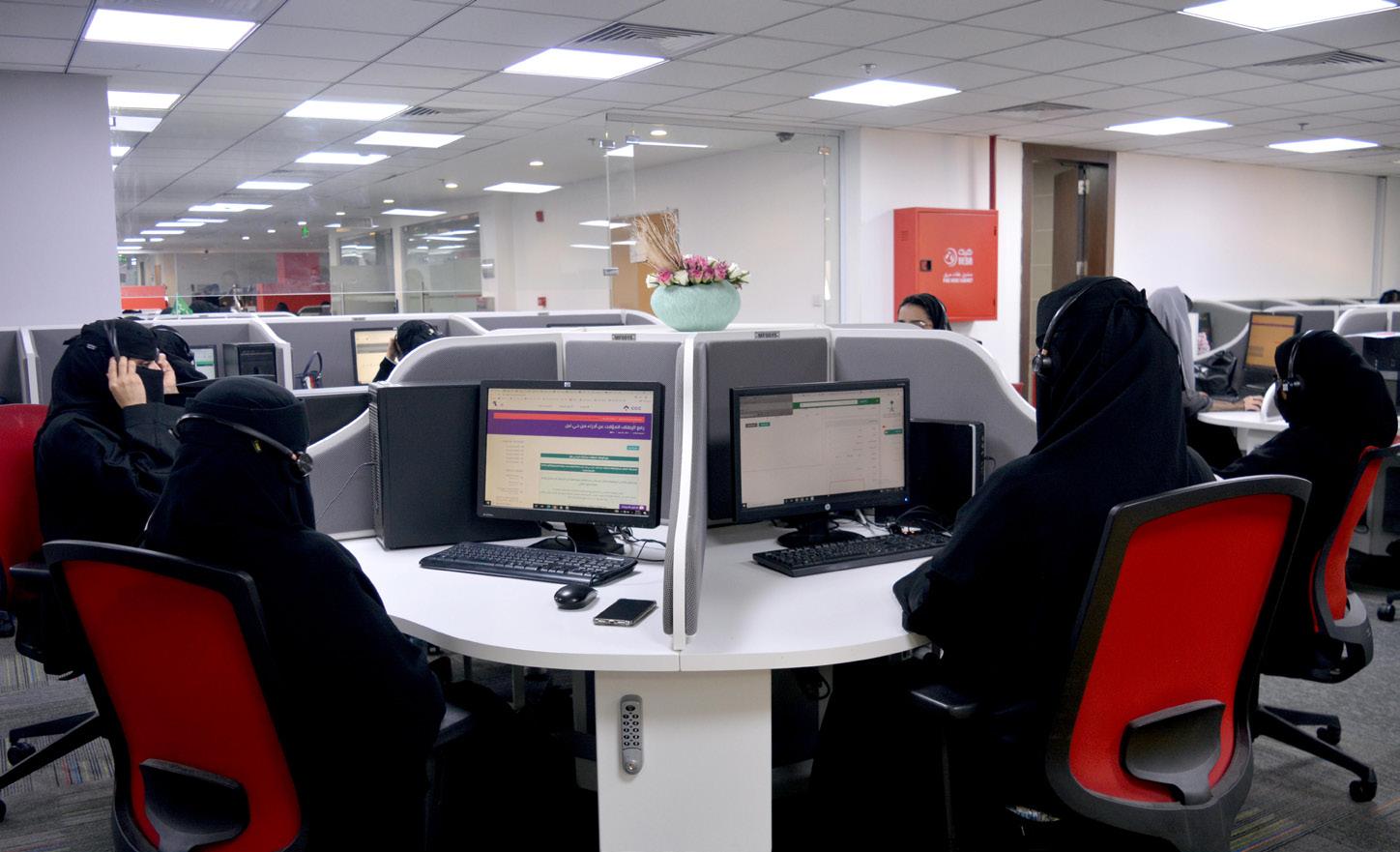
Reduced error margins: With digital F&A, teams get a 360-degree view of their data which makes human errors easier to identify. Also, the data gets updated into a centralized system which makes for better compliance.
Enhanced security: A digitalized system helps businesses to store sensitive data within secure cloudbased systems, and also offers SaaS solutions devised for finance functions that offer sophisticated security processes.
Advanced analytics: Digital finance can give businesses access to advanced analytics by leveraging AI, real-time data processing and innovative machine learning.
Improved employee performance: Digital tools replace the repetitive, tedious tasks that slowdown employee performance and helps to streamline processes such as vendor management, cash flow forecasting, accruals, and audit preparation.
Irrespective of their sizes, businesses have reached a point where they have realized that it pays to collaborate with trusted, proven BPOs that can help make these enterprises optimize operations and make workflows workable, so that these businesses can stay resilient and relevant.
editor@ifinancemag.com



In recent years, the real estate sector has seen disruption due to the advent of new technologies and changing demographics among homebuyers. These issues have impacted all facets of conventional real estate transactions, starting from how properties are listed to typical closing timelines. As a result, many investors are now still determining how the sector’s future will pan out and how they can adjust to these changes. Keep reading to find out how to get ready for the future of real estate, both personally and professionally.
New technology and an influx of finances are causing significant changes in the real
estate sector. This surge in the capital should be taken as a hint that the real estate sector is getting ready for rapid transformations due to the emergence of new digital resources. Most importantly, investors must be prepared for blockchain technology, virtual reality, smartphone apps, and online property listing platforms' influence on all facets of real estate transactions.
Investors will soon notice increased competition among websites that advertise properties, many designed to make it easier for prospective/current owners to acquire/ sell their properties. Although websites like Zillow and Trulia have dominated the market for some time, other websites of a similar nature will still be developed.
Buyers and renters will have clear notions of what they are looking for when shopping for houses, thanks to the popularity of internet listing systems. Investors who want to stay ahead of the curve must adjust to buyers (and sellers) who have instant access to hundreds of real estate listings. Joining the bright home trend and including appliances and other elements compatible with new apps is one approach to stand out. These elements' greater security and energy efficiency appeal to the techsavvy demographics.
Many facets of the real estate transaction process will continue to alter as more smartphone apps get developed. Real estate agents can already sign and share contracts and other papers on their phones thanks to programmes like Docusign and Dotloop. Tenants can pay rent or contact landlords online using other apps like Buildium and RentTrack. As investors look for ways to automate the deal acquisition, property administration, and communications, these apps are anticipated to gain popularity.
Apps that use blockchain technology to support the legal aspects of a transaction are also likely to be released, which will be of interest to investors. They will concentrate on several topics, including exchanging crucial papers and transferring deeds or titles. Blockchain networks boost trust and eliminate intermediaries when purchasing and selling real estate.
Another emerging technology that will have an impact on the real estate industry is virtual reality. Even though 3-D walkthroughs and 360-degree images may be familiar to investors, their use is anticipated to grow.
Investors may boost the number of property viewings without adding extra time or effort by offering prospective buyers a new method to experience properties. Buyers will be able to tour homes without ever going, thanks to recorded 3D property tours.
Investors will be thrilled to learn that virtual reality software will be used for property viewings and may assist renovators in planning their projects. For instance, several apps may enable investors to observe staged rooms and renovations from their mobile phones. In addition, property developers and investors interested in raw land investments may benefit from virtual reality in real estate. According to Forbes, property developers should prepare for virtual reality applications that let users experience finished properties before construction even begins.
According to investors, introducing new technology will generally benefit all parties involved in real estate deals. Investors should consider these impending changes as methods to make business more dependable and efficient rather than worrying about new resources.
India-based proptech firm Square Yards launched its 3D Metaverse platform in August 2022 to showcase the future of real estate search and discovery through a high-end 3D digital twin of the city of Dubai, the next property investment destination. The platform brings cutting-edge technologies such as 3D, AI, VR, AR, and interactive real estate visualisation into play through its Metaverse app.
"With this solution, users can search from over 2000+ potential real estate projects across Dubai through its interactive 3D interface, get complete details of the project, and enter into the
2023: 10.70
2024: 11.30
2025: 11.90
2026: 12.40
2027: 12.90
2028: 13.50

2029: 14.00
2030: 14.60
(In Million Dollars)
Source: statista.com
project metaverse as an Avatar," the company said.
"Imagine searching for properties to buy, sell and rent across Dubai in high-quality 3D at true scale, visit the project building in VR, walk around the amenities and interiors, and interact with residents and salespeople virtually," said Tanuj Shori, the company's Co-founder and CEO, while interacting with the ET.
Rentd, a UK-based company is all set to launch an online property platform for Dubai, which will enable renters and landlords to conclude the entire rental journey online. Features on the platform include 3D virtual tours of villas and apartments to signing contracts digitally.

One of the significant developments in real estate investing is the growing gap between homeowners and real estate agents. As a result, many wonders if listing a home on their own or working with a professional agent are preferable.
Real estate brokers are still in need in the 21st century, and it isn't easy to see a time when they won't be required. Unfortunately, they provide the typical homeowner with far too much value.
To begin with, their bargaining abilities and knowledge of the local real estate market will always help sellers get the best price for their homes, homeowners who attempt to sell a home risk losing money with only one hiccup. The buyer's representative might
negotiate a lower price. Everything may go right with a qualified agent to represent the concerned parties’ interests in a transaction.
Agents have the potential to sell a home more quickly in addition to getting the most money for it. They already have a qualified buyers list in addition to marketing initiatives.
Before the house is formally listed for sale, the proper agent can already have a buyer in mind.
There is no denying that a competent real estate agent is priceless, particularly for those in the investing sector, but a few trends need your attention. For Sale by Owner (FSBO) platforms, in particular, are starting to carve out a niche among a small group of sellers.
In the last two years, almost 17% of homebuyers felt they didn't need to use a real estate agent, according to a poll done for Redfin. The survey, made possible by SurveyMonkey Audience, found that discounted commissions are becoming increasingly common. Onethird of the homeowners who did utilise an agent to buy a house claimed that their representative provided incentives in the form of a refund or savings of more than $500.
Realtors frequently charge 6% of the sales price in exchange for their services. As a result, commissions can exceed $14,000 on a single-family home with a median value of $230,000. At that point, the idea of doing without a Realtor becomes alluring.
Over half of all homeowners in America would consider selling their property without a Realtor's assistance, according to research from ForSaleByOwner. At the same time, 55% of Millennials admitted they planned to offer their house using the "for sale by owner" sales strategy.
With today's consumers, particularly millennials, exerting more control over the purchasing and selling process than ever, the real estate market is undergoing a "dramatic transformation," according to Lisa Edwards, director of the business strategy at ForSaleByOwner.
The peak of the 2015 selling season saw an astonishing 57% growth in listings on ForSaleByOwner, and nothing indicates that the trend won't continue. Yet it's vital to remember that most sellers are from the Northeast. Large cities with large populations, like New York, Boston, and Philadelphia, seem more interested in skipping the agency process. Even the National
Association of Realtors (NAR) agreed that FSBO transactions are more likely to occur in major urban regions.
Today, without the assistance of an agent, [sellers] may quickly comprehend market conditions by using free internet pricing tools, evaluating recently sold homes, and looking at homes currently for sale online, according to Edwards.
Sites like Redfin have proven to be very beneficial for sellers. While typical agents can get away with charging twice as much, Redfin only charges sellers 1.5% of the transaction price. The difference may result in a $3,750 savings for sellers of a $250,000 home.
There is no denying that the way individuals view selling has altered due to internet listing services. Particularly agents have been forced to respond to the development of technology.
A Redfin representative stated that "real estate agents are reacting to increasing competition in the market," adding that traditional brokers had to adapt their business practices to remain competitive.
Of course, there is no reason to think trends will force real estate agents out of business. FSBO and other websites have made it simpler for the typical seller to advertise a home, but real estate brokers still have a position in the industry.
Real estate property markets are anticipated to change when millennials, a new wave of homebuyers, enter the market. The Urban Land Institute report indicates that millennials are beginning to enter the real estate market with an emphasis on suburban locations.
Although suburban house developments are nothing new, the real estate market may see fascinating changes in these locations. It has
been discovered that millennial homebuyers are more interested in walkable neighbourhoods and close to community resources.
While suburban areas can represent fresh markets for mixed-use and retail spaces, this should be good news for investors looking to enter the commercial sector.
Real estate investors may run into renters of all ages looking for more facilities in metropolitan regions. Parking and trash collection may be regarded as conveniences in the current market, but more is needed in the future. In the end, new amenities like roof access, communal spaces, and even specific offices will receive more attention in real estate.
Although they will only develop further, investors who own multifamily buildings may see these changes as early as 2023. Those that want to stay in the lead should monitor similar properties and alternative neighbourhood options.
Luxury properties will become more prevalent in real estate in the future. This is because inventory (especially luxury houses) will grow as housing demand rises to accommodate homebuyers.
Investors will see the highest rises, per Realtor.com, in locations like San Jose, CA; Seattle, WA; Boston, MA; and Nashville, TN. Yet, these developments should still be anticipated by investors nationwide.
Finally, green building techniques and eco-friendly housing amenities will likely become more prevalent, which is good news for all real estate agents.
Investors should only partially discard the real estate industry's ecofriendly segment, even though tax policies may have reduced some motivation for eco-friendly home upgrades.

According to the National
Association of House Builders, 80% of homebuyers would be favourably influenced by energy efficiency. The survey covered Energy Star appliances, above-code insulation, and adequately insulated windows.
These qualities should be kept in mind by real estate investors who specialise in new construction and house flipping and should be incorporated as necessary.
The real estate housing market's future holds some intriguing adjustments overall. Accordingly, investors should monitor their individual needs to determine whether to capitalise on developing trends.
Finding information about the future of real estate from more seasoned investors
is one of the finest methods to do it. Individuals who have been investing for ten or more years have witnessed (and adjusted to) significant changes in how the real estate market operates. In many situations, these investors have improved their ability to predict where real estate may be headed.
Than Merrill, CEO of FortuneBuilders and a real estate investor, has invested for over 15 years. So when asked where he saw the real estate industry going, his primary responsibility was technology.
In an interview with Disruptor Daily, Merrill stated that the advent and rising popularity of cryptocurrencies and blockchain would significantly impact transaction times. With greater access to these networks, he continued, buyers and sellers will operate more quickly.
On a related point, some investors
have made assumptions about how technology will affect relationship dynamics and transaction timelines in the real estate sector. Buyers and sellers, landlords and tenants, and even investors and contractors are included.
For instance, Dominique Burgauer, CEO of Archilogic, stated that cuttingedge businesses are currently driving the adoption of new technology. For example, almost all phases of a building's existence will soon be managed online, according to Burgauer. Likewise, the real estate sector will be online, from development and furnishing through sales and upkeep.
According to this perspective, many investors might wait for rival companies to lead the way with innovative technologies. Investors should instead concentrate on finding the best ways to adopt these new technologies before
their rivals can.
Furthermore, according to Property Radar, “local investors need to concentrate more on off-market real estate purchases and value development. In general, Wall Street doesn't want any issues with either people or property. Deals that don't scale include heavy fixers, probate, liens, unclear titles, and hoarder homes. Also, they need to aggressively investigate upzoning, accessory housing units, or innovative financing options. To compete, our sector needs to keep becoming more professional.”
Investors should concentrate on research, education, and mentoring to adapt and evolve with industry titans. Although there is still much to learn about the real estate market's future, investors can develop their professional judgement and take action when necessary by continually experimenting with new ideas.
Emerging technologies, interactions between buyers and agents, and shifting homeowner demographics will influence future trends in real estate. To succeed, real estate investors must develop the ability to flourish in this environment.
The real estate market is changing significantly due to new technologies that will shorten closing times, online listing sites that will make purchasers more knowledgeable, and the entry of new age groups. Even professional forecasts point to future market shifts. As a result, investors have a lot to look forward to regarding the future of real estate.

From 2020 to 2021, private flights nearly tripled and emissions more than quadrupled
A study from Dutch environmental consultancy CE Delft hit the hornet's nest as it found that over 572,000 private flights were recorded in Europe alone in 2022, thus producing over 3.3 million metric tons of carbon emissions.
As per the study, from 2020 to 2021, private flights nearly tripled and emissions more than quadrupled. By 2022 end, these flights increased by 1.5 times from the 2020-21 period and carbon footprints also more than doubled. This disturbing news comes amid the aviation sector increasing its investments in R&D-related activities for revolutionary concepts like Sustainable Aviation Fuel (SAF), and electric and hydrogen aircraft, in order to meet the ambitious goal of a 'Net Zero' footprint by 2050.
The above study’s data set included the 27 European Union nations as well as Norway, Switzerland, and the United Kingdom. Private flights from these regions produced some 5.3 million metric tons of carbon emissions in the last three years.
The countries emitting the most carbon from
private flights in 2022 were the UK, France, and Germany. The United Kingdom wore the crown of shame, as Guardian reported that the country recorded 90,256 private flights in 2022, equivalent to a private flight taking off every six minutes and emitting over 500,000 metric tons of CO2.
The most popular flight paths were recorded between London and Paris, Paris and Geneva, and London and Nice. These short-haul flight operations ranging from just 251 to 500 km reached their peak in 2022, as nearly one-quarter of all private flights were taken over short distances, routes which can be covered by alternatives like trains and bike rides.
In 2020, lockdowns were imposed to curb the COVID spread. While this resulted in civil aviation coming to a screeching halt and hurting the stakeholders financially, it also reduced global emissions.
However, this short-term gain was difficult to maintain and as the world came back into normalcy by 2022, the aviation sector's carbon footprint has gone up again, but the disturbing aspect here is the global elites’ preference to comfort over the environment, and it complicates the EU’s efforts to reduce emissions by 55% compared with 1990 levels by the next decade.
On March 30, Greenpeace published a press release, where it called for a ban on private jets and short-distance flights on routes which have
The countries emitting the most carbon from private flights in 2022 were the UK, France, and Germany
alternatives like trains, saying "It should be part of an equitable plan to address the climate crisis."
In 2022, France got the nod from the European Commission to abolish domestic flights shorter than 2.5 hours, as there were protests in front of business-jet maker Dassault’s Paris headquarters, while others reportedly participated in “sit-ins” in multiple countries that effectively shut down private airports, while calling for private jets to be banned.
Spain has plans of ending all short-haul flights by 2050, while Germany doubled its flight ticket tax in 2022 for passengers undertaking shorthaul air journeys. Belgium will levy new taxes on private jets as well as older, noisier commercial aircraft from April 2023 as part of a scheme to reduce noise and air pollution.
“The noise pollution experienced by residents near Brussels National Airport, whether they live in Flanders, Brussels or Wallonia, cannot remain as it is,” Georges Gilkinet, Deputy Prime Minister and Transport Minister, said in the statement announcing the new taxes.
Aircraft using Brussels Airport currently pay a
tax based on the noise levels it generates during takeoff and landing. The new tax will now factor in carbon emissions as well as flight length. Any flight shorter than 500 km (310 miles) will see increased duties.
However, the European Business Aviation Association (EBAA) has cautioned against an outright ban on private flights, while citing that the particular activity employs almost 400,000 people and contributes almost 90 billion euros ($95.5 billion) to Europe’s GDP annually.
In 2021, a report from the European campaign group Transport & Environment (T&E) showed that the CO2 emissions from the continent's private jet market had increased by 31% between 2005 and 2019, rising faster than those from commercial aviation.

The report titled ‘Private Jets: Can the Super-rich Supercharge Zero-Emission Aviation’ reveals that the impact of private jets in terms of carbon emissions was ten times bigger than the one caused by commercial aviation and 50 times more severe than trains.
T&E aviation director Andrew Murphy said, "Flying on a private jet is probably the worst thing you can do for the environment. And yet, super-rich super polluters are flying around like there’s no climate crisis."
According to T&E, the most common type of private jet in the European market is the Cessna Citation Excel, which can carry eight passengers and has a fully-loaded range of 2,700km and is perfectly suitable for short-haul flights.
The second most used is the Beechcraft King Air, a turboprop aircraft which can fit up to six flyers (including crew and passengers), with a ferry range of 1,900 km. As reported by Transport & Environment in 2021, leisure was said to be the primary reason for flying private, especially during the summer months.

In a past survey by private aviation buyer’s Guide Private Jet Card Comparisons (a survey which was reported by Airport Technology), 46% of respondents said they were using private aviation to transport family members, and 45% reportedly flew privately to a second home.
Talking about the European market, private jets are mostly used for intra-continental flights. As per the aviation website Airport Technology, some of the preferred routes for such flights are spread across Switzerland, Italy, the UK and France.
Currently, the UK and France are the biggest polluters, producing 19.2% and 16.5% of CO2 emissions respectively, and these two nations outmatch the 20 other European countries. France in particular is one of Europe’s main hubs for private jets. One-tenth of all flights that were departing from France in 2019 were private jets and 80% of those flights travelled within Europe. Flights produce
greenhouse gas carbon dioxide from burning fuel and this contributes to global warming.
While emissions from civil aviation are reportedly known as significantly worse than any other mode of transportation, in terms of per kilometre travelled, the ratio varies depending on size, occupancy levels and efficiency. Private jets have a track record of producing more emissions per passenger than commercial flights.
For example, Cessna Citation XLS burns 189 gallons (857 litres) of aviation fuel an hour on average. For a journey of two hours and 45 minutes, this private jetliner will be requiring 2,356 litres of aviation fuel, which is a lot, if seen from the pollution angle.
The United Kingdom Department for Business, Energy and Industrial Strategy (BEIS) in 2021 stated that 2.52kg of carbon dioxide was emitted for every litre of aviation turbine fuel burned. So mathematically, a two hours and 45 minutes journey by Cessna Citation XLS will produce 5.9 tonnes of CO2. BEIS also recommended that to "capture the maximum climate impact" of flights, CO2 emissions figures should be multiplied by 1.9 to reflect the effect of non-CO2 emissions released by planes at high altitudes, which, as per the scientists, increases the global warming effect.
Therefore, the total emissions for the particular Cessna flight would be 11.3 tonnes of CO2 equivalent, and since the private jet carries nine passengers, each of them would be responsible for 1.2 tonnes on their journey.
In 2021, during an interaction with BBC, Debbie Hopkins, an expert in decarbonising transport at University of Oxford, said, "A huge amount of fuel is used during takeoff and landing of a plane, no matter how many people you have on board. So an already polluting mode of transport (commercial aviation) becomes even worse (with private jets)."
The 21st-century aviation is standing at a crossroads. On the one hand, the stakeholders are going from biofuels to batterypowered aircraft. Then we have the opposition to private jets deservedly reaching a new level as environmental activists are lobbying for stricter regulations/ outright bans.
• The private jet aircraft industry was estimated at $27.54 billion in 2019
• In 2021, the market hit $23.6 billion - and is expected to reach $36.94 billion by 2028
• There are an estimated 21,979 business aircraft jets worldwide
• North America had 15,547 private jet aircraft, more than all the other regions combined
• Europe had the second highest with 2,760 private aircraft
• Australia and Oceania only had 230 active business aircraft
• Industry forecasts predict between 6,362 and 7,300 new jet deliveries, valued between $204.4 billion and $236 billion over the next 10 years
However, one also cannot overlook European Business Aviation Association's concerns against a drastic regulatory move, as the private jet sector employs a good number of professionals and contribute significantly to Europe's GDP.
One needs to find a middle path. SAF and battery-powered jets can be that option, as they can be deployed for short-haul flights on a pilot basis.
Kennedy Ricci, founder of 4Air, which advises companies on making their operations more sustainable, told Robb Report, “We’re less than 5% of where we need to be by 2050.”
4Air’s clients use verified carbon offsets, often considered controversial, due to its practice of mitigating environmental impact by investing in carbon-reduction programs elsewhere. These
clients have also transitioned to sustainable aviation fuel.
There are no hard-and-fast patterns to buy in, said Ricci, who also remarked that corporate flight departments, including those of Microsoft and American Express, align SAF purchasing to carbonreduction goals while individual aircraft owners tend to set higher offset targets.
“But we’ve also seen individuals willing to purchase higher percentages of SAF,” he said, while adding, "Geography can also be an influence, with some operators in Europe willing to start at higher commitment levels.”
Robb Report also mentioned London-headquartered jet-charter broker Victor, which stopped its carbon-offsetting program at the 2022 end to focus on SAF.

While aviation stakeholders have gone into top gear, in terms of investing in SAF and other sustainable practices, there is a need of expanding refineries and airport distribution networks to be expanded well beyond current infrastructure.
Considering US business jets consumed about 12% of the 60 million gallons of blended SAF in 2022, “We punched above our weight,” AvFuel’s Keith Sawyer said.
You have an independent, non-profit organisation named Lindbergh Foundation introducing prizes and cash rewards for decarbonizing aviation and this can augur well for those high net worth individuals, those who primarily take private jets for commuting, as getting recognized for adopting sustainable aviation practices will boost their brand values.
“It’s a complicated issue of enormous scale. But a $25 million incentive, and even smaller prizes, will prompt companies to solve friction points with workable results,” Lindbergh Foundation remarked.
The fast-emerging aircraft type called Electric Vertical Take-Off and Landing (eVTOL), which analysts anticipate being mainstream by 2035 and is seeing investments from the aviation giants, could also aid the ultra-rich. Currently, some 375 designs of this electric rotorcraft are under development.
editor@ifinancemag.com
On PNL's vision, Mr. Wole Elusakin said that all hands were on deck to reach USD 1 billion valuation by 2030
of its unparalleled and satisfactory activities in the logistics industry of the African economy, Pomegranate Nigeria Limited (PNL) has been awarded the most innovative “Third Party Logistic Company 2022 - Nigeria” by the International Finance Publication Limited at the "International Finance Award 2022".
The award was received by Mr. Wole Elusakin, PNL’s Chief Executive Officer, to the delight and admiration of business associates,

directors and clients, who have been part of the organization’s success stories since its inception in 2009.
Expressing his joy, Mr. Wole Elusakin said that PNL’s dedicated team of professionals are working round the clock to live up to the expectation of providing efficiently effective logistic services with a view to meeting customers' needs.
According to the Pomegranate Nigeria Limited CEO, the company is leaving no stone unturned to be SEDEX compliant, so that it can be in tandem with the global standard in the sector as arrangements are in top gear to move into neighbouring countries such as Togo, BeninRepublic, Ivory Coast, Liberia, Cameron and Ghana.
According to the Pomegranate Nigeria Limited CEO, the company is leaving no stone unturned to be SEDEX compliant, so that it can be in tandem with the global standard in the sector as arrangements are in top gear to move into neighbouring countries such as Togo, BeninRepublic, Ivory Coast, Liberia, Cameron and Ghana.
Mr. Wole Elusakin also added that all resources are on deck to extend the hands of fellowship to international partners willing to promote professionalism and integrity which are the bedrock of any worthy logistic company.
Reiterating that Pomegranate Nigeria Limited is a reputable logistic organization, Mr. Wole Elusakin noted that priority is always placed on customers' satisfaction just as he informed that PNL’s robust scorecard is a testimony of its impressive interaction with multinational companies in Nigeria such as Nestle Nigeria, PLC, Friesland Campina (WAMCO), Sevenup Bottling Company Plc, Suntory Beverages and Foods Ltd, Prima Corporation Ltd (PCL) among others.
And since providing excellent service delivery to customers is the
main focus of the Pomegranate Nigeria Limited team, Mr. Wole Elusakin stated that the company's core values of “Safety of Goods and Personnel”, “Integrity, Speed and Timeliness”, “Excellent Customer Services and Respect” are always given topmost priority.
According to the PNL CEO, the organization as the “Most Innovative 3rd Party Logistic Provider”, gives robust importance to the element of information technology, as real-time visibility and transparency are the guiding principles for the company’s entire value chain.
On the company's vision, Mr. Wole Elusakin said that all hands were on deck to reach USD 1 billion valuation by 2030 just as PNL is leaving no stone unturned to uphold the culture of integrity and accountability in project execution.
He also said that the International Finance Award is recognition of PNL’s best brains, conducive working atmosphere and responsible management team and the company will stop at nothing to ensure that it maintains its leadership position among its peers in the logistics sector.
Commending the International Finance Publication, the PNL CEO was of the view that the gesture would spur the company to greater heights just as he charged operators of logistic companies to channel their energies to effective service delivery.
Based in Lagos, PNL vies for speed and timeliness, along with the safety of good personnel and quality service. It has successfully served clients and still serving companies such as Nestle, Friesland Campina, PZ Wilmar, Kimberly-Clark, Infinity Cereals and Beiersdorf.
With over 2,000 destinations in Nigeria and access to over 300,000 square feet of warehouse space, PNL has answers, when it comes to meeting the needs of the supply chains.
In 2022, the company also successfully raised two billion,
company's core values of “Safety of Goods and Personnel”, “Integrity, Speed and Timeliness”, “Excellent Customer Services and Respect” are always given topmost priority.
two hundred and fifty-one million, five hundred thousand Naira (N2,251,500,000.00) Al-Ijarah Sukuk three-year Note through WealthBridge Capital Partners Limited.
In November, 2022, Mr. Wole Elusakin remarked, “The fund-raising process completion represents a major milestone for Pomegranate Nigeria Ltd (PNL). It further increased the ability of the company to take on new business challenges head-on as access to an alternative source of funding will help PNL meet its expansion strategy and give room for further growth of our business operations in the medium term.”
This development further cemented PNL's place as an emerging market leader in the sourcing and delivery of raw materials and finished goods. Pomegranate has assumed a leading role in ensuring quality, along with providing an efficient service delivery mechanism for its clients, thereby allowing the latter to focus on other parts of their businesses.
In partnership with United Capital Trustees Limited as Lead Trustees, PNL issued the Private Sukuk Al-Ijarah Notes to raise funding to purchase 40 new logistic trucks to meet recently signed contracts with the likes of Friesland Campina (WAMCO) Nigeria PLC, Suntory Beverage and Foods Ltd, and SevenUp Bottling Company Plc. The Sukuk was certified by Sheik Sohail Zubairi, an internationally certified Sharia Advisor and Auditor from United Arab Emirates (UAE).
The Fed and other central banks worldwide employ short-term interest rate manipulation as their primary instrument
When left to their own devices, free-market economies are volatile because of personal anxiety and greed that manifest during unstable times. Although there have been many financial booms and busts throughout history, economic systems have changed due to trial and error. But, in the early 21st century, governments control economies and employ several measures to lessen the ups and downs of regular economic cycles.
Price stability and full employment, the United States’ Federal Reserve's two legally mandated goals, are necessary to ensure a healthy and expanding economy in the global powerhouse. The Fed has done this in the past by changing reserve requirements, doing open market operations (OMO), and changing shortterm interest rates. The Fed has also developed new ways to fix the economy since the subprime crisis started in 2007. What are these instruments, and how do they lessen the effects of a recession? First, let's examine the Fed's toolbox.
Talking about Fed’s policy stance for 2023, it has already released the hypothetical scenarios for its annual stress test, which will help it to ensure
that large banks are able to lend to households and businesses during a severe recession.
"This year, 23 banks will be tested against a severe global recession with heightened stress in both commercial and residential real estate markets, as well as in corporate debt markets," the Fed communication remarked.
The Federal Reserve Board's stress test generally evaluates the resilience of large banks by estimating losses, net revenue, and capital levels, which provide a cushion against losses, under hypothetical recession scenarios, that may extend two years into the future.
The Federal Reserve is the central bank of the United States. Its job is to set monetary policy and control the amount of money in circulation. The Fed's two main instruments are interest rate setting and open market operations.
Among other less common ways to help failing banks, the Fed can change the legal reserve requirements for commercial banks or act as a lender of last resort.
These measures allow the Fed to implement an expansionary monetary policy when the economy is struggling. It can resort to unconventional measures like quantitative easing if that doesn't work.
The Federal Reserve is the central bank of the United States. Its job is to set monetary policy and control the amount of money in circulation
The Fed and other central banks worldwide employ short-term interest rate manipulation as their primary instrument. Simply put, this strategy is increasing/decreasing interest rates to slow/ boost economic growth and manage inflation.
The mechanics are pretty straightforward. By lowering interest rates, borrowing money becomes more affordable and saving money becomes less profitable, encouraging people and businesses to spend. As a result, savings drop as interest rates fall, more money is borrowed, and more money is spent. Also, the overall amount of money in the economy rises as borrowing levels do. So, lowering interest rates has the excellent side effect of making people save less and spend more, which is good for the economy as a whole.
Conversely, decreasing interest rates also tend to raise inflation. This has a negative side effect since, in the near term, the total supply of commodities and services is fundamentally finite. When more money competes for a limited number of items, prices rise. The economy experiences various undesirable side effects if inflation becomes too high. The key to manipulating interest
rates is not to go too far and start inflation by accident. Although this approach to monetary policy is flawed, it is still preferable to taking no action.

Open market operations (OMO), in which the Fed purchases or sells Treasury bonds on the open market, are the Fed's other primary weapon. Because OMO can change interest rates and the overall money supply, it is comparable to directly influencing interest rates. This process' rationale is relatively straightforward.
When the Fed purchases bonds on the open market, it expands the money available to the general public by exchanging the bonds for cash. In contrast, if the Fed sells bonds, it reduces the money supply because it takes money out of circulation in return for bonds. OMO thus has a direct impact on the money supply. OMO also affects interest rates because when the Fed purchases bonds, prices are pushed up, and swiftness is lowered; conversely, when the Fed sells bonds, prices are pushed down, and rates are raised.
Hence, OMO has the same effect as direct manipulation of interest rates in terms of lowering
rates/increasing money supply or raising rates/decreasing money supply. The essential distinction, however, is that OMO can apply to bonds of any maturity to alter the money supply since the size of the US Treasury bond market is so enormous.
The amount of reserves a bank must retain about specific deposit liabilities is determined by the reserve requirements, which are subject to adjustment by the Federal Reserve. Therefore, based on the required reserve ratio, the bank must hold a portion of the specified deposits in vault cash or warranties with the Fed-backed banks.
The Fed can also effectively raise or lower the amount these facilities lend by altering the reserve ratios imposed on depository institutions. For instance, if the bank gets a $500 deposit and the reserve requirement is 5%, it can lend out $475 because it only needs to keep $25, or 5%, of the deposit. The bank has less money to lend out on each dollar deposited if the reserve ratio is raised.
The Fed's final instrument for influencing markets was its influence over market perceptions. Given the transparency of our economy, this strategy is more challenging because it relies on influencing investors' opinions. Practically speaking, this includes any economic announcement made public by the Fed.
The Fed could say that the economy is growing too fast and that inflation is a concern. If the
Fed is telling the truth, an increase in interest rates is logically on the horizon to slow the economy. If the market agrees with what the Fed says, people who own bonds will sell them before interest rates increase and they lose money. Bond prices would decline as investors dumped their holdings, and interest rates would rise. This would allow the Fed to raise interest rates to slow the economy without taking action.
On paper, this looks fantastic, but it's a little more challenging in practice. This method holds water in terms of impacting the economy because, if you observe the bond markets, they move in unison with the Fed's instructions.
The credit markets, which significantly impacted the economy, presented challenges to the Fed in 2007 and 2008. Investors have now received an unexpected and acute reminder of the possible risks associated with taking on credit risk due to the recent hikes in interest rates and the subsequent collapse in the value of subprime-backed collateralized debt obligations (CDOs).
Although the underlying cash flows of the majority of credit-based investments did not significantly erode, investors started to demand higher return premiums for holding these investments, which not only increased interest rates for borrowers but also restricted the total amount of money that financial institutions were willing to lend, which in turn put pressure on the credit markets.
Given how bad the crisis was, the Fed had to devise new ways to lessen its effects on the economy as a whole. The Fed supported credit markets, investors' perceptions of them, and institutions' willingness to lend despite deteriorating economic and credit market conditions. The Fed established the term "auction" and "securities lending facilities" to achieve this. Let's examine these two things in detail.
The term auction facility was created to give financial organisations anonymous access to Federal Reserve funds to help with short-term liquidity needs and generate capital for lending.
Because businesses would bid on the interest rate they would pay to borrow money, it was given the name auction. This contrasts with the concession window, which makes an institution's need for funds known to the public, causing depositors to worry about the institution's viability, which only serves to heighten worries about the stability of the economy.
The Fed established the term securities lending facility as an additional option to address balance sheet concerns, enabling banks to exchange mortgage-backed CDOs for US Treasury securities. Because of the high exposure that the firms had to mortgage-backed CDOs, the value of their assets was declining. This had profound implications for their balance sheets. If uncontrolled, falling CDO prices might have caused
financial institutions to go bankrupt and contributed to losing faith in the American financial system.
Balance sheet worries, however, may be lessened until liquidity and pricing circumstances for these securities improve by replacing falling CDOs with US Treasuries. This recently developed technique allowed for the 2007 Fed-planned seizure of Bear Stearns.
The Fed's arsenal of tools may occasionally need to be improved to boost economic activity during a severe crisis. For example, quantitative easing (QE) is an unconventional monetary policy where a central bank buys longerterm government securities or other kinds of protection on the open market to expand the money supply and promote lending and investment. By driving up the price of fixed-income assets,
purchasing these securities boosts the economy's money supply and lowers interest rates. As a result, the central bank's balance sheet also significantly increased.
Normal open market operations, which target interest rates, are ineffective when short-term interest rates are at or near zero. Thus, a central bank can instead target specific asset purchases. In addition, quantitative easing expands the money supply by acquiring assets with freshly issued bank reserves to give banks more liquidity.
Some central banks have turned to even more severe measures like hostile interest rate policy if QE fails (NIRP). Although it was adjusted to 0%-0.25% after the 2008 financial crisis and once more in March 2020 in the wake of the COVID-19 pandemic, the Fed has never before placed target interest rates below zero.
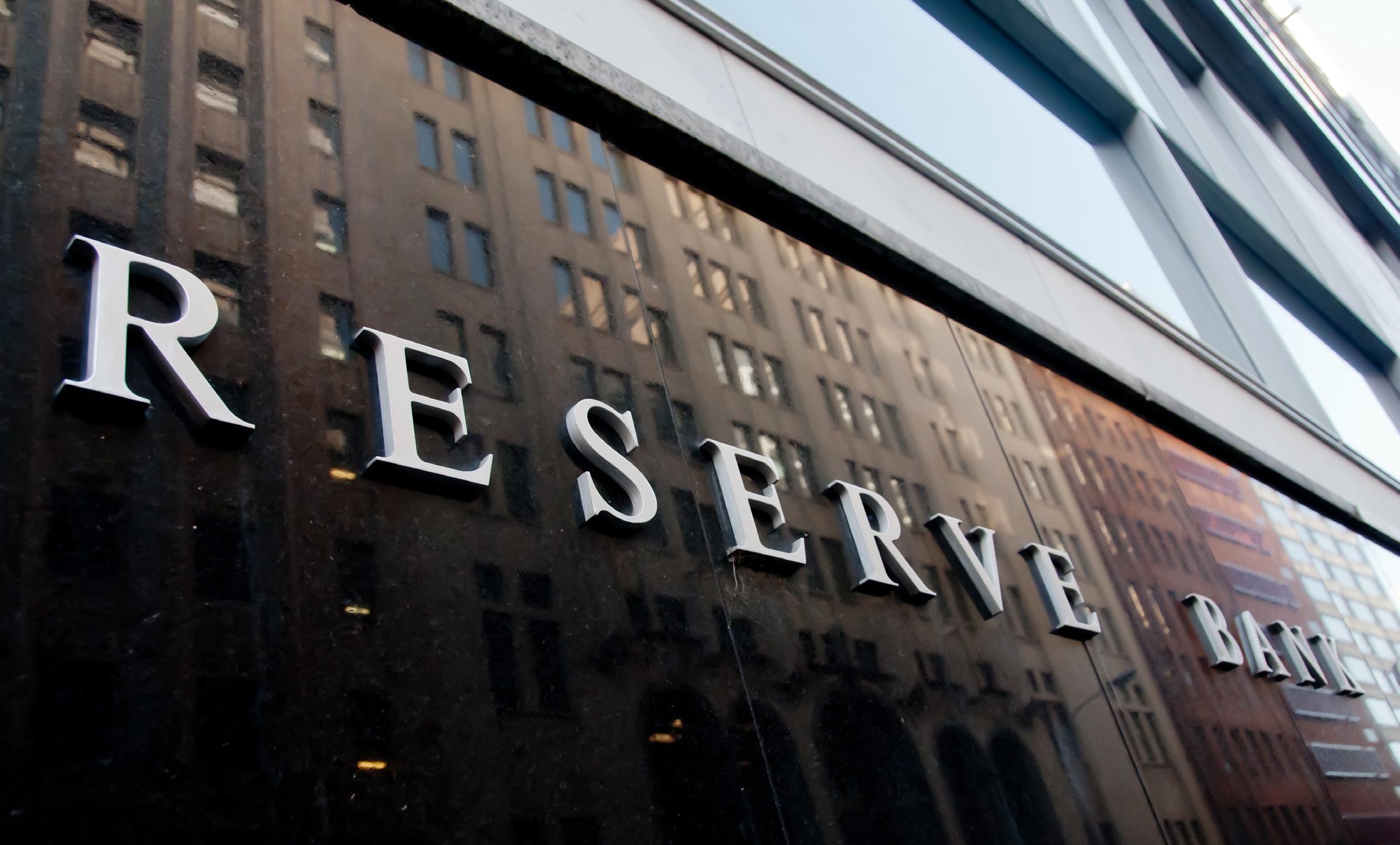
Even though monetary policy is generally in flux, it relies on the fundamental idea of changing interest rates, which affects the money supply, the economy, and inflation—understanding the Fed's motivations for implementing particular policies and how those policies might affect the economy. This is so that opportunities presented by the ups and downs of economic cycles can be taken advantage of to accept or shun investment risk. As a result, finding attractive chances in the markets requires a solid understanding of monetary policy.
editor@ifinancemag.com
The year 2022 was a tough one for the global economy. It started with the Ukraine conflict and the resultant sanction warfare between Russia and the United States-led Western Bloc. Moscow dried up natural gas supplies to Europe, thus creating a cost of living crisis in the continent. Central banks around the world also got involved in the rate hike race, thus leading the economies towards soaring inflation, with a strong dollar making imports costlier. On top of these, China's 'Zero COVID' policy saw the world's biggest manufacturing hub going through disruptions throughout the year.
The International Monetary Fund (IMF) has put up a positive growth outlook (not by a big margin, but positive indeed) for 2023, due to "surprisingly resilient" demand in the United States and Europe, easing energy costs and the reopening of China's economy.
"It still sees the pace of global growth falling this year compared with 2022, but by a smaller margin than it pre-
dicted in October. The IMF is now forecasting 2.9% growth for 2023, up from a 2.7% forecast in October, versus 3.4% growth last year," the global financial body said in its Europe. However, the recession threat looms large.
“Central banks are likely to continue to tighten monetary policy to fight inflation, and concerns that this restrictive stance could tip the economy into a recession have increased in major advanced economies,” the report remarked.
As per the IMF, financial conditions in the Asia-pacific region are easing currently. Not only have food and oil prices gone down, but China's reopening has also boosted the rebounding hopes as well. GDP growth in this part of the world is set to accelerate to 4.7% in 2023 from 3.8% in 2022.
IMF has predicted a strong rebound for COVID-hit Chinese economy in 2023, with industrial mobility and activities picking up the pace

"This will make it by far the most dynamic of the world’s major regions and a bright spot in a slowing global economy," IMF remarked.
The emerging and developing economies here will expand by 5.3% in 2023, an impressive figure against the overall global GDP growth ratio of 2.9%
"China and India alone are expected to contribute more than half of global growth this year, with the rest of Asia contributing an additional quarter.
Cambodia, Indonesia, Malaysia, the Philippines, Thailand, and Vietnam are all back to their robust pre-pandemic growth," IMF commented.
The financial institution's latest ‘Regional Economic Outlook for Asia and the Pacific’ remarks, "For every percentage point of higher growth in China, output in the rest of Asia rises by around 0.3%."
However, the region's manufacturing sector has started cooling down. For Korea, Singapore, and Taiwan, the downfall in semiconductor prices will last throughout 2023.
However, the good news here is that inflation is getting moderate in this part of the world. IMF believes that the phenomenon peaked during the 2022 second half. Core inflation is still proving more persistent and may return to central banks' agenda in 2024 even as financial and commodity headwinds continue to ease.
The Ukraine war and monetary policy tightening from the US Federal Reserve in 2022 made import a costly affair for Asia. However, the pressures of current account deficits and inflation have been cooling off.
"While inflation is moving in the right direction, central banks need to stay alert. Core inflation is still running above the target. The big supply shocks
and permanent structural realignments associated with the pandemic have made calibrating monetary policy particularly challenging. Signals in the data about second-round effects are mixed, further heightening uncertainty for policymakers. Given the two-sided risks to inflation in Japan, more flexibility in long-term yields would help to avoid abrupt changes later," IMF warns.
As China continues its recovery journey, the renewed dynamism of the world's second-largest economy may put upward pressure on global commodity and service prices, particularly in countries expecting resurgent tourism. Central banks should tread carefully as they face the price stability challenge and if the core inflation doesn't return to the targets set by these banks; these financial institutions may need to hike rates further.
Another area which needs attention from the policymakers is the fiscal deficit health, which has been shooting up since 2020, and higher interest rates in 2022 added more to this burden. Pakistan, Sri Lanka and Bangladesh have been at the receiving end of the crisis and the authorities need to continue with their fiscal consolidation plans.
"Many Asian countries face elevated financial vulnerabilities, with high leverage across household and corporate sectors, and significant bank exposure to real estate downturns. This suggests subtle policy trade-offs between controlling inflation and ensuring financial stability, and a need to strengthen resolution frameworks," IMF remarked.
Now, let’s see Asia's current economic scenario.

The IMF has predicted a strong rebound for COVID-hit Chinese economy in
11,113.51
11,226.90
12,265.33
13,841.81
2023, with industrial mobility and activities picking up pace. The economy will expand 5.2% this year, against 3% in 2022. The country will be contributing a third of global growth in 2023.
"The contraction in real estate remains a major headwind, and there is still some uncertainty around the evolution of the virus. Longer-term, headwinds to growth include a shrinking population and slowing productivity growth," the financial body commented.
Another worry for the Chinese government is a shrinking labour force and diminishing returns to capital investment. The IMF strongly pitched for organisational reforms, especially in the field of productivity, to prevent GDP from falling below 4 % over the next five years.
India will ultimately surpass China's overall population in the next few years and will also cross the latter’s working-age population (20 to 69) as
well. China's working-age population allowed it to become the world's factory. Over 70% of solar panels, 60% of farm machines, and 25% of robots are constructed with Chinese components.

As per a report from the Hong Kong Post, China is currently re-assessing the labour policies to arrest the declining working population, which can be a potential headache for its domestic market, as well as the global economy. Estimates say that by 2035, around 400 million Chinese will be over 60, nearly a third of the total population. The Chinese labour sector is known for being overworked and underpaid, with competition being heavy and the market lacking worker welfare schemes.
Another troublesome area is the country's real estate sector, which used to contribute to about a quarter of China’s GDP, but is now facing a drag growth, especially after Beijing cracked down on developers’ debt re -
liance in 2020. Apartments are usually sold to homebuyers before project completion. However, with COVID disruptions, construction activities have slowed down, resulting in homebuyers halting their mortgage payments as a mark of protest. Residential floor space sale figures have dropped by nearly 27 % in 2022, while investments went down by 10 % Also, Beijing is currently involved in a 'semiconductor battle' with the US. The Joe Biden government has imposed export controls and China now faces the challenge of ramping up its domestic capacity for producing these high-end chips. Bloomberg reported in 2023 beginning about the Xi Jinping government stopping its investment in the domestic semiconductor industry and it came two weeks after the news of Beijing preparing a one-trillion yuan ($145.61 billion) incentive package in this sector.

In its latest projections, the IMF has predicted a dip in the Indian economy from 6.8% in 2022 to 6.1% in 2023. However, the forecast looks impressive for the country, which registered a quick recovery from COVID in 2021, at a time when developed economies like Germany and the UK are facing recession fallouts.
India's GDP growth figures will also surpass the overall global economy, which is likely to take a plunge to 2.9% in 2023-24, slowing down further from 3.4% in the 2022-23 fiscal period.
IMF Managing Director Kristalina Georgieva, while attending the G20 summit in India, predicted that the country will alone contribute 15% of the global growth in 2023, thus reiterating her stand of calling the Asian country a 'bright spot' amid a worldwide economic slowdown.
She also stated that the country's recent Budget had indicated fiscal dis-
cipline and directed more attention to capital spending, which is fundamental for long-term growth.
In his budget, India’s capital investments will see a 33% steep hike for the third year in a row, to enhance growth potential and job creation, crowd-in private investments, and provide a cushion against global headwinds. Railways and road networks, two crucial sectors of the Indian economy, have seen enhanced capital outlays, while 50 new airports, drones and advanced landing grounds will jack up regional connectivity further. MSME, another lifeline of the Indian economy, will continue to receive an infusion of fresh capital. Eyeing more foreign investments, the Narendra Modi government will bring another dispute resolution scheme, while setting up a 'Central Processing Centre' to provide faster responses to companies filing forms under the Companies Act. On the social front, the health sector will undergo further digital transformations, as it eyes the elimination of sickle cell anaemia by 2047. The outlay for government-backed housing projects has seen a 66% hike.
Also, top educational institutes will have centres of excellence for artificial intelligence, along with the 'National Data Governance Policy' to encourage innovation and research by start-ups and academia. The agriculture sector will get an 'Agriculture Accelerator Fund', which will encourage start-up activities in this part of the Indian economy, along with the introduction of a new digital public infrastructure. India also has laid down plans to become the global millet hub.
During the COVID outbreak, the country launched a food security scheme for its socially vulnerable citizens and this will continue till 2024.
The technology and knowledge-driven budget envisions India continuing its impressive growth journey, which saw it toppling the UK from the position of the fifth largest economy in the world.
As per the Reserve Bank of India data in August 2022, the country's external debt stood at $620.7 billion at March-end that year, with the forex reserves covering some 95% of it. India will likely hike its interest rate to 6.75% in the middle of 2023, before easing to 6.5% by the year-end. While inflation falls below 7% in September 2022, it is still high from RBI's 4% ceiling.

The Japanese economy got featured in news in 2022 due to its yen reaching a record 32-year low, despite the country, with an Inflation rate between 2.8% to 3%, being better placed among the G7 countries, to tackle the global economic slowdown. However, the falling yen ensured an alarming growth of the trade and current account deficits between Japan and the US.
Japan, which, as opposed to other countries, takes the monetary policy easing the path to combat economic slowdowns, saw its interest rate staying on the negative scale during COVID. It became positive in September 2021 and rose to the 2008 level of 2.5%. The bank’s short-term policy rate remained at an ultra-low level in 2022.
Now in 2023, the country is in some crisis as the Bank of Japan sees a leadership change. Official figures for the last three months of 2022 showed Japan's economy expanded by 0.6%, much lower than forecasts of 2% growth. December data showed core consumer prices rising by 4% from 2021, twice the rate targeted by the central bank. Kazuo Ueda, the upcoming BoJ governor, now
faces the challenge of raising the interest rates, without harming the island country's economy.
Ukraine war and the subsequent global energy crisis have only forced Japan to relook over its energy policy. As the public anger over the use of nuclear energy intensified post Fukushima disaster in 2011, Japan decided to expand its conventional energy imports. Even in its carbon neutrality goal for 2050, as announced in 2020, Japan didn't consider the construction of new nuclear plants necessary then.
However, things have changed in 2023, with the nation’s nuclear watchdog approving new rules to allow reactors to operate longer than the earlier limit of 60 years.
Gas and electricity bills in December 2022 climbed 23.3% and 21.3% against 2021. Households are struggling as energy imports get costly. The government has provided subsidies worth 6 trillion
IMF Managing Director Kristalina Georgieva, while attending the G20 summit in India, predicted that the country will alone contribute 15% of the global growth in 2023, thus reiterating her stand of calling the Asian country a 'bright spot' amid a worldwide economic slowdown
yen to oil wholesalers since January 2022, as well as setting aside a package worth 3.1 trillion yen for households to partially cover energy price increases.
Tokyo Electric Power Company Holdings saw a net loss of 650.9 billion yen in 2022, larger than the 623 billion yen net loss posted following the Fukushima episode. Other leading utilities also raise electricity bills in 2023 to offset the growing energy import costs.
Right now, Japan expects nuclear energy to generate between 20% and 22% of its total output in fiscal 2030, up from 6.9% in fiscal 2021 due to many reactors remaining offline.
Also, the Ukraine war and an escalating economic conflict between US and China are necessitating the need for ensuring economic security at the government level, so that if armed conflict breaks out in Taiwan, Japanese industries should not face supply chain disruptions. A bill in this direction cleared

in the Parliament in May 2022 and is expected to gather momentum now.
Toyota Motor Corp has accepted a worker union demand for a record 20year increase in salary and incentive payments in full. Honda Motor too will give its workers a 5% pay increase, the highest since 1990.
slumped by 16.6%. Semiconductor exports went down by 44.5%, while total imports fell by 2.6%.
Even though Vietnam emerges as a surprise package with a 6.5% GDP growth forecast for 2023, apart from challenging China's status as a global manufacturing hub, poor outlooks from Singapore, Taiwan, Thailand and Malaysia, and lacklustre pictures from Sri Lanka, Bangladesh and Pakistan suggest that the major workload of making Asia as a 'growth machine' for 2023-24 will be on the shoulders of China, India, Japan and Korea. The growing price volatility in the semiconductor sector due to the China-US trade war can very much emerge as another market factor in this part of the world.
Japan's neighbour, South Korea, kept its interest rates the same in February 2023, after steadily raising them since 2022, amid high inflation, weakened exports, and a housing market slowdown. The interest rate now stands at 3.50%. While the Bank of Korea has warned about China's reopening having little impact on the country's economy, South Korea GDP has shrunk more than expected, with the semiconductor and technology sectors witnessing a slowdown. The country has produced a record trade deficit of $12.7 billion in the first half of 2023, as exports editor@ifinancemag.com

The prominence and fame of medical tourism have given rise to the medical tourist hospitality industry
Medical/health tourism is in simple terms, explain a phenomenon, where an individual travels to a foreign nation to seek medical care, health tourism. Thailand, Singapore, and India have emerged as the top three destinations for medical tourism for procedures like cardiac surgery, orthopaedics, and dental care as well as elective procedures like aesthetic surgeries (Botox, cheek lift, chemical peel, chin surgery, cosmetic dentistry, dermabrasion, eyebrow/ forehead rejuvenation and blepharoplasty), since these treatments are cheap in developing economies compared to the developed ones.
Millions of US residents participate in medical tourism. Mexico and Canada, Central America, South America, and the Caribbean are some of their preferred locations to get state-of-the-art treatment.
As per the United States CDC (Centres for Disease Control and Prevention), people undertake medical tourism for reasons including cost (to get cheaper treatment in another country), culture (to receive care from a healthcare provider who shares the traveller’s culture and language) and availability of the proce-
dure (to get a procedure or therapy that is not available or approved in the home country).
According to the Turkish Statistical Institute, some 642,444 medical tourists visited Turkey in 2021, a 66% increase from 2020. The report also included Thailand, Costa Rica, India, Malaysia, Mexico, Brazil, Singapore, Turkey, Colombia, South Korea, Taiwan, Czech Republic, Spain, Australia, China, and Indonesia as popular medical tourism destinations.
Most of these countries have already developed strategies to promote digitalization in their healthcare services, thus creating a demand for the best and most valued universal treatment methodologies, boosting the chances of more and more collaborations with foreign organizations.
Data Bridge Market Research published a report titled, "Health Tourism Market" in January 2023. It predicted that the health tourism market, which was worth $27.195 million in 2022, will reach $410.61 million by 2030, at a CAGR (Compound Annual Growth Rate) of 40.4% during the forecast period 2023 to 2030.
"Health tourism is a subset of the healthcare industry that focuses on the needs of patients travelling across international borders for complex surgeries and medical treatments. Medical tourism is popular among global patients, owing to the low cost of medical treatments in developing countries, which is found to be very expensive in
Medical tourism is popular among global patients, owing to the low cost of medical treatments in developing countriesANALYSIS HEALTHCARE HEALTH TOURISM ECONOMY
developed countries. Access to low-cost services and medical treatments from various tourism departments and local governments is a major factor in the global health tourism market's growth," the report remarked.

As per the Data Bridge research, medical tourism’s market growth will be driven by the adoption of connectivity technologies, digital platforms, and telemedicine.
The report also identified two crucial factors propelling the growth of the sector.
First of them is globalization, which has been a major driving force in medical tourism, allowing many consumers to obtain the highest quality and most affordable healthcare treatments. Apart from improving healthcare by 75%, globalization has also reduced treatment costs by 25%, especially for citizens of the United States and other developed countries.
Then comes the rise in the demand for Online
Medical Agencies (OMAs). Most countries have developed strategies to promote digitized healthcare services, thus improving collaboration with foreign organizations. This gets further boosted with improvements in treatment methods, thereby increasing the demand for medical tours. Market growth is expected to be driven by the adoption of connectivity technologies, digital platforms, and telemedicine.
As per recent research, the four most popular reasons given for why patients travel abroad to receive medical treatment were Affordability (costly in home country)’ at 88%, Accessibility (waiting period is high) at 66%, Better quality (care and support services are better quality than the home country) at 38% and Availability (not available in home country) at 46%. With these important reasons, the growth of Medical Tourism is inevitable; hence it is important to understand the positives and negatives of this growing trend across all sectors, remarked an editorial in Medical Tourism Magazine.
A report from 'MEDTOUR PRESS' states, "Incoming medical tourists and their activities during their stay, such as staying in hotels and accommodations, generate huge amounts of income for the host country. In order to better understand the amount of growth that this type of income has experienced it is noteworthy that in 2007, 750 thousand US citizens travelled abroad for medical purposes. In 2015 this number was 19 million. That is a growth of more than 250% India is one of the foremost receivers of these patients, a country that is expected to make more than 7 billion Dollars from medical tourism by the end of 2020."
Medical tourism encourages healthcare specialists to work in their home country, as the healthcare centres dedicated to medical tourism destinations provide their staff salaries similar to the ones in developed countries. This has also resulted in doctors from Europe and the United States moving into countries like Singapore and Thailand. Also, countries eyeing to become medical tourism destinations are forced to upgrade their healthcare game, thus benefiting their own indigenous populations as well.
The prominence and fame of medical tourism have given rise to the medical tourist hospitality industry. Hotels and resorts are getting constructed to accommodate medical tourists. In 2015, 15% of the entire Thai medical tourism income was generated by the medical tourist hospitality industry.
Medical tourism has a complementary relationship with mainstream
tourism as well. Medical tourists also visit the cultural, historical and natural attractions of their host country during their recovery period. A 2008 report from the World Health Organization stated that medical tourism pumped some 1.8 billion dollars into the mainstream tourism industry.
As destinations of medical tourism (dedicated healthcare centres) continuously upgrade their resources, associated industries like the pharmaceutical and surgical equipment sections experience business growth.
Medical tourism also helps in facilitating the improvement of relations between countries, thus giving good scope to pacts like the visa non-requirement ones. The cultural and trade exchanges between the nations also improve their GDPs.
According to a MedicalDevice Network report, "GlobalData estimates that there were over 14 million inbound visits by medical tourists globally in 2019 and forecasts this number to continue to grow at a Compound Annual Growth Rate (CAGR) of 4.5% until 2024. Some of the fastest-growing markets are forecast to increase at CAGRs as high as 15% over the next few years."
The report also talked about the pandemic introducing a new branch of medical tourism called vaccine tourism, which involves tourists from countries with poor pandemic response to use vaccination as the opportunity to travel and explore new places.
"Some travel packages even include vaccination as a key component of the travel experience. At
The
20-30% Costa Rica
Source: myshortlister.com

first, this was most apparent among Canadian medical tourists in late 2020 and early 2021, when many chose to travel to the Southern US because COVID-19 vaccines were substantially more available in the United States than in Canada. So far in H2 2021, countries like Canada and other developed nations have caught up or even exceeded the vaccination rates of the United States, but the global distribution of vaccines remains a critical issue. A minority of wealthy individuals in many of the developing nations have thus also considered vaccine tourism," the same report stated.
Now a CNBC report is suggesting that despite China's full COVID vaccination rate crossing the 85% mark, given the "poor quality" of Sinovac and Sinopharm vaccines, many Chinese citizens are now
flocking to Macao to get jibed with Western mRNA vaccines, due to the superior immunity offered by the latter.

A major risk for medical tourists comes in form of getting substandard medical treatment in another country. These tourists rely on the internet to get information about their treatment procedures, visas and other related details in the countries they are about to travel to. There is a lack of global governing standards in this field. SAGE journals' previous studies revealed large variations in the information provided on the hospital websites and medical tourism facilitators, depending on the destinations and target markets. Based on a thematic content analysis of Canadian bro-
ker websites, Penney et al. found in 2011 that about 29% of those websites did not disclose the credentials of the foreign medical providers they promoted, and 47% did not mention risks associated with medical tourism.
While these dedicated healthcare centres are sometimes accredited by international bodies and staffed with specialised and experienced physicians, concerns remain on aspects like infections and side effects after medical procedures.
"Receiving treatment abroad involves squeezing a series of medical interventions into a short time span and the absence of follow-up care unless further trips are made," SAGE journals stated.
Patients face two-fold risks, one of not having the option of returning to the same hospital to treat
their post-operative side effects and secondly, they can also get exposed to other dangerous infections, during their treatment. In that case, they will have no other option but to get treated at hospitals in their own countries, thereby making the medical trip a bad investment.
"With patient travels, there is a significant risk of corresponding bacterial travel. Recent superbug research has created significant alerts. All industry professionals must understand the negative impact of communicable diseases. Hence, good strategies should be developed by global organizations to protect spread of such diseases. Understanding and control is vital," commented 'Medical Tourism Magazine'.
"It is true that medical tourism escalates the per capita rates of the host country but it escalates several other detrimental factors as well. For infrastructural growth, the natural greenery or forest cover of a region is compromised in order to accommodate more buildings, hospital facilities, roads, treatment or diagnostic centres etc. To supplement the above, there is a continuous discharge of polluted air, solid-toxic medical waste, litters of sewage consisting of oil and chemicals. Architectural, noise and visual pollution also have a direct negative impact on the atmosphere," it remarked, while talking about the cons of visiting another country for critical treatment.
In 2016, Quantum Metal introduced the firstever digital gold saving in Malaysia. In 2022, this platform got the recognition of being one of the biggest and most successful companies/ investors in Asia Pacific.
Quantum Metal accomplished the landmark through the collaboration with Malaysian banks, financial institutions, co-operatives, government bodies and clients. The company also initiated the link-up between local banks and international bullion suppliers like Perth Mint.

The firm has also been offering risk-reducing business models to local banks as the latter can have direct and legal transactions through Malaysian companies. After entering into business relationships with Quantum Metal, these local
banks don’t need to bear capital expenditure responsibilities as the Malaysian firm fully invests in the project infrastructures.
Quantum Metal has developed and transformed, apart from creating holistic supply chains through its strong business network and partnership with industry experts and stakeholders. Quantum Metal has its own holding/parent company registered in the USA, apart from having business partnerships in Thailand, Singapore, Indonesia, Australia and Africa.
The secret behind Quantum
The secret behind Quantum Metal’s meteoric rise is their team of motivated and determined leaders
Metal’s meteoric rise is their team of motivated and determined leaders, led by the company’s founder Yang Berbahagia Dato’ Lim Khong Soon. Dato, an experienced businessman, has been involved in areas like precision mould, gold potassium cyanide for gold plating industries and electronic components.
In his illustrious career spanning over 20 years, Dato led the co-development of the method of recovering gold from electronic waste with Inochem of South Africa. He also has vast experienced in the refining of impure gold from scrap/ old jewellery, along with supplying gold to jewellery fabricators.
Dealing with Australian bullion bankers makes Quantum Metal well-known around the Asia Pacific.
Along with Dato Lim, Quantum Metal has two resourceful directors, Ms Aida Lim binti Abdullah and Mr Haji Kamari Zaman bin Juhari. Ms Aida Lim handles Quantum Metal’s Corporate Strategy and Development departments, with the goal to establish a good governance framework and strong business ecosystem. Ms Aida Lim is a Chartered Accountant, who holds a BA (Hons) degree in Accounting and Finance. She possesses over 25 years of regulatory and business leadership experience.
Mr Haji Kamari bin Juhari is a veteran of over 40 years in the financial industry. He started his journey in 1982 by joining the Bank Negara Malaysia as a Director of Development Financial and Enterprise Department. He is currently serving Quantum Metal as a non-executive chairman, with the responsibility of monitoring and giving advice in relation to business partners with local banks.
Quantum Metal’s leadership team also consists of a few Independent Shariah
Advisors, approved by the Securities Commission of Malaysia. The company’s in-house Shariah Council Committee Board is led by another veteran Tan Sri Sheikh Ghazali bin Haji Abdul Rahman.
Quantum Metal was awarded at the ‘Asia Pacific Enterprise 2022 Malaysia’ under ‘Corporate Excellence Category in the Financial Services Industry’. Enterprise Asia, the organiser of this event, recognised Quantum Metal as one of 47 businesses that played a vital role in shaping Malaysia’s entrepreneurial landscape in the postCOVID era.

Quantum Metal also won other laurels like the ‘Digital and Technology Business Excellence Award’ at ‘Sin Chew Business Excellence Awards 2020’. Former Deputy Minister of International Trade and Industry (MITI), Datuk Lim Ban Hong graced the event both as a special guest and an awardee.
Quantum Metal’s principle is ‘at Quantum Metal, we care and we share’, a tagline which makes the company more aware of its social responsibilities and giving back to the people whenever and wherever it can. As part of their continuous CSR Program, Quantum Metal contributed 10 new wheelchairs to the community and Continuance Life Associates for Hospital Lam Wah Ee, in Malaysia’s Penang.
Quantum Metal has also organized the ‘Consultant Challenge Award – Hall of Fame’ as part of their gala event, to reward their consultants and the top sales achievers. In addition, another special award was given during the event, called the ‘Outstanding Builder Award 2021’, which was won by Mr Balakumeresen a/l Karupiah. These awards are a testament to the hard work and determination put forth by Quantum Metal as a business group, along with its value of serving Malaysian society through its corporate social responsibility initiatives.
The picture surrounding China is still uncertain, despite the fact that one-third of the global economy may enter a recession in 2023. The International Monetary Fund (IMF) issued the dire economic projection based on concerns over an economic slowdown in the United States, the EU and China, but some analysts believe 2023 will be a year of recovery for the world's second-largest economy. Analysts anticipate that Thailand will experience a doubledip recession due to a variety of variables, including a rise in COVID-19 infections in China, Beijing's monetary policy, and its plan to reopen the nation for cross-border travel.
According to Kampon Adireksombat, first senior vice-president of Siam Commercial Bank's Chief Investment Office (SCB CIO), it is very doubtful that the Chinese economy would enter into a global market recession in 2023.
"The Chinese economy already bottomed out in the second half of 2022 because of their zero-COVID policy. The reopening rules, combined with easing monetary, fiscal and regulatory measures, will likely result in an economic rebound, especially in the first half of 2023. Rising COVID cases after the reopening could force some business activities to halt, but we believe it could be on a temporary basis," Kampon Adireksombat told the Bangkok Post.

SCB CIO anticipates that China will further relax its monetary policy by lowering the minimum reserve ratio demanded by commercial banks

SCB CIO anticipates that China will further relax its monetary policy by lowering the minimum reserve ratio demanded by commercial banks. The People's Bank of China is also expected to put policies into place that support particular companies, particularly vulnerable ones.
According to Kampon, China's recent reopening for international travel and softening of monetary policies are important positive factors for both its domestic economy and other nations with substantial exposure to trade, investment, and tourism.
"In 2023, we believe China reopening for domestic and international travel is the most important easing measure that will likely benefit the Thai economy," he said.
The tourism sector in Thailand and allied industries will benefit from the return of Chinese visitors. According to Kampon, the recovery in the tourism sector should also assist domestic demand because it is a labour-intensive industry. As a result of China's recent reopening news, Kasikorn Research upped its projection for Thai GDP growth for 2023 from 3.2% to 3.7%, noting that this will be good for Thailand's export and tourism industries.
"We believe China's plans to expand businesses abroad will be the second priority for the government and firms, as they may want to stimulate domestic investment to shore up their own economy first," Kampon said.
According to Sanan Angubolkul, chairman of the Thai Chamber of Commerce, the expected slow development in China won't likely have a detrimental impact on Thailand's performance in international trade. He said that China's initiatives to relax strict zero-COVID regula-
tions will hasten the country's economic recovery, with the growth of 5% likely starting in the second quarter of 2023.
"Our greatest concern is the frenetic volatility of the foreign exchange rate, especially for the baht, which is strengthening more than other regional currencies. Thai entrepreneurs have to prudently plan and manage foreign exchange risks to curb the impact on their businesses and trade," Sanan said.
He anticipated that due to the weakening economy of Thailand's major trading partners, exports will decline in the first two quarters of 2023. According to Sanan, the third and fourth quarters should see an improvement in exports. Also, the Joint Standing Committee on Commerce, Industry and Banking estimates that Thai exports would eke out growth of 1% to 2%.
Poonpong Naiyanapakorn, director-general of the Trade Policy and Strategy Office (TPSO), stated that despite expectations for slow growth in China's economy due to zero-COVID
policies and a struggling real estate market, the office is still optimistic about the country's export prospects.
According to a recent analysis by TPSO, the Chinese reopening is anticipated to help Thai exports to China, particularly those of fruit, food, beverages, and clothing. He added that shipments of medical and healthcare products had potential futures. Data from the Commerce Ministry show that in the first eleven months of the year 2022, Thailand's exports to China decreased by 6.5%, with fruit, plastic pellets, computers and computer components, chemicals, and rubber being the main exports.
According to JP Morgan research team, COVID infections in China will peak in January 2023, but the country's economic recovery won't begin until the second quarter.
"Even though COVID-19 infections in China rose rapidly after the country reopened faster than expected, we ex-

pect the impact to be transitory. In fact, these early infections that will likely peak in January are expected to bring forward the timing of China's economic recovery to the second quarter," J.P. Morgan's research team told the Bangkok Post in a statement.

The team predicts that the recovery will increase consumer demand for tech products like smartphones, which will strengthen trade flows between China and Thailand for tech-related components. According to Vinayaka Venkatesh, senior market analyst for Asia-Pacific at tech market research firm IDC, a rise in infections in China and the possibility of an economic slowdown are expected to curb the supply of tech products, as the majority of countries in the region rely on China. He claimed that increasing loan rates and rising consumer product prices have hurt the Thai economy, which has reduced demand for computer products.
"We expect a slowdown in demand as local and global macroeconomic
conditions hurt consumer sentiment and buying power. It doesn't help that supply of lower-cost smartphones has shrunk significantly," Venkatesh said.
According to Sisdivachr Cheewarattanaporn, head of the Association of Thai Travel Agents, the first quarter would see significant expenditure by Chinese tourists to Thailand, with little influence from the anticipated economic slowdown. As wealthy visitors who have waited three years to travel overseas, Sisdivachr said he believes the Chinese still have trust in visiting Thailand and they may even spend more during the first quarter than they did before the pandemic. Independent travellers, working persons under 40 years old, and the wealthy will make up the bulk of the travel market in China's early phases of openness, he predicted.
Operators should prepare by offering excellent services, such as attractions, tour guides, bus operators, and boat charters, to draw Chinese tourists.
"This time is different than the global financial crisis in 2008-2009, when there were not many Chinese tourists," Cheewarattanaporn said.
The Tourism and Sports Ministry reported that only 815,708 visitors from China arrived in 2009. In the second quarter of 2023, Sisdivachr predicted that the Chinese government will let tour groups resume travel. In order to prepare for the restoration of tour group services in the future, he said, Chinese travel agents are currently inspecting attractions and other services in Thailand.
According to Sisdivachr, when Beijing finally drops the necessity for the RT-PCR- COVID test, the Chinese market might expand significantly, while airfares would gradually go down. He
predicted that tour operators will make even more money from Chinese vacation packages than they had in the years before COVID.
The Tourism Authority of Thailand's governor, Yuthasak Supasorn, claimed that the Thai tourism sector has some advantages that should keep demand high even if it is predicted that one-third of the global economy will experience a recession. For instance, he noted that high energy costs in Europe would lead some travellers to look for extended-stay locations outside of Europe. According to Yuthasak, the tourist sector needs to refocus on nations that are anticipated to be less impacted by the economic slowdown in order to minimize these risks.
As economies continue to contract, the Federation of Thai Industries (FTI) is concerned about competitiveness in the international market. A recession in the global economy has reduced the demand for goods and services in many nations. According to Kriengkrai Thiennukul, chairman of the FTI, supply now outpaces demand on the international market. He stated that if China increases its exports, competition will heat up and other countries' concerns over slow global commerce will grow.
Kriengkrai said, "After reopening, China will return to competing with other countries. Exporting countries, including Thailand, will face risk because we believe China will increase manufacturing for exports to make up for losses from when the country was closed."
China COVID regulations, provided a chance for other countries to boost manufacturing, Kriengkrai said.
Overall venture capital funding of European startups is expected to drop to $85 billion
"One of my pals remained in technology," Fred Plais, the CEO of Platform.sh, a Paris-based cloud services business, recalls vividly what occurred in Europe in 2001. His last company, an internet search engine, went bankrupt after the dotcom bubble burst, as did the majority of the other businesses he knew.
The situation was similar in 2008, due to the global financial meltdown. Once again, European technology firms lost far more than their American counterparts. On July 1, 2022, the Wall Street Journal reported that Klarna, a Swedish buy-now-pay-later darling, was attempting to raise fresh capital at less than a fifth of its peak valuation of $46 billion. This fuelled fears that the looming downturn and plummeting tech valuations would hit Europe harder than the United States.
Regardless of such instances, Europe's entrepreneurs and venture capitalists appear considerably stronger than in the past, and far less reliant on foreign expertise and funding. They might even withstand the storm better than their American colleagues this time.
Examine the boom to get a sense of why. Even by frenzied global standards, 2021 was a smash in Europe. According to PitchBook, a data provider, venture capital (VC) investments on the old continent surpassed €100 billion ($118 billion) in a single year for the first time. Startup valuations skyrocketed, bringing the number of European "unicorns," or private companies worth more than $1 billion, to around 150 today, accounting for roughly 13% of the global total. Although Europe's digital ecosystem remains roughly onethird the scale of America's in terms of venture capital investments, it has more than doubled in size since 2020.
Some of this expansion is a consequence of extra capital flowing into Europe, where startup valuations have trailed behind those in the United States and Asia. According to PitchBook, American VC firms would spend $83 billion in European acquisitions in 2021, a threefold increase over 2020. Non-traditional investors, domestic and international, such as hedge funds and corporate venture capital arms, discovered Europe as well, participating in roughly $100 billion in transactions, a 150%increase from 2020.
As Klarna's attempt to raise cash suggests, this overabundance of capital will stop this year in Europe and abroad. Fortunately for European tech, this is not the end of the story. "The European flywheel has taken off," says Sarah Guemouri of
Europe's entrepreneurs and venture capitalists appear considerably stronger than in the past, and far less reliant on foreign expertise and funding
Atomico, a London-based venture capital firm, referring to the premise that success in technology only produces more and more positive results. Flywheels spin at the company level when more users convert into quality service, which attracts more customers, and so on. They can also assist in energizing the entire sector.

European venture capitalism appears to be selfsufficient. Another data supplier, Dealroom, examined the lives of 38,000 startup executives in 2021. Almost two-fifths have already worked for small startups and larger organizations, indicating a rising collective experience. Similarly, Mosaic Ventures, another European venture capital firm, observed that two out of every three unicorn founders were repeating entrepreneurs.

European entrepreneurs are growing more ambitious as they gain experience and are better at conveying a compelling story about what they aim to achieve. Nadine Hachach-Haram is the creator of Proximie, a healthcare firm that uses virtual reality to allow surgeons to monitor surgeries remotely. She is on a mission to create a "borderless operating room."
Avi Meir, the founder of TravelPerk, a business travel management website located in Barcelona, intends to become a hub for "human interactions amongst distant workers," such as by providing tools for organizing in-person team meetings. Nicolas Brusson, the CEO of BlaBlaCar, which began as a Parisian service to organize shared automobile rides between cities, hopes to transform it into a "multimodal platform" that combines a demand for buses and maybe trains globally. It may appear to some to be marketing jargon, but it is just what investors and prospective employees want to hear.
Capital is being amassed and reinvested in the industry. According to PitchBook, European funds have raised approximately €100 billion in venture capital over the last five years. Almost half of it has yet to be spent, leaving European venture capitalists with enough "dry powder" to keep firms afloat even if the crisis continues. European investors also put a lot of money into early-stage firms. According to Dealroom, by 2021, European startups will have received a third of all investments in funding rounds of up to $5 million globally, almost as much as their peers in America.
The proportion of "angels," or high achievers who invest a portion of their tech fortune in other
firms, is also increasing. Some people start their own VC firms.
Taavet Hinrikus, co-founder of Wise, an international payments service, and three other European innovators launched Plural, a €250 million fund, on June 28th. Lowerlevel executives have also begun to invest because many European IT workers are paid in part with their employer's shares. According to Dominic Jacquesson of Index Ventures, a transatlantic venture capital firm, only approximately 10% of shares were granted to employees a few years ago. Because of regulatory changes and increased societal acceptability of stock options in Europe, the proportion is around 17%, not far from the 20% or more that is common in the US.
The digital ecosystem's structure is also stronger now, although it was previously a scattered collection of odd success stories, like Skype, a video-conferencing site purchased by Microsoft; or Spotify, a Swedish music-streaming software. In a recent report on European unicorns, Credit Suisse investment banker Richard Kersley and his colleagues classified the companies as "enablers," such as payment services like Klarna and Checkout.com, and "disrupters," such as Getir, a Turkish delivery app, that thrives by piggybacking on such infrastructure.
In addition to more domestic knowledge and resources, as well as a more robust structure, European enterprises have certain competitive advantages that will be useful in a leaner, post-pandemic environment. One example is their thriftiness. Although private companies are not compelled
to reveal such figures, there are indications that their "burn rate," or the rate at which they spend money raised, is lower, at least among younger startups. It also helps because employing software professionals in Barcelona or Berlin is half the price of hiring them in San Francisco or Seattle.
However, when they grow into unicorns, those distinctions appear to fade. American and European companies raised roughly the same amount of cash before reaching that status: $378 million on average, compared to $392 million for enterprises that have achieved a valuation of more than $1 billion since the beginning of 2021.

Meanwhile, mature firms in Europe are less geographically diverse than their competitors in America, both concerning markets and VC support. Because domestic markets and talent pools in Europe are small and corporations quickly expand outside. Veriff, an Estonian online identification service, recently built a branch in Barcelona due to a shortage of engineers in Tallinn.
As a result, according to Atomico, over 80% of European tech firms have a global reach, compared to the 61% of Silicon Valley-based organizations. Only one in every five European enterprises has a single office in its native country, while slightly more than half have offices in three or even more countries. The ratio is flipped in Silicon Valley. Such variety is advantageous during a crisis.
According to Credit Suisse's assessment, recession-prone companies such as customer
Source: europa.eu
services are far less prominent than in America. Because of the EU's more open financial regulations, one-third of European unicorns work in fintech, frequently providing payment services to other companies. According to the bank, about a quarter of unicorns might be classified as "sustainable" businesses, which are expected to prosper as the globe becomes more serious about combating climate change.
All of this illustrates why the number of unicorns in Europe has increased this year. PitchBook added 42 new pitches in the first six months, compared to 37 in the same period in 2021. The future quarters will very certainly be more difficult. But so are Europe's tech firms, which recently raised $140 million (the valuation was undisclosed, but approached unicorn territory). That means Mr. Plais, the company's CEO, won't be looking for work anytime soon.
The bloodbath is happening Europe’s tech industry has lost more than $400 billion in value in 2022 and the bloodbath is still going on, according to venture capital firm Atomico, reported CNBC.
The combined value of all public and private European tech firms has fallen to $2.7 trillion from a peak of $3.1 trillion in late 2021, Atomico said in its annual “State of European Tech” report.
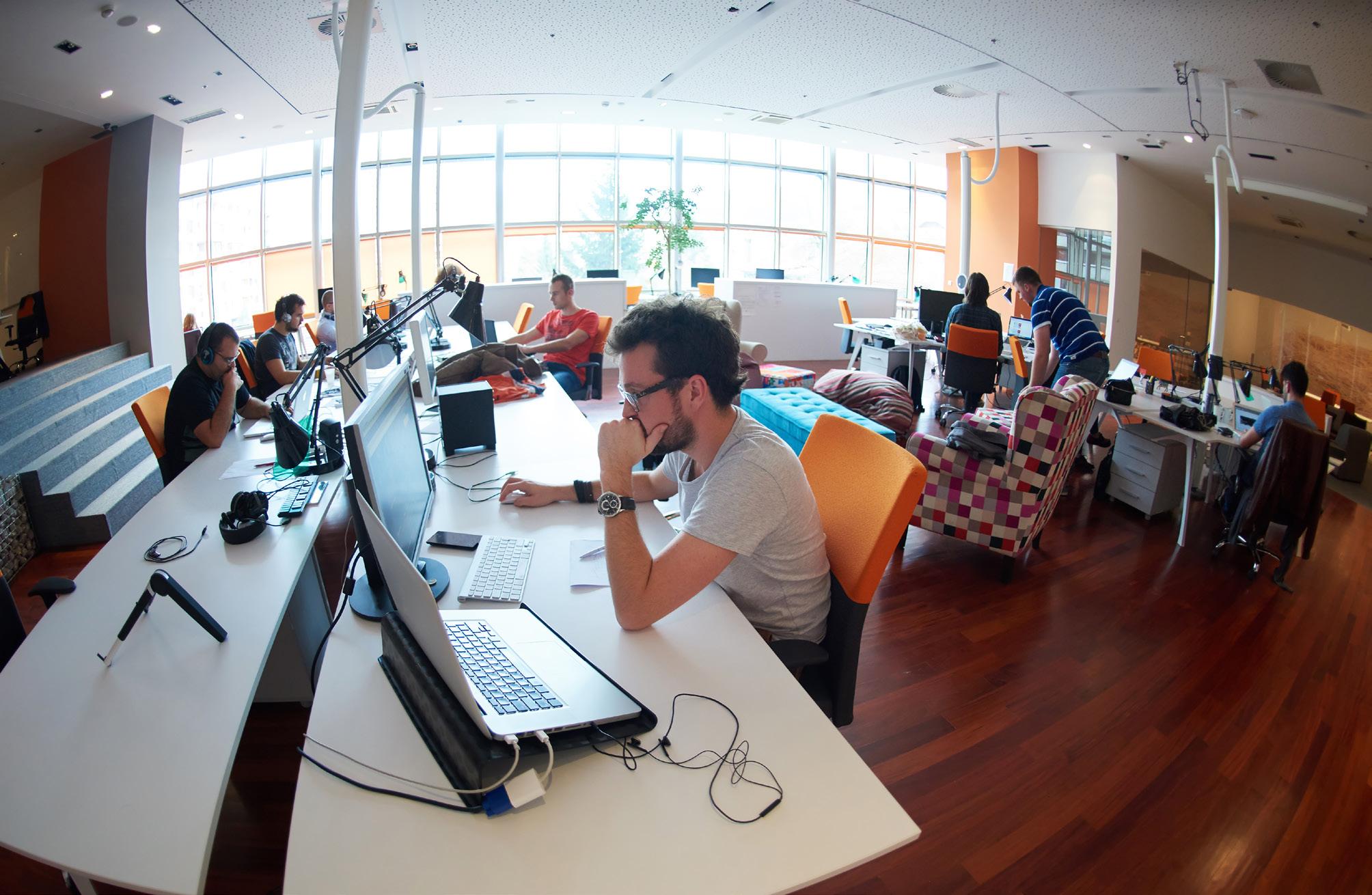
The figures once again underscore what has been a rough year for tech. Once richly-valued technology companies have seen their shares come under pressure from global factors, including Russia’s invasion of Ukraine and tighter monetary policy. Expect the news of staff downsizing and other cost-cutting measures in the coming months.
The United States Federal Reserve and other central banks are raising rates and reversing
pandemic-era stimulus to stave off soaring inflation. That’s prompted investors to reassess their positions on lossmaking tech companies, whose values typically rest on the expectation of future cash flows.
“It’s been a tough year — war in Ukraine, inflation, interest rate hikes, geopolitical tensions all across the continent. It’s the most challenging macroeconomic environment since the global financial crisis,” said Tom Wehmeier, a partner at Atomico.
In Europe, some companies have seen precipitous drops in their market values. Klarna, the Swedish buy now, pay later group, slashed its valuation by 85% from $45.6 billion to $6.7 billion in a so-called “down round.” Shares of music streaming service Spotify, meanwhile, have fallen over 60% in 2021.
Overall venture capital funding of European startups is expected
to drop to $85 billion by 2022 end, according to the Atomico report, which is based on quantitative data and surveys in 41 countries. That is down 18% from the more than $100 billion European startups raised in 2021.
It was nevertheless the secondhighest amount ever invested in the European tech ecosystem to date, Atomico said. European tech investment shattered records in 2021 as participation from US investors surged to new heights.
The year 2022 has seen a reversal of that trend, with foreign investors largely retreating. The number of active US investors in “mega-rounds” of $100 million or more dropped 22% from 2022. And that's not good news at all for the tech sector.
editor@ifinancemag.com
According to legend, Netflix co-founder Reed Hastings spent the best $40 of his life in 1997. He was angry at the time. He had recently received a sizeable fee for returning a rented copy of Apollo 13 six weeks late. Reed questioned why the movie renting cost couldn't be more like the gym membership one. At the time, DVDs were a brand-new, underutilised technology and were about to take off in the American market. Boston-born Hastings created a business plan for mailorder movies. Within a year, DVD-by-post turned streaming behemoth Netflix.
After 25 years, the founding tale of Reed Hastings is now considered lore in the business world. Regardless of how much of it is true, his achievement is evident. Netflix, a cult-status start-up that generated close to $30 billion in revenue in 2021, has evolved into a Silicon Valley entertainment stalwart. There are worries about how long Hastings will stay at the helm as socalled "streaming wars" have surfaced, with Amazon
Netflix earned some 7.7 million new subscribers in the last three months of 2022

Prime Video and Disney+ throwing their hats on the battlefield as well. Hastings has so far guided the ship with conviction.
The Global Internet Phenomena Report by Sandvine says that Netflix was responsible for 15% of global internet traffic usage in 2022, followed by YouTube (11.4%), Disney+ (4.5%) and Amazon Prime Video (2.8%). Netflix also earned some 7.7 million new subscribers in the last three months of 2022, thus bringing its membership to an all-time high of 230 million people. The
online entertainment platform’s line-up of new shows has also attracted users to a new lower-priced “Basic with Ads” subscription.
It will also roll out paid sharing in 2023, and it hopes that this will “result in a very different quarterly paid net ads pattern in 2023, with paid net ads likely to be greater in Q2’23 than in Q1’23.”
Although Reed Hastings would later experience a major epiphany with Netflix, it wasn't his first flash of genius in the business world. He graduated from

Bowdoin College with a degree in mathematics and later told The New York Times that he "found the abstractions beautiful and engaging." He later completed his master's in computer science at Stanford. Then, in 1991, when he was 31 years old, he, along with Raymond Peck and Mark Box, co-founded Pure Software, their first company.
The company, which initially provided engineers with a debugging tool, proved to be a successful venture. Before it went public in 1995, revenue increased annually and it was quickly acquired by a rival, Rational Software, for $750 million. Wall Street
didn't like the deal, but Hastings didn't care about it. He told The Times, "I was white-water kayaking at the time, and with kayaking, if you gaze and focus on the problem you are far more likely to encounter danger. I concentrated on the safe water and the outcome I desired. I disregarded the doubters.”
Reed Hastings wasted no time turning his inspiration for Netflix into a reality. He founded the company in 1997 alongside businessman Marc Randolph.
Two hundred thirty-nine thousand people joined Netflix in its first year, and it didn't take long for its distinctive red DVD envelopes to spread throughout the country and abroad. By positioning the company at the forefront of entertainment and technology, Hastings created a stir.
In 2000, Netflix introduced a monthly flat cost, eliminating the need for late fines and due dates. Initially, Netflix offered a pay-per-rental approach for each DVD.
“We could sign up early adopters because it was still a dial-up, VHS world, and most video stores didn't carry DVDs," he told Inc.
Before its initial public offering in 2002, when it listed its shares at $15 per share, the company continued to grow. The business reported its first profit in 2003, earning $6.5 million on $272 million in sales. In 2005, it shipped out a million DVDs per day after its earnings soared to $49 million in 2004. Yet, 2005 was when DVD sales in the US market peaked at $16.3 billion.
The next objective for Reed Hastings was to enter the world of video streaming. In 2005, he told Inc., "We want to be prepared when video-ondemand happens. Because of this, the
business is called Netflix rather than DVD-by-mail.”
Reed Hastings declared in 2011 that Netflix would separate its DVD and streaming businesses into distinct memberships with distinct fees and titles. The DVD side would be called Qwikster, but the streaming service would keep the moniker Netflix.
Netflix share price dropped by 75% by the end of 2011. Hastings initially gambled more but ultimately abandoned his ambitions for Qwikster.
Hastings kept on dominating the movie rental market. Blockbuster, which formerly had 9,000 video rental locations across the US, declared bankruptcy in 2010 after being weighed down by nearly $1 billion in debt and ripped apart by internal conflicts. Just ten years after Hastings and Randolph proposed a $50 million sale of their company to the giant of video rentals, Blockbuster went out of business. The meeting ended amid the dot-com bubble with the crises-ridden company’s executives "laughing us out of their office," according to former Netflix CFO Barry McCarthy.
Reed Hastings is renowned for taking a back seat at Netflix. He told Forbes, "Great individuals don't want to be micromanaged. We control by establishing a context and letting people go."
Hastings presently shares leadership duties with Ted Sarandos, the company's co-CEO and CCO, who joined the organisation in 2000 and became the co-CEO in 2020.
Reed Hastings and Erin Meyer, a business school professor, wrote ‘No Rules Rules: Netflix and the Culture of Reinvention’ in 2020. The book
describes his leadership philosophies and how they are applied at Netflix.
The annual leave arrangements at Netflix are one example of the 'no rules' approach. Hastings encourages employees to take time off through public holidays and parental leave policies, betting that employee loyalty and innovation would make up for any productivity losses.
According to him, a highly flexible environment outperforms in the long run; thus, "we're willing to take some inefficiency narrowly and in edge cases" to develop it.
At The New York Times DealBook Conference, Hastings said he takes six weeks off annually.
He claimed that by spending this time away from the office "hiking some mountain" or "reading something

"I was whitewater kayaking at the time, and with kayaking, if you gaze and focus on the problem you are far more likely to encounter danger. I concentrated on the safe water and the outcome I desired. I disregarded the doubters.”
Reed Hastings
unrelated to work," in order to get new insights.
The "no rules" attitude has some drawbacks, and Hastings acknowledges that it is not an ideal approach. For example, the controversial "keeper test" asks managers to decide whether they would try to persuade a team member to stay/accept the departure, possibly even with relief, if it happened. The 'keeper test' suggests that if their response is the latter, they should immediately let them look for someone else.
"Consider a fantastic athlete. You know that every game presents the possibility of injury, possibly even one that ends your career. But dwelling on that and overthinking can make you feel worse. Hence, we need to hire people who can put that aside and who strive to work with wonderful
coworkers because that is what they love—the calibre of their coworkers or the constancy of that—rather than job security," Hastings advised Variety.
According to Reed Hastings, Netflix's message is clear, "We're not a good place to come if job stability is your top goal. We don't want individuals to experience crippling terror since it is counterproductive. Netflix, however, is searching for a special kind of person who can ignore that fear."
Reed Hastings thinks that retaining Netflix's innovative spirit and competitive edge depends on taking a firm stance against mediocrity. At Pure Software, he observed an alternative.
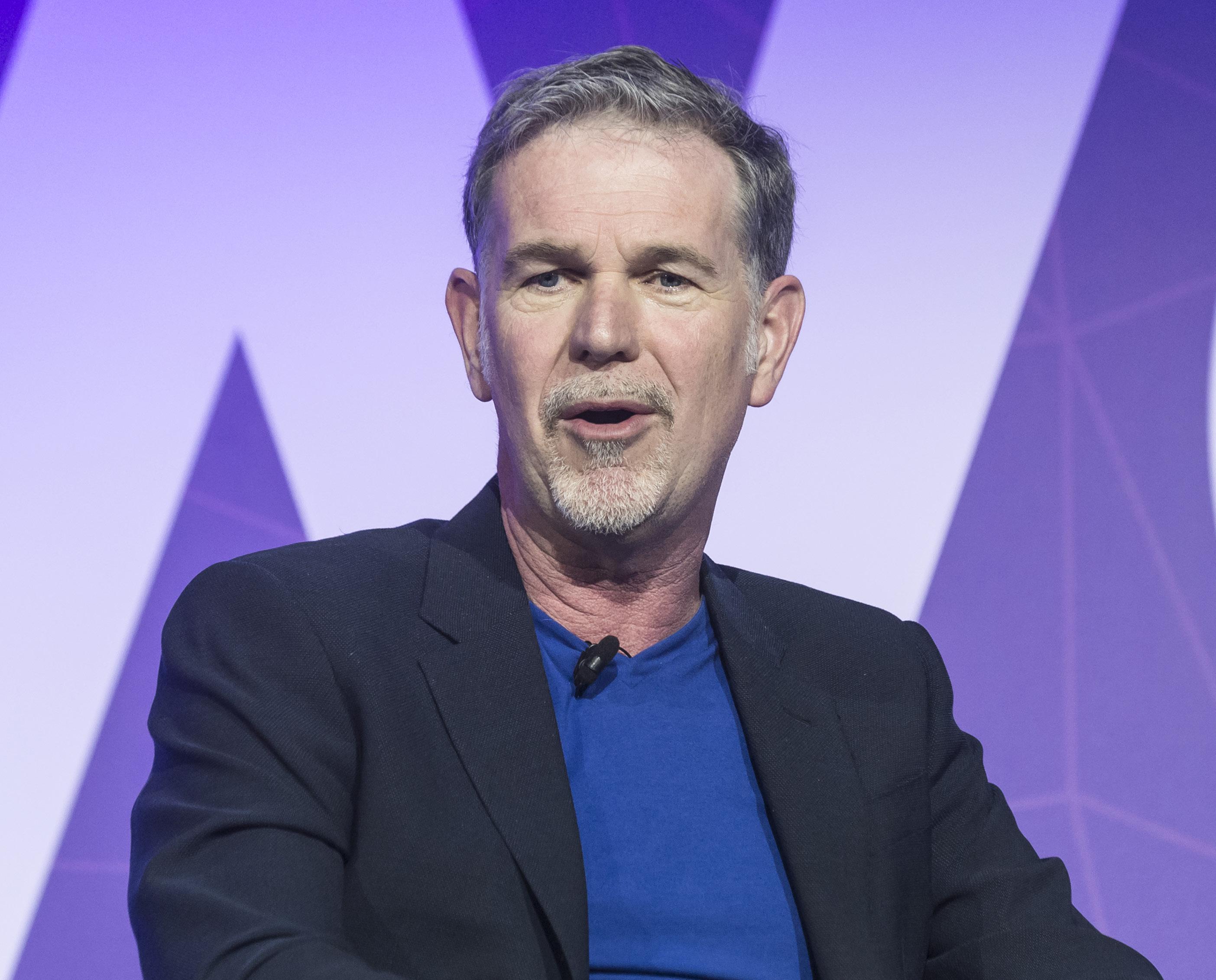
"We ceased to be creative. We all cared about the process. Then the market changed, and we could not make a change, so we eventually sold to
our biggest competitor. So it ended up being an outstanding financial success, but it did not become an epic, worldchanging company the way we want Netflix to be," he said.
Netflix's new advertising strategy modification is more of a U-turn than a change in strategy.
Netflix's top financial officer said advertising was "not in our plan" in March 2022, reiterating Hastings' pledge to keep ads off the network. In April, Netflix disclosed its first quarterly subscriber decrease in over a decade, and a falling stock price spurred a quick reconsideration. The streaming behemoth wants additional users through its cheaper, ad-supported subscription.
According to Brian Wieser, presidentof business intelligence at WPP-owned GroupM, Netflix has "a great untapped audience."
Netflix may also capitalise on the $60 billion-plus advertising industry.
Netflix must fight the idea that its ad-supported service compromises its brand.
"It is scary if the only way to reinvigorate growth is offering cheaper products that worsen the consumer experience, essentially making it more like the dying linear TV experience," LightShed Partners analyst Rich Greenfield told the Financial Times.

Entrepreneurship requires patience and tenacity, not immediate money.
Reed Hastings admits advertising doesn't boost growth. He stated that advertising looks easy until you get in it.
"Then you realise you have to rip that revenue away from other places because the total ad market isn't growing, and in fact, right now it's shrinking," he told in 2020.
"We believe we will have a more valuable business in the long term by staying out of competing for ad revenue and instead entirely focusing on competing for viewer satisfaction," the company wrote to investors in 2019.
In a July analysis, media company Kantar Group found that paid and free ad-supported streaming grew significantly, while born streaming without advertisements grew slower.
"Value is increasingly important to retaining streamers as platforms compete for screen time or risk being cancelled and replaced," said Nicole Sangari, vice president of Entertainment on Demand at Kantar Worldpanel Division.
"High stacking [of multiple subscriptions] explains this upward trend of significant [paid and free
ad-supported streaming] growth. Consumers were willing to pay less for commercials as stacking increased. As a result, streaming has gone full circle, from avoiding cable TV advertisements to relying on ads to expand," she added.
Sangari called Netflix's ad-supported tier a "suitable strategy to combat losing subscribers due to its cost and value."
She claimed an ad-supported tier "can help win back its lost subscribers," as customers who planned to cancel can convert to a cheaper package. Yet, fighting password sharing may cost the company clients.
"Their strategies depend on how loyal customers perceive its features and value," Sangari said.
HBO Max and Hulu have grown while Netflix struggles.
"The platforms have focused on costsavings to prove value and created a content niche that they expanded: HBO Max with new releases and Hulu with next-day cable to Hulu TV series. Both offered something unique to the market, and with greater competition have focused on diversifying their offerings to drive engagement," Sangari added.
Several industry experts appreciate Netflix's change to ad-supported advertising, but Hastings' overnight abandonment of ad-free streaming may force investors to question other agreements. For example, Netflix might expand into live news, sports, and gaming.
Reed Hastings is planning a succession, with Sarantos sharing the CEO role and making Netflix content decisions. He mentioned quitting the company by 2030 in a recent earnings call.
Reed Hastings is known for his philanthropy and politics outside of Netflix. Forbes listed him among the 400
wealthiest Americans in 2017, valuing his wealth at $5 billion. According to the Silicon Valley Business Daily, Hastings donated $8.1 million to California politicians between 2001 and 2011. He gave $89,000 to Barack Obama's 2012 re-election campaign and $1.4 million to Joe Biden's 2020 presidential campaign.
Hastings and his wife, producer Patty Quillin, formed a Bill GatesWarren Buffett philanthropic pact to donate most of their wealth.
"It's an honour to be able to try to help our community, our country and our planet through our philanthropy," Hastings and Quillin stated at the time. Hastings has pledged $100 million to revamp American public schools. The couple also committed $120 million to two US historically black universities and the United Negro College Fund to fund scholarships for black students in 2020, and he spent $20 million creating a teacher training centre. In 2005, Hastings told Inc. that
entrepreneurship is about patience and persistence, not immediate money.
Netflix has revolutionised film: film content and delivery. House of Cards, the company's debut TV series, won seven Emmys after receiving 56 nominations. Since beginning the political thriller, Netflix's original programming juggernaut has produced critically lauded hits like Stranger Things, The Crown, Bridgerton, and Sex Education. Netflix has market power while losing subscribers.
Netflix wants to rule content after expanding to 190 countries. Netflix commissioned 160 films and TV shows in the second quarter of 2022, most foreign-produced.
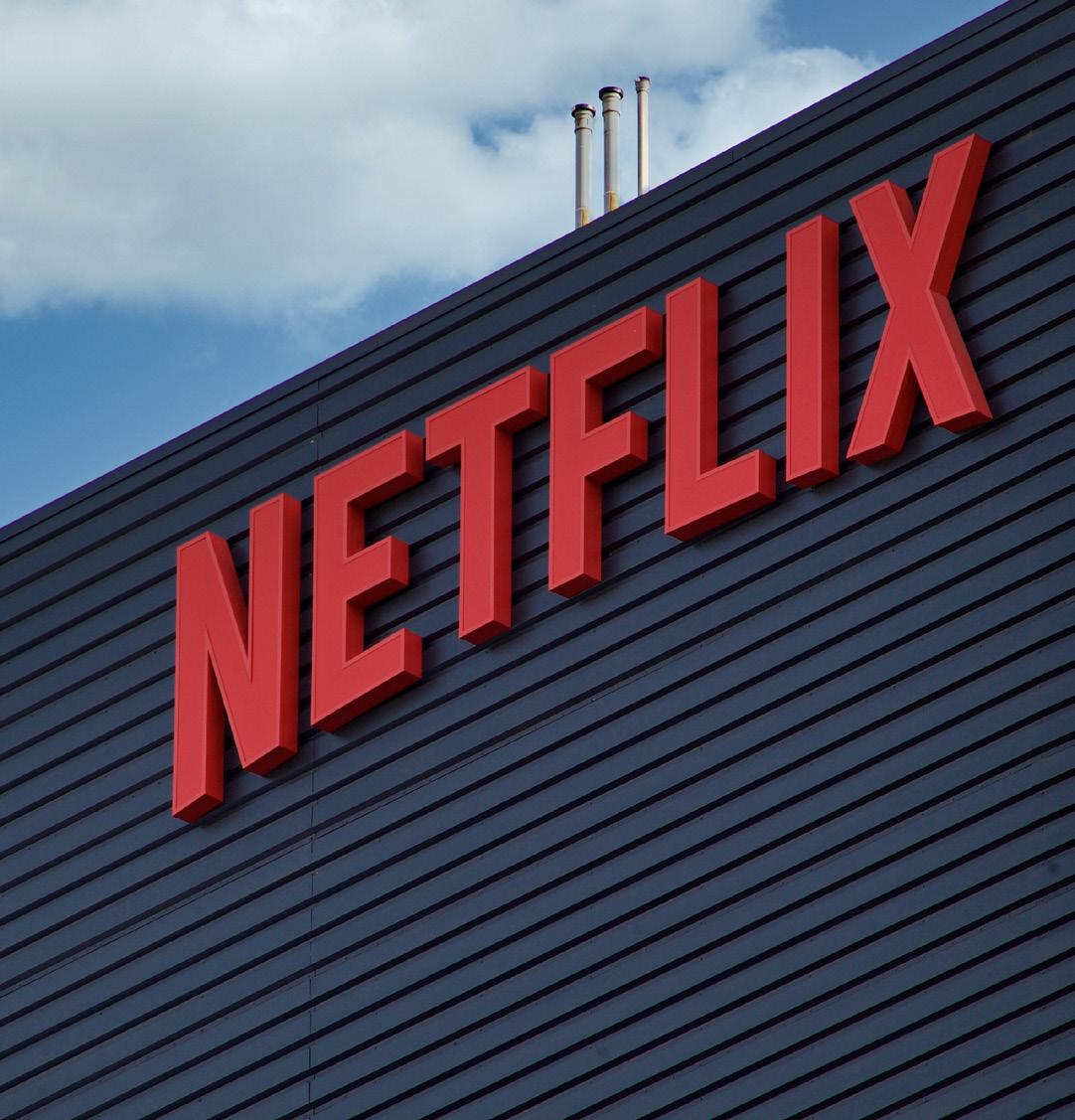
Reed Hastings said, "What's next is becoming a great Turkish and Egyptian content developer and sharing that with the world."
In the streaming wars, content
• Netflix has about 223 million paid subscribers
• Amazon Prime Video expected to beat Netflix by 2027
• Netflix's net income was more than $5 Billion in 2022
• Netflix is the 7th biggest internet company
• Slovakia has the most Netflix content
• Netflix's largest share of subscribers are millennial
• Netflix subscribers watch sports the least often
matters. Despite losing customers, Netflix has shown market strength. Kantar's Sangari claimed it offers content and an easy-to-use interface to keep subscribers engaged.
Streaming is growing. Kantar reported that 113 million US homes used streaming services in June 2022, 88% of the total. The average home has five streaming service subscriptions per study. Hastings says Netflix's rivals aren't only streaming services.
In 2017, Hastings called sleep Netflix's biggest competitor. "You know, think about it, when you watch a Netflix show and get addicted, you stay up late," he remarked.
In 2019, he said video games were stealing more customers than competitors.
"We take consumer screen time, both mobile and TV, from a wide range of competitors. We need to compete with Fortnite more than HBO in this very fragmented industry," Hastings said.
Source: influencermarketinghub.com
Even as Disney+ gets more members, Hastings is secure in Netflix's position. "Our competitors are investing heavily to drive subscribers and engagement, but building a large, successful streaming business is hard – we estimate they are all losing money, with combined 2022 operating losses well over $10 billion, vs. Netflix's $5 billion to $6 billion annual operating profit," the company wrote to shareholders.
Reed Hastings stated he was not in this for the easy money. Subscription after subscription, he intends to develop a "world-changing" enterprise.
• Netflix customers in Pakistan get the best value for money editor@ifinancemag.com
The Landco Beachtowns offer a sense of balance away from the bustle of city life, incorporate sustainability in its development, and feature the best of the Batangas destination
Landco Pacific Corporation — known for pioneering premium landscapes for more than 30 years in the Philippines has recently been recognized as the "Best Luxury Leisure Concept in the Philippines" for its BeachTowns named 'Club Laiya' and 'CaSoBe' at the International Finance Award 2022.
After successfully developing the upscale beach communities of Punta Fuego, Landco once again raises the standard of luxury beachfront properties. The master-planned communities known as 'Landco BeachTowns' have pristine white beaches, easy access to the city, WiFi, top-notch infrastructure, sustainability features, cutting-edge services, and recreational amenities.
These Resort Estates are located in Batangas, one of the most popular tourism and recreation areas close to Metro Manila. These resorts are considered a dreamy beach escape for city dwellers, weekend warriors, and those who like to work from the beach. The resorts are more accessible than other tourist destinations in the Philippines as it is just a two to three hours
drive from Metro Manila.
The Landco Beachtowns offer a sense of balance away from the bustle of city life and capture the best that Batangas destination has to offer, including balmy shores, long stretches of white sand, clear waters, tree-lined pathways, bike lanes, and shared spaces designed with the sea and marine life as inspiration. It also has access to modern hospitality facilities.
The properties provide their customers with the ideal seascape for their dream homes and businesses. In addition to the residential and commercial areas in the inclusive seaside communities of Resort Estates 'CaSoBe' and 'Club Laiya', there are the exclusive residential beach communities of 'Playa Calatagan' and 'Playa Laiya'.
The Resort Estates provide mixed-used residential and commercial projects for the tourism industry. These developments are intended for people who prefer to be immersed in the middle of a bustling tourist area, mix with leisure seekers and the sporty set, and have the choice of building their own home or place of business on

the beach. Owners and investors can construct their ideal beach house, second home, or an innovative new venture that targets the tourism industry on real estate in these Resort Estates.
Investing in the Resort Estates will help investors grow value over time, the best example of this is Punta Fuego, a high-end Landco property that has established a strong foothold in the luxury market. Since its introduction in the 1990s, its real estate value has increased by nearly 1,200%. Given Landco's past record, it is predicted that the investment in Landco BeachTowns will result in a long-term increase in property value. It is a lasting legacy that can be passed on to the next generations, ensuring the well-being and financial security of many generations down the line.
The 15-hectare CaSoBe in Calatagan, municipality in the Philippines, is referred to as the playground of the 'old rich' that offers a stunning view of the sunset, a relaxed resort atmosphere, and quick access to golf courses, equestrian clubs, dive sites, cultural, and historical attractions. The CaSoBe is classified as commercial or mixeduse. Investors enjoy the stature and benefits of owning a beach property in a thriving resort setting.
The 23-hectare Club Laiya in vibrant Laiya, San Juan, bustling with tourists and visitors, caters to those with an active lifestyle from sailing, paddle boarding, kayaking, and beach volleyball to beach yoga. Within Club Laiya are the Seaside District, the Premier District, and The Spinnaker, catering to the diverse preferences of the tourist market and
serious investors.
The Seaside District features mixed-use commercial and residential spaces with easy access to the white sand beach. Offering a gated resort and lush forest community for those who value a serene environment and a broader scenic view of Laiya’s mountains and greenery, there’s the Premier District.
The Spinnaker was recently unveiled as the soon-to-rise 22-story stunning structure that resembles the headsail of a yacht. The Spinnaker will carve the sky as the new iconic architectural landmark and premium condotel at the beachfront of Club Laiya. The captivating medium-rise beachfront premium condominium, with terraced levels and luxurious cuts, provides all units with an expansive view of the sea by Tayabas Bay and some units offer the scenery of both the seascape and landscape punctuated by Mt. Daguldol.
Being strongly committed to sustainability in its real estate ventures, Landco has always offered its investors socially and environmentally responsible
investment options. Its Resort Estates 'CaSoBe' and 'Club Laiya' are both LEED (Leadership in Energy and Environmental Design) registered, with a double-piping system for water recycling – the first in the Resort Estates and also The Spinnaker, permeable pedestrian lanes, treelined walkways, and picturesque bike lanes around the beachside properties to reduce carbon footprints.
Millennial Resorts, Landco’s hospitality arm which manages the leisure facilities of its Resort Estates, was awarded the very first EDGE (Excellence in Design for Greater Efficiencies) Certification for a resort hospitality project in the country, for its Crusoe Cabins at CaSoBe.

The pod-like Cocoons are available in both these Resort Estates, and the unique camper vans of Camperisti at Club Laiya.
Complementing the beach experience are Aquaria, a water park with a three-story pool slide at CaSoBe, and the Beach Club at Club Laiya. For foodies, Captain Barbozza restaurant and bar showcases a feast for the senses. A venue for corporate events, sports, and weddings, the Canopy is highly-sought after at CaSoBe.
In 1995, Tatu Ylonen developed SSH to replace the use of Telnet, a network protocol that lets users connect to remote computers
SSH (Safe Shell) is a network protocol that permits secure communication between two devices and is frequently used to access remote servers, transfer files, and run commands. In 1995, Tatu Ylonen developed SSH to replace the use of Telnet, a network protocol that lets users connect to remote computers, typically to test connectivity or remotely manage a server. SSH was required because Telnet was not secured or encrypted in any way. SSH is now widely accepted as the industry standard for remote access, and system administrators now use it to securely connect to their own computers or administer servers. SSH is frequently employed to tunnel traffic via unsecured networks, such as public Wi-Fi hotspots.
SSH access is used for many different things, such as transferring files, running commands, and remotely logging into servers. The SSH clients PuTTY (Windows), Terminal (Mac), and Linux Shell are some of the most well-known ones. SSH is a strong tool that may be applied to
many different jobs. Experts say it is important to remember that SSH is not meant to be used as a general-purpose file transfer protocol, instead users can use an application like SFTP to move files between two computers.
One must have a user account on a web hosting server in order to gain SSH access. One who is accessing can create an SSH key pair once they have a user account. The private key will remain on the local machine while the public key is added to the authorized keys file on the server. One can connect to the server with an SSH client when the key pair has been generated. There are other SSH clients available, but for Windows users experts suggest PuTTY and for Mac users suggest Terminal. There should already have a Terminal programme installed if one is using Linux. Once launched, choose the SSH client, and enter the hostname or IP address of the server into the connection settings. After choosing 'SSH' as the connection type enters login details. After providing all the required details, click "Connect" to establish a connection to the server. If the details are correct a user will get a password notification request. After entering the password the server's command prompt will appear. From this point, the user can issue any commands that would typically be issued on the server. Enter 'exit' at the command prompt to
Safe Shell is a network protocol that permits secure communication between two devices and is used to access remote servers, transfer files, and run commands
break the connection to the server. PuTTY is also available for Linux (through Ubuntu Software Centre) and Mac (via Homebrew).
SSH encryption is a process that uses mathematical algorithms to encode data. The data can then be decoded by the sender and receiver using a secret key. This procedure aids in ensuring that the data is kept private and unaltered while in transit. Additionally, SSH offers authentication, assisting in limiting unauthorized access to systems and data. Public-key encryption and symmetric key encryption are the two primary types of SSH encryption. One key is used for encoding and the other for decoding in public key encryption.
The sender and receiver share the keys, which are typically generated by a third-party provider. The same key is utilized for both encoding and decoding in symmetric key encryption. This means that before any data can be encrypted or decrypted, the sender must first send the key to the recipient. While both symmetric key and public key encryption are safe, symmetric key encryption is frequently used for high-speed data transfers because it is frequently faster.
On all of the major mobile operating systems, including iOS and Android, Secure Shell is accessible. It offers a safe way to access the command-line interface (CLI) on mobile devices, enabling the user to execute commands and send files without having to worry about someone listening in on the conversation. Users need to install a client app, such as Terminus or Connectbot, on mobile devices to use SSH. Once the app is installed, the User can use the connection screen to enter the server's web address or IP address to establish an SSH connection. Additionally, users must enter their username and password (if using password authentication).
Although SSH is not entirely free, it is free for many purposes. Users have to pay for the server when using SSH, for instance, to access a remote server. However, there is no fee if the user wants to connect via SSH to a friend's computer. SSH is typically free for personal use, but some business applications charge a fee.

Experts say it is less straightforward with some browsers. For example, Google Chrome simply utilizes the OS's default settings, so if a user machine connects
using SSH, Chrome will do the same. Chrome can also be started from the command line with the '— proxy-server' parameter, but this is undoubtedly more work than simply using another browser. Experts suggest Mozilla Firefox or Microsoft Edge browsers which support SSH.
SSH encrypts all communication between the client and server, making it far more challenging for attackers to eavesdrop on conversations. This is crucial when a user is sending sensitive information like passwords or financial information. SSH also has authentication features, so only people with permission can access the server. In order to do this pairs of public and private keys are used. Both the client and the server have copies of the public and private keys. The server uses the client's public key to confirm that it has the private key when the client tries to connect to the server. The SSH gives access to the user only if things are in order.
SSH clients come in a few different types, but the open-source versions are the most widely used. In general, open-source software is thought to be safer than closed-source software. Although choosing an open-source or closed-source SSH client is entirely up to the user, experts advise using open-source clients for security-related reasons.
What sort of data can be secured using SSH?
SSH is an excellent tool for protecting data in transit, as it can be used to encrypt traffic between two computers or secure data being sent over the internet. In order to securely connect to remote servers, SSH is frequently used to build tunnels between two computers. Additionally, it can be used to backup databases and files securely and to secure data transmission.
SSH access is a great way to manage a web server remotely. When using SSH, there are a few considerations. It is important to make sure that the user is connected to the correct server. Users could also confirm the SSH key fingerprint of the server to ensure the security of the connection. Last but not least, users must be careful to protect their SSH accounts with a secure password.
In order to create the SSH keys the user has to follow the five steps. First, users have to use the SSHKEYGEN command. Second, users need to copy the ssh-key. After that, users have to install the SSH-KEY. To do this, the user will use the SSHCOPY-ID command. This works on a Unix or Linux server. Third, users need to add to the Wheel or Sudo group admin account. Fourth, users need to disable password Login. Fifth, users need to test their passwordless SSH-KEY Login. To do this, the user should use the SSH_ USER@server-name command.
Security is always at the top of the list when it comes to choosing
SSH market share between 2015 - 2022
(In Million US Dollars)
Source: Statista
a web hosting provider. Experts say, the user provider should use effective encryption techniques and the user should ensure that their servers are well-protected when it comes to SSH access. Ease of use is also important. Users always want a hosting company that makes it simple to set up and manage SSH access. Also, users should always take price into account, if on a tight budget. Finding a provider with affordable prices without compromising on quality or security is important. Following is a list of the top hosting companies that provide SSH access:
Bluehost: For SSH access, Bluehost is a fantastic option. Their servers are well-protected, and they provide powerful encryption techniques. Bluehost is a fantastic option for people who are new to using SSH because it is simple to set up and manage. And lastly, Bluehost provides affordable
prices without compromising on reliability or security.
HostGator: A leading supplier of safe and dependable web hosting is HostGator. All of their options, including shared hosting, virtual private servers, and dedicated servers, have SSH access. To protect your data, HostGator uses reliable encryption techniques, and their servers are well-guarded. Additionally, they include an intuitive control panel that makes management simple.
InMotion Hosting: InMotion Hosting provides robust security and simple SSH access management. They have affordable prices and a variety of plans to choose from.
programme as with SSH. However, even while using a less secure tool, there are several things users can do to assist keep data secure. Users can make sure that the program being used is up to date. Older versions have security vulnerabilities that have since been fixed. Users should be careful about what information is shared through the program. Experts suggest users should not share sensitive information unless confident it will be kept safe.
Without using SSH, there are a few different ways to connect to a remote server. The list of SSH substitutes are as follows:
in replacement for the default Terminal software. It consists of features like supporting SSH, telnet, and raw socket connections, automatic reconnection, scriptable with Lua, cross-platform support for macOS, Linux, Windows, and more.
Mosh: A free and open-source alternative to the SSH terminal programme is Mosh. Any server with an active SSH daemon can be accessed with Mosh. Mosh has several features that make it more reliable than SSH, including UDP support which means that Mosh can reconnect if the connection is dropped, without losing any data. Mobile device support feature that works well on mobile devices with high latency or unstable connections.
Different third-party applications have varying levels of security. Users might not be getting the same level of security with a less secure editor@ifinancemag.com
Eternal Terminal: One method for connecting to a remote server without using SSH is through Eternal Terminal. A telnet client and open-source terminal emulator, it works on all platforms. On macOS and Linux, it can be used as a drop-

The world's largest coffee producer, Brazil, is investing in eco-sensitive technology to increase yields and reduce herbicide use
Coffee consumption is a daily routine for an estimated one billion people worldwide, but many coffee drinkers might not be aware that the beverage they are frequently sipping contains at least some Brazilian beans.
According to Christiano Borges, the head of Ipanema Coffees, the largest producer in the nation, Brazilian beans are well-known for their form and sweet taste. "As a result, our coffee serves as a base in many coffee blends around the globe," he added.
The world's largest producer of coffee beans is unquestionably Brazil. It provides more than onethird of the world's beans, or 37% in 2020. Vietnam is in second place with 17% of the supplies.
Brazil has about 70% of the expensive arabica species of coffee plants used to produce fresh coffee. Robusta makes up the remaining 30% of the crop and is primarily used to make instant coffee.
Brazil's annual crop dropped by almost a quarter
in 2021 due to a drought in its primary coffee-growing region, concentrated in the south-eastern Minas Gerais, So Paulo, and Paraná. It is a problem for Brazil and the global supply of coffee in general.
Coffee bean supplies have decreased globally, which has led to an increase in wholesale prices since last year.
The biggest coffee producers in Brazil are increasingly relying on technology to assist them in growing and processing the best crop possible, both in terms of volume and quality, to mitigate any future production declines.
Okuyama, one of these companies, claims it is investing at least 1/10th of its revenue in technology. It is from Minas Gerais and has 1,100 hectares of coffee plantations (2,718 acres). The company's employees use a computer program called Cropwise Protector, created by the Swiss-Chinese agricultural technology company Syngenta.

The tool provides farm workers with a visual evaluation of the plantation or field on a tablet computer or laptop, thanks to connections to ground sensors and satellite pictures.
Instead of treating an entire field or farm, they can rapidly apply drip irrigation or pest control techniques to a particular region that may require them. This much more focused approach is supposed to be quicker and more environmentally friendly.
Bruno Hiroiti, manager of coffee beans at Okuyama, said, "Every year there is a new challenge, and these technologies help us to overcome those barriers."
They have also invested in technology that enables them to monitor the temperature during the drying of coffee. The type of coffee determines the process.
After harvest, Okuyama dries some of its coffee beans in drum heaters to prevent spoilage while being stored before being roasted. Getting the temperature and timing right is crucial to avoid wasting the beans and the electricity used to run the heaters.
Christiano Borges claims that Ipanema Coffees, which has 4,300 hectares of farmland spread across three sites in Minas Gerais, has also heavily embraced technology recently.
“We invested significantly in semiautomated agriculture, where the system assesses the water deficit and the weather to provide suggestions for each area,” he said.
He continues by saying that the improvements are aiding the business in lessening the effects of climate change. "Climate issues like droughts and rising global temperatures exist," he added.
He said productivity had increased thanks to the company's irrigation system, a form of climate insurance.
Ipanema claims to be another user
of Cropwise Protector and to have trackers on all of its tractors to monitor productivity. Gustavo Michalski, the company's agricultural coordinator, explains that it "helps us monitor agricultural pests using only a tablet."
Ipanema affirmed that they can monitor the indicators that tell the location and intensity [of a specific problem] in each area, which enables the individual to handle the issue and make more assertive sustainable decisions.
Ipanema has been using automated selection devices that only select the ripe beans, which are yellow and red, after harvesting the beans for several years.
Rodrigo Ferreira, the company's industrial director, says, "We set the machine by programming the colours we need." The beans that are not the defined colour will be ejected by a compressed air jet once we place them on the conveyor belt.
According to Flora Viana, Syngenta's global marketing manager for digital agriculture, Brazilian coffee farmers "no longer increase their efficiency just by buying more land."
She continues, "Growers need to optimize their production processes instead because we are reaching the limit of the available areas."
However, Christiano Borges continues to add that technology depends on having skilled personnel. If we don't have a team that is motivated and ready for them, it is useless to have great tools.
He further stated that Ipanema employs 800 people, many of whom attend colleges for training.

However, not all Brazilian coffee growers utilize technology at this increased rate.
Even though significant corporations like Ipanema and Okuyama have
adopted it, the numerous small farmers who grow 66% of the nation's food are lagging.
However, the nation hopes that the rollout of 5G mobile phone networks will enhance web access in rural areas, increasing the use of technology like Cropwise Protector.
Brazilian Nanotech reduces herbicide consumption exponentially "New initiatives must help farmers rapidly adopt sustainable practices and increase the productivity of existing agricultural land, so that they can improve their own well-being and ease pressure on forests. Efforts to alleviate poverty among farmers also need to address gaps in financing, agricultural training, and tools for advance planning. This is where technology can play a key role. Data, digital and remote-sensing technology, and the Internet of Things represent the future of agriculture, and are already in use on big farms in rich countries. But technology can also help small farms in poorer countries," World Economic Forum commented in 2019.
Nanotechnology is matter manipulation at a near-atomic level. The operation of construction ranges in size from 1 to 100 nanometers. For example, a herbicide encapsulated in nanoparticles allows the concentration of the active ingredient to be reduced by 80 times, according to Elson Longo of the Federal University of So Carlos (UFSCar).
The amount of atrazine herbicide needed to control weeds has been reduced by 80 times, thanks to new technology in Brazil. The study was carried out by the Environmental Nanotechnology Group of the Institute of Science and Technology of Sorocaba at the Universidade Estadual Paulista (Unesp), under the direction of chemist
Leonardo Fernandes Fraceto, professor at the Department of Environmental Engineering at Unesp and holder of a Ph.D. in Functional and Molecular Biology from Unicamp.
In 2021, researchers from the State University of Londrina worked with other scientists to patent the novel technology.
Manufacturers typically recommend two kilograms of atrazine for every hectare of cropland. However, in 2019, the research team could use ten times less atrazine—200 grams per hectare—thanks to the development of nanoparticles that encapsulate the herbicide and improve its use. In addition, the group claimed they'd taken things further by creating a new technology that has cut consumption by 80 times the advised two kilograms.
Professor Fraceto explained in a note that 25 grams of the herbicide contained in this new technology molecule must be diluted to produce the same results as the original formulation.

Companies trying to reduce their emissions up until recently used some
general methods to calculate those emissions, attributing them to a specific kind of commodity sourced from a particular region (for example, soybeans grown in Brazil). Scientists would have used a static set of parameters representing emissions from an average farm to generate an emission factor for soybeans in Brazil.
Scientists would calculate these emissions at a ton of CO2e/ton of ingredients. They would be non-locationspecific (the differences in management between neighbouring farms, or even those in different parts of the country, wouldn't be captured with this static emission factor accounting method). Experts would also fix them (unaffected by weather conditions or yields) and make them independent of location.
What then are these new tools that give top agricultural producers and food manufacturers access to information about the situation and effects of the world's food production? Among these technologies are: Images from space, big data, and impact simulations.
We can map crop production areas, monitor plant growth stages, determine the use of climate-smart production
practices (or their absence), and even forecast yields using satellite imagery. The use of satellite imagery in monitoring food production systems allows us to "see" the key components of agricultural production and manage both emissions and the risk of production disruptions brought on by supply-chain problems or climate change. The "symptoms" of the processes that shape the land, rather than causes or results, are best captured by satellite imagery. As a result, it is not the data for agriculture's Holy Grail but rather a solution component.
The rapid adoption of advanced technology in agriculture is a trend that is likely to continue in the future. It is because advanced technology can help farmers increase yields, reduce costs, and improve the quality of their products. In addition, advanced technology can help farmers better manage their resources and protect the environment.
Technological advancements in agriculture are also helping to stop deforestation. Using less land to grow more food can help preserve forests and the environment.
Having an industry veteran like Mr. Siang
Tang Tan leading Oman SATS has benefited the company a lot

Oman SATS LLC recently bagged the honour of 'Most Innovative Cargo Handling Company' at the International Finance Awards 2022. Its CEO Mr. Siang Tang Tan also went on to win the 'Best CEO – Air Cargo Handling – Oman 2022'. These awards are testimonies to the cargo company’s solid track record under the leadership of Mr. Siang Tang Tan, since he became the company CEO in 2016.
Known as “ST” amongst industry professionals, the Oman SATS
CEO has spent close to thirty years in the aviation industry, apart from having the experience of working in different cultures and environments. He has worked in Singapore, Hong Kong, China, and now Oman. Having an industry veteran leading the Oman SATS has benefited the company a lot.

Mr. Siang Tang Tan started his professional journey in Singapore in 1994, and has helmed many operational responsibilities in airports around the globe, apart from being the CEO of Hong Kong’s Asia Airfreight Terminal (AAT). He also worked as a member of Hong Kong’s Logistics Council. In addition, he also headed the Beijing Aviation Ground Services (BGS), which handles over 800 flights on daily basis.
ST took over the responsibility of heading the joint venture (JV) between SATS of Singapore and Oman Air in 2016, and since then, has guided Muscat International Airport’s cargo set-up to be one of the best in the world, in terms of service standards and innovation. The drive towards customer service, apart from bringing recognition from industry players, wooed the users of the cargo facility as well. Right now, the company is known as the exclusive cargo handler of Oman Air and Salam Air.
Under Mr. Siang Tang Tan’s leadership, Oman SATS has contributed to the industry's transformation through its introduction and utilization of technology and digitalization. The innovations include a mobile application, self-service kiosks, and the introduction of paperless transaction methods like e-airway bills.
Paying close attention to customers’ needs has also been put at the forefront of Oman SATS’ internal
processes, and this procedural fine-tuning has resulted in shorter waiting times and more transparent cargo handling operations, with the mindset being transformed into a service-oriented one.
Mr. Siang Tang Tan is also known for his attention towards the staff’s welfare. His emphasis on continuous training and selfdevelopment has upgraded and equipped the Oman SATS workers with new skills and techniques. Engagements and communications with these professionals are now done through the monthly Staff Birthday Celebration, Tea Session with CEO, Employee of the Month awards, Year End Staff Appreciation Day and many other engagement initiatives.
The company’s core values like customer focus, excellence and innovation, integrity, respect and accountability, people and collaboration, and safety and security, have been driving its successes over the years. Mr. Siang Tang Tan’s vibrant and dynamic leadership, along with the Oman SATS management team valuing and promoting the above-mentioned principles have played a pivotal role in the company’s rise in the country’s air cargo landscape. The International Finance Awards have further strengthened the company’s resolve to live up to its mission of serving the industry and the Sultanate of Oman.
The innovations include a mobile application, self-service kiosks, and the introduction of paperless transaction methods like e-airway bills.
Residential Mortgage Services, Inc. (RMS),
While the COVID pandemic has acted as a booster in online banking’s growth story, the risks surrounding the financial services’ cybersecurity front are rising as well. As a result, institutions must be proactive to avoid coming under the regulatory hammer, while dancing to the hackers’ tunes. While additional rules are appreciated, frequent operational modifications as per these regulations only increase the load on institutions. For example, in response to the increasingly unstable security environment financial institutions are currently confronting, the New York State Department of Financial Services (NYDFS) recently recommended significant revisions to the Part 500 Cybersecurity Regulation. By the proposed changes, anticipated to take effect in 2023, there will be much higher expectations for cyber expertise from businesses. There will also be earlier notifications of cybersecurity events and ransom payments, apart from stricter auditing for large organizations.
As we saw with the initial 23 NYCRR 500, the NYDFS is not afraid to enforce laws harshly, and several fines totalling millions of dollars have already increased the stakes for compliance. However, the advice offered to banks to accomplish
this compliance still needs to be clarified. All too frequently, after enforcement measures have been taken, banks and covered entities, such as health insurers and credit unions, are left to rely on hindsight, only considering the lessons learned and fines paid after the fact. Security decisionmakers urgently need to rethink their approach to data protection as pressure on banks to comply with regulations grows.
Since they hold on millions of consumers' wallet data, banks and credit unions are top targets for cybercriminals. Although this has always been the case, UK-based IT firm Sophos' yearly analysis of financial services security shows how threats have increased in size, intelligence, and ruthlessness. For instance, ransomware increased by 62% in 2021. Although more than half (52%) of the targeted firms paid the ransom, only 10% had their data returned. These alarming statistics demonstrate how vulnerable banks are becoming in front of these data theft attempts. With the significant increase in double-extortion ransomware tactics, risks abound when hackers first steal copious amounts of confidential data before encrypting the target's files. Criminals can threaten to publish the stolen data on the dark web after this encryption. Additionally, zealous regulators can cause severe reputational and financial harm to
paid $1.5 million for neglecting to notify about a data breach
organizations. The NYDFS collected $6.3 million in fines for cybersecurity non-compliance from four separate companies in the state in just three months in 2021. Despite having protections in place, one of these companies, Residential Mortgage Services, Inc. (RMS), paid $1.5 million for neglecting to notify about a 2019 data breach. In addition, a $3 million punishment was levied against National Securities for several security violations, including the absence of multifactor authentication (MFA) or "equivalent" cybersecurity measures. These businesses not only paid hefty fines but also incurred expenses for forensic investigations and cleanup, in addition to reputational damage.
The increased accountability in the financial services sector can only be good. However, banks are mainly left to their own devices to navigate the path to successful and compliant cybersecurity, as "constructive ambiguity" shapes the original NYDFS rule. This indicates that many still rely on cursory checkbox methods for automatic measures like encryption.

Organizations must alter their trajectory in the face of increasing pressure from regulators and threat actors. Because of today's enlarged data
thefts, banks' accelerated digital transformation, and growing cloud use, centralized approaches to data security need to be revised. Any bank that forgoes using specialized and efficient encryption exposes itself to even the simplest ransomware and data exfiltration assaults.
This is because centralized identity and downstream access control invariably open the door to illicit activity. From the moment they obtain legitimate credentials, attackers, both internal and external, are granted complete, continuous access to all systems, databases, and files. The organization could then lose millions of dollars due to the exfiltration of sensitive information files.
In recent years, industry giants like Equifax, Yahoo, and the Office of Personnel Management, have had significant data breaches caused by stolen credentials. The use of compromised credentials is once again the most frequent cause of a data breach, costing an average of $4.5 million per event, according to the most recent IBM report.
Data encryption is irrelevant when centralized controls and checkbox identities are used. Furthermore, conventional encryption lacks protection against data exfiltration because it relies on centralized keys connected to the same user credentials that the attacker has stolen or copied.
An additional layer of protection: Multifactor encryption Banks must abandon antiquated defence methods and alter their mitigation strategies as the security and regulatory environments change. To protect sensitive data, even when nefarious actors are present inside the perimeter, they require layered solutions that function when everything else fails.
It is crucial to have a sophisticated, decentralized data protection plan. Financial businesses can stop relying on identification as the cornerstone of all data security through the deployment of multifactor encryption and distributed key management (DKM), guaranteeing that sensitive data is protected during an exfiltration event. Criminals rapidly realize that there is no one point of weakness, making all their efforts futile.
What is the operation of multifactor encryption? AES-256 is used for data encryption at rest. To eliminate central points of attack, main points of failure, and risky reliance on identity and access management controls, a multifactor solution generates a unique key for each object before automatically fragmenting and distributing the critical shards across physical devices, such as laptops, mobile devices, tablets, or servers.
Due to multifactor encryption with DKM in place, hackers cannot decrypt files even after gaining access to a system. This is also true when banks move data to the cloud because unstructured data is still encrypted with several factors, making it impossible for anyone

to access it, not even the cloud provider. As a result, only a small group of individuals have access to the critical shards on the approved physical devices.
The examination of data consumption and encryption status for compliance and business reporting requirements is also made possible by multifactor encryption. For example, banks can demonstrate their active compliance with authorities during audits and inspections, thanks to an irrefutable audit trail, assisting firms in meeting escalating standards. Administrators can also design unique notifications and warnings with detailed user activity logging, enabling data insights to be fed into current security monitoring programs.
Overcoming the regulatory obstacle
Account numbers must be unreadable when stored electronically by large non-financial institution originators, third-party service providers, and senders, according to the US-based National Clearing House Association (NACHA). This organization oversees electronic payment systems between nearly every bank and credit union account within the American jurisdiction. This represents a significant departure from obsolete identity and access management security methods. Financial companies would benefit significantly from technology like multifactor encryption, which eliminates the risk of file exfiltration while skillfully balancing user accessibility and data protection.
Banks must rely on something other than checkbox solutions and
Protection Act, which will go into effect in 2023, calls for federal data protection legislation will grow.
Businesses may experience uncertainties due to the fragmented compliance requirements imposed by the US and international data privacy laws. In addition, the lack of a data transfer agreement between the EU and the US will increase doubts about the legitimacy of transatlantic data transfers.
Compliance is only one aspect of privacy
negotiations.
Thought Machine has applied for and been granted ISO 27001 certification and SOC 2 Type 2 accreditation, which outline requirements for putting in place information security management systems and show that internal controls and procedures are reliable and safe. Along with adhering to GDPR, the vendor complies with all pertinent data privacy legislation in other significant countries where it conducts business, including Singapore, Australia, and the US.
traditional centralized encryption when regulatory scrutiny and ransomware concerns are at an all-time high. Firms across the industry may secure themselves and demonstrate best-in-class regulatory compliance using distributed vital management and multifactor encryption, avoiding the shame of excessive fines and reputational embarrassment.
Uncertainty is a result of fragmented regulations
Privacy is undoubtedly a compliance component, but the organization's culture must be changed for it to matter genuinely. Poorly controlled access within an organization frequently results in data privacy violations. Humans are the weakest link in the chain of privacy and security. Thus people and processes are just as important as technology. However, as remote working becomes more prevalent, controlling user access and protecting your essential data becomes more challenging.
Organizations seeking ISO 27001 certifications
Cookies
Web cookies and Apple's Identifier for Advertisers are two tracking techniques that have enabled personalization and targeting of advertisements at a level of complexity never before achieved. However, they have also raised the possibility of privacy abuses. Providers may no longer be able to rely on cookies to increase the effectiveness of customer outreach in various jurisdictions. Institutions that need to develop a plan to protect and expand their access to first-party data may need to increase their sales and marketing expenditures by 10% to 20% to achieve the same results.
In the meantime, the UK's Department for Digital, Culture, Media, and SPORT is considering using cookies in local circumstances without user consent or where it would benefit the user.
Similar to the EU's GDPR, China's centralized Personal Information Privacy Law offers a comprehensive set of regulations regarding data protection. The US still has a uniform privacy framework, but as more states embrace laws like Virginia's Consumer Data editor@ifinancemag.com
Obtaining independent external certifications for their privacy program and practices is crucial for new entrants to confirm they are handling personal data correctly. These include ISO 27701, the EU's binding corporate rules, and APEC's cross-border privacy rules. In addition, these designations can benefit newcomers working on delicate, mission-critical operations, such as core-system modernization, as they can save time and effort during contract
Most financial institutions want to ensure they are knowledgeable about artificial intelligence and do not fall behind because doing so can put them at a competitive disadvantage
The rise of artificial intelligence (AI), revolutionising processes across the banking sector, is one of the most exciting technological innovations in the previous decade. Leaders in the industry are eager to use artificial intelligence's potential for understandable reasons. For instance, technology offers a lot of possibilities to automate manual tasks and increase productivity. Additionally, you can use artificial intelligence in Regtech systems to track transactions for outliers, enhancing businesses' anti-money laundering policies and thwarting potential fraud.
Most financial institutions want to ensure they are knowledgeable about artificial intelligence and do not fall behind because doing so can put them at a competitive disadvantage. A hasty adoption of technologies has resulted, with at least 85% of financial institutions utilising artificial intelligence in some capacity. In addition, the employment of artificial intelligence alone has resulted in a shift in data handling away from conventional "rules-based"
systems, which are programmed to follow specific criteria while processing data.
There is no indication that this trend will stop growing. According to surveys, banks and insurance businesses anticipate an 86% increase in AI-related projects' expenditures by 2025. Although investing in cutting-edge technology can have a big payoff, there's a chance that this rush to adopt artificial intelligence is leaving some critical gaps.
Many firms may overlook the reality that a rules-based system still has considerable advantages because so much of the current industry hoopla is about artificial intelligence. After all, rules-based technology continues to be a cutting-edge area of data science where significant research and development are being done.
The fact that rules-based systems are far simpler to comprehend and defend








































































































































































































to a regulator may be the most crucial factor. For example, if an organisation is requested to justify a particular choice by their systems, they can quickly show the standards used. However, the identical assignment would be significantly more challenging to complete using an AI system because their decisions are based only on their own opaque and predefined criteria. As a result, it can be difficult to justify these choices, which can make businesses difficult with authorities if the system fails or is thought unjust.
Artificial intelligence has come under fire for making prejudice against minority groups applying for loans worse. Google investigated if artificial intelligence could aid businesses in selecting borrowers, but the research was shelved because it was thought too risky from an ethical standpoint. Financial authorities in the United Kingdom have advised banks that they can only use the technology if they can put the required safeguards in place, ensuring that such prejudices are not perpetuated. This is because they are aware of the possible issues with artificial intelligence. They must also be able to describe the decision-making processes used by their technology.
Regulators are increasingly requesting more information regarding artificial intelligence, partly due to these experiences. How does it function? How frequently do you examine it? How can you be sure the findings it produces are accurate? How well does its efficacy compared to your risk profile? Such problems can be solved quickly if there are clear rules about how software can analyse data and serve as a regulatory guide. But if businesses adopting artificial intelligence want to go back and put the initial decisions into proper
perspective, they will have to do a lot of tedious work. For this reason, rules are preferable to artificial intelligence in cases with the same outcome.
Of course, this does not imply that financial organisations do not use artificial intelligence in various ways. Instead, it only makes the case that a combined strategy that combines artificial intelligence and rules may be more effective. For instance, very high levels of risk detection can be ensured via a solid and transparent rules-based approach, with the power of artificial intelligence being utilised in post-processes.
AI can bring significant value by automating these post-processes. Numerous manual operations that can be time-consuming and expensive can be automated by artificial intelligence, making the overall company process more efficient and less costly. The deployment of artificial intelligence has reportedly decreased operating costs for more than a third (37%) of financial services companies, and 34% more believe that artificial intelligence will eventually lower their cost base.
The compliance gap—the period between when risk is discovered and verified— is decreased in risk management due to improved speed and automation. Combining the revolutionary power of artificial intelligence with a rulesbased approach to risk detection that is completely visible, understandable, and accessible can enable compliance and risk management techniques that are more effective and sophisticated than before.
Aside from compliance and risk management, it is also true that artificial intelligence offers a wide
range of additional use cases that can dramatically improve the customer experience. For example, thanks to automation, predictive analytics, and artificial intelligence, customers won't have to fill out lengthy forms during onboarding procedures, which will lower consumer friction and increase the onboarding success rate. According to research, 32% of businesses that use artificial intelligence in this way have already mentioned improving customer happiness and service.
Artificial intelligence can also assist banks in providing clients with the best goods and services more promptly and successfully. For example, banks can stop prospective customers from becoming bogged down in protracted KYC and onboarding procedures. Instead, accounts can be expanded immediately, allowing users to take advantage of all the services that a bank may provide. In other words, the effective use of artificial intelligence can improve client experiences significantly while also increasing bank productivity.
For all these reasons, artificial intelligence stands out as one of the most revolutionary advancements in recent decades, and innovation will only increase. But despite all of its undeniable advantages, it is not a panacea. There will always be places where strict regulations are still required, highly skilled human capital is still precious, and corporate cultures and business procedures are still of utmost importance. If such components are missing, the technology will inevitably fail to realise its full potential, preventing artificial intelligence from having the transformative effects it might otherwise have.
Financial institutions can benefit from new technological developments
•63% of investment banks worldwide use machine learning
•In 2020, around 32% of banks were using artificial intelligence
•60% of investment banks around the world use AI in predictive analysis
•56% of financial companies implemented artificial intelligence in risk management
•The prediction is that 95% of customer interactions will be supported by AI by 2025
•Three-quarters of banks with more than $100 billion in assets report applying AI strategies
•80% of banks are highly aware of how AI and machine learning can potentially benefit them
•The global AI in the banking market is expected to grow at a CAGR of 32.6% between 2021 and 2030
•By using AI, banks are generating nearly 66% more revenue from mobile banking compared to traditional banking
Source: Datapointwithout subjecting themselves to unnecessary regulatory pressure by combining artificial intelligence with rules-based technology, another form of innovative data science.
What is a rule-based system?
A rule-based system uses rules created by humans to store, sort, and manage data. It imitates human intelligence in doing so.
A set of facts or a data source, as well as a set of rules for modifying that data, are necessary for rule-based systems to function. Because they frequently operate along the lines of "IF X happens, THEN perform Y." These rules are also known as "if statements" in some contexts.
A good example is automation software like ThinkAutomation. Segmenting procedures into phases automates the processes. The date or new business event comes first. The
analysis follows, where the system arbitrarily handles the data, violating its rules. Any ensuing automated followup procedures occur next.
Unsurprisingly, rule-based systems function according to rules. These guidelines list the events and what should happen next (or are triggered). For instance, an email with the phrase "invoice" in it might serve as a trigger. The email might then be forwarded to the finance staff as a course of action.
These laws typically take the form of if statements. "IF" describes the event that must occur, and "THEN" details the course of action. Therefore, you would need to define 100 separate rules to design a rule-based system that could handle 100 different activities. The plan would then need to be updated, and new
actions would need to be added.
In other words, you can instruct a machine using rules, and the machine will follow your instructions exactly. Rule-based systems will then carry out the actions until you instruct them to stop.
But remember that if you instruct it to act wrongly, it will do so.
Rule-based systems are frequently conflated with artificial intelligence and machine learning due to their early adoption in the area. They are neither artificial intelligence nor machine learning, though.
Given how similar the two can appear, getting them mixed up is simple. Both involve devices purportedly working independently. The distinction is that artificial intelligence is autonomous and can learn and adapt. On the other hand, rule-based systems function exactly as humans direct.
In other words, rule-based systems follow the rules set by humans rather than artificial intelligence or machine learning, which determines their actions. As a result, the system doesn't solve the problem on its own or make wise choices.
In conclusion, financial institutions are looking to adopt a rules-based approach to financial regulation that will allow them to take advantage of the benefits of artificial intelligence. This approach will help to ensure that the financial sector remains stable and efficient while also providing the opportunity for new and innovative products and services to be developed.
Finexis Advisory (HK) has expanded its reach and range of products across jurisdictions in Bermuda and Luxembourg
Hong Kong-based financial advisory firm Finexis Advisory (HK) Ltd was recently recognized as the “Fastest Growing High Net Worth Advisory” at the International Finance Magazine Awards 2022, thus validating what has been a fast-paced year for the organization.

This recognition comes as no surprise since Finexis Advisory (HK) Ltd has always provided services that have fulfilled the requirements of clients across the globe.
Be it restructuring business strategies
or adapting to the new trade practices in an ever changing landscape, Finexis Advisory (HK), which backs strategic business partnerships as a tool to drive growth, has put forward its best practices. The firm, in the last few years, has been working to establish its value in product range, services rendered as well as governance.
Finexis Advisory (HK), which was founded in 2010, has been working with its sister company based in Singapore,
as it serves as a bridge between Singapore and Hong Kong, Asia’s two key financial hubs. With the ever changing needs of High-Net-Worth Individuals (HNWI), Finexis Advisory (HK) has expanded its reach and range of products across jurisdictions in Bermuda and Luxembourg.
During an interaction with International Finance, Finexis Advisory (HK) CEO Amy Chong said, “There are definitely benefits to having access to a range of products in different jurisdictions. Such solutions can provide coverage to mitigate risks such as political and currency risks. The solutions can also be tailored to meet the specific needs of the business or individual, depending on travel patterns and residency.”
“We are also able to leverage cost savings for the clients as premium differences can vary up to 30% across jurisdictions. Partners working with us are able to value add and get the best possible outcome for their clients, and earn their trust to manage their portfolio,” CEO Amy Chong added.

Finexis Advisory (HK) is a process-driven company, which continuously sharpens its systems and operations, apart from working smarter to become more efficient while maintaining a high standard of service and value. It chooses to focus more on improving customer experiences, as the management believes in the motto of “Sustainable growth is derived from Happy Customers”.
Finexis Advisory (HK) also believes in maintaining good corporate governance and responsibilities, thus exercising strict regulations in maintaining high standards of governance to protect the interests of its clients and partners. This attracts more customers and businesses, and clients enjoy peace of mind while placing their capital with the firm.
There are many moving aspects and operational demands that an advisory firm needs to manage in order to be able to successfully place a solution for the client. Not only does it require the company to work well with business partners who have similar objectives, but longevity in the partnership also becomes crucial as well, in order to grow together.
“From the initial meeting, onboarding of the business partner, and working together to find a solution for the client, open communication is key on all fronts. Finexis Advisory (HK) prides itself on having a flat structure so that we can stay nimble and flexible to adapt to the market’s ever-changing landscape. The management is definitely not afraid
to get their hands dirty so that the junior staff can leverage on their experience, and everyone learns together,” Amy Chong said.
To keep itself future-proof, the Finexis Advisory (HK) management has already begun planning for the next phase of the advisory firm’s growth.
Amy Chong said, “It is more important, now than ever, to seek and collaborate with aligned business partners, staff, and clients to cut through the noise in the market and establish our niche in the marketplace.”
The needs of the financial sector and its stakeholders are always changing, and Finexis Advisory (HK) is always looking for opportunities to expand and seek new business partners to maintain its growth path. Breaking into new markets requires fostering new relationships, gaining new insights, and having the courage to explore new territories. Finexis Advisory (HK) is well aware of this business principle and is committed to up its game continuously, in order to serve the growing needs of HNWI, beyond the ambit of offering traditional solutions.
ATMs are becoming self-service, smart banking options in the 21st century
The Internet of Things (IoT) has the potential to positively impact the future of the 21st-century banking industry.
While explaining this phenomenon, Mike Hoy, Technology Director at Pulsant, remarked, "From a commercial perspective, this rapid expansion is enabled by a combination of high-speed, high-bandwidth 5G connectivity and rapidlydeveloping edge computing platforms. Edge computing, based on a highly connected network of regional data centres, is critical. It enables specialised gateway hubs in those data centres to process or preprocess massive amounts of data generated by the millions of devices that comprise the IoT.”
"Being close to the source of the data means this processing is accomplished at low latency – a vital requirement for many advanced applications, including artificial intelligence (AI) driven solutions and services. Processing all this data at the main public cloud providers’ data centres is not a viable option because the latency is unsustainable," he added further during his interaction with Global Banking and Finance Review.
As per ScienceSoft, "The Internet of Things (IoT) is an advanced technology that enables networks of connected devices (e.g., sensors, cameras, smart gadgets) to collect real-time data, transfer it to the cloud for processing and analysis, and react to events in real-time. IoT plays an important role in banking and finance, ensuring efficient data collection and processing and supporting digital automation of key processes. With IoT-enabled solutions, BFSI companies can optimize their services and operations, enhance the security of transactions, and offer cutting-edge customer experience."
IoT offers a range of digitalization benefits to the banking and finance industry, from 360-degree customer view to enhanced financial security, fraud detection, advanced insurance strategies, and many more.
Talking about IoT and the financial industry, in 2018, spending on this front averaged roughly $153 million. However, it has already positively impacted the financial sector and will be the next big thing to watch out for in near future. Not only companies can save a lot of time and money on data-related operations, but they can also improve their customer experience and detect fraudulent activities in a better manner. In short, it can improve the entire banking security system in various ways.
IoT plays an important role in banking and finance, ensuring efficient data collection and processing and supporting digital automation of key processes
Talking about the best cases of IoT usage in the financial industry, we have chatbots, used by banks to provide a 24/7 customer service experience through the use of virtual assistants. As per an Insider Intelligence report, by 2022, conversational assistants could allow for operational cost cuts of over $8 billion across global banks. These bots use natural language processing and machine learning to improve customer interaction and offer betterpersonalized experiences. For example, Capital One’s Eno was the first natural language SMS text-based assistant offered by a US bank. Eno can alert customers about suspected fraud, potential double charges by a merchant, or an overgenerous tip.
Then we have the innovation called smart speaker devices. Amazon's Alexa, Siri and Google Assistant are becoming hits in the banking sector as well. In 2019, NatWest piloted a voice banking feature with Google Assistant. The feature was compatible with the Google Home smart speaker and allowed customers to inquire about account balances, the latest transactions, and pending transactions.

Blockchain-based smart contracts are another innovation taking care of the security and privacy aspects of online banking, by providing better customer authentication. Blockchain-backed identity authentication ensures that customer identity credentials, which have already been in a loggedon mode on the bank's website, can't be changed. Blockchain also eases the cost of cross-border payments and increases the efficiency of trade finance processes. As per Insider Intelligence, financial institutions are investing about $1.7 billion annually in blockchain technology.
Another breakthrough innovation in this field has been Smart ATMs, which are basically Automated Teller Machines (ATMs) that have more functionality than dispensing cash. Smart ATMs enable consumers to do tasks (account opening, depositing cash and cheques, money transfers) which previously required them to undertake branch visits. Using the tech, banks are now increasing their digital footprint, while saving costs of building new branches. ATMs are becoming self-service, smart banking options in the 21st century. Powered by revolutionary data-gathering and analytics capabilities, smart ATMs now have the ability to collect massive amounts of information and
process them to that extent, where they can even predict customer behaviour and preferences. Using biometrics in these smart ATMs, customers can also gain access to their accounts in a secure manner. 5G to play a crucial role as IoT continues to evolve.

"For banks, one of the most important aspects of IoT technology is its ability to develop use cases from the data generated by billions of smartphones. Statista believes that by 2030, consumer internet and media devices such as smartphones will number more than 17 billion globally. The data is increasing in volume all the time. According to IDC, IoT big data statistics show that, with increased adoption, numbers will reach 73.1 ZB by 2025, which equals 422% of the 2019 output, when 17.3 ZB of data was produced. As companies integrate IoT devices into their network infrastructure, they will need edge infrastructure platforms to manage, process, filer and transmit this data," Mike Hoy said.
"The ability to exploit such vast networks of consumer devices will lead to far higher levels of personalisation together with, much greater emphasis on frictionless transactions and higher quality of customer experience. This is vital in a market where fewer customers now have direct relationships with bank managers or their branches. Using personalisation and customer experience to build loyalty is certain to be a key feature of retail banking as consumers are now more likely to switch bank than their parents ever were," he remarked further.
"The roll-out of 5G is pivotal for IoT because it enables faster, more stable, and more secure connectivity. For IoT to accelerate, access to high-quality connectivity is essential. Applications focused on real-time and aggregated data analytics need connectivity that has either low jitter, loss and lag or has dedicated high bandwidth. The telecommunications companies have been first movers in this market with 5G, but carrier fibre is an alternative and in many ways, more dependable. Yet we should not forget that strong IoT growth also depends on edge platforms with genuine compute power, network connectivity and resilience, and friction-free, fast access to the proprietary applications hosted with the big names in public cloud," Mike Hoy said.
The ability of edge platforms to process and transmit data from 5G-enabled telemetry devices will have a significant positive impact on aspects like the quality and speed of policy and credit approvals, thus
providing accurate, verifiable data on everything from vehicle usage to agricultural or factory outputs.
be benefited from IOT?
IoT devices can gather intelligence from the bank's user activity of a bank, thus helping the management to understand the financial needs of the clients. Apart from this, IoT can also help the bank to perform functions like sending account balance-related notifications to the client, without human assistance. Data collected via connectivity devices will provide insights into clients’ demands, allowing banks to offer better services to them. Forget about visiting smart ATMs, clients can get their basic banking jobs done via smartphone as well. In the whole process, clients’ banking experiences will get improved with timely information and tailored products. IoT is known for its quick data-gathering process. Using this, the mechanism can easily be used to collect data about the customers'
• The average American bank user has around five bank accounts
• In 2020, the global market size for wearable payment devices reached $10.35 billion

• Banking Trojans attacked 625,364 PC users in 2020
• At least once a month, 73% of people globally use online banking
• 38.4% of smartphone users make in-store payments at least twice a year
• By 2023, more than 80 million people will use neobanks in Europe
Source: Datapoint
credit cards and check bank accounts from anywhere. Since the technology is still evolving, expect a future where autonomous cars would be paying for parking, gas, rental or even maintenance service, while using its embedded wallet. Each and every home appliance and consumer equipment would be able to host an embedded, prefunded wallet that can manage its operating expenses on its own.
financial behaviour, and based on the results, personalised products can be formed as per the needs of the clients. For banks, the innovation will help the management to digitize their daily, mundane paperwork and cut down their operational expenses.
locked down with the help of an IoT network.
Another crucial benefit comes on the analytical front. The Internet of Things is all about data. An IoT network can gather a high volume of data. Special automated software then processes the data and produces useful information for the banks. Financial institutions can use this ability to gather information on their clients, something which comes in handy during the loan sanctioning process. Using IoT network gives the banks the opportunity to monitor the economic activity of loan applicants, apart from viewing trading data about private and government-issued bonds and their market volumes.
In terms of combatting fraudulent activities, IOT, armed with the biometric system, can help the bank in identifying even the slightest sign of irregularity. All transactions can be handled by a smart network of sensors and linked apps. Banks and their clients can now have technological control over payments, functioning as a vital security regulator. If a transaction gets flagged as fraud that will in turn freeze the source account. At the same point in time, the technology can also perform both monitoring and data-gathering functions, via a well-connected network of CCTV, smart alarms and other security devices. In case of a security breach/suspected fraudulent transaction, the whole operational infrastructure can be editor@ifinancemag.com
Another advantage of using IoT comes in form of smart Wallets. The 21st century is all about the invention of wearable payment devices like fitness trackers, smart watches, wristbands, and jewellery, which have smart features like allowing users to access their
Account management, leasing finance automation, automated payment through things, risk mitigation in trade finance, tailormade insurance services and P2P finance on tangible assets are some of the areas where the banks are onboarding IoT solutions to make their digital transformations future-proof. However, to enable this, banks will have to expand and overhaul their digital infrastructures. Another challenge will be finding/training staffers for handling these complex mechanisms, as all these solutions will give the desired results only when man and machine achieve perfect harmony.
Now the financial industry has access to a resilient edge infrastructure platform that comprises compute, network and cloud to deliver seamless, high performance. IoT's ongoing evolution and the ability to operate on edge computing infrastructure present a bright prospect for the finance industry and a win-win situation for both customers and banks.

Tamweel Aloula seeks to provide a unique digital experience, facilitating the process of obtaining financing solutions from anywhere and at any time
In Quarter 3 of 2022, Tamweel Aloula achieved 89% growth in total revenue, 143% growth in profit before zakat and 36% growth in total assets. The significant financial performance was attributed to the company’s ability to offer innovative financing solutions and its effective execution of digital transformation initiatives.
Tamweel Aloula’s chairman Hani AlAfaleq cited his company’s outstanding record results due to the ambitious strategic plans laid out in the last few years.
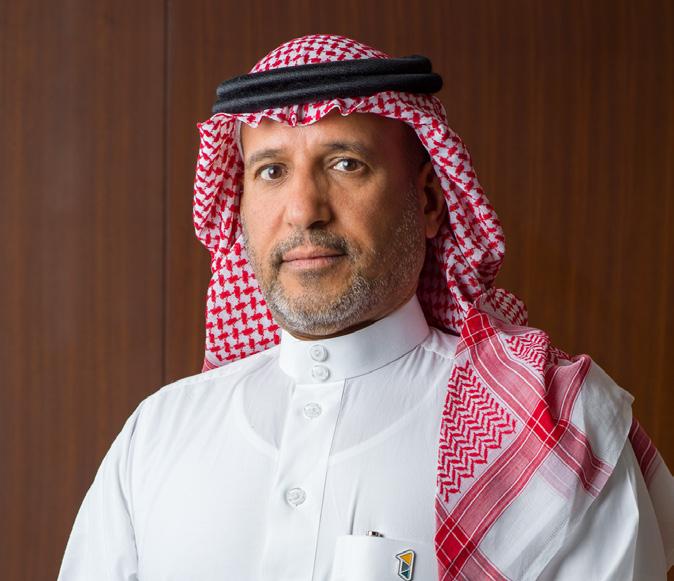
This feat was an important landmark for Tamweel Aloula and its vision of becoming one of the leading companies in Saudi to provide customers with innovative, safe, and value-added financial solutions.
"Tamweel Aloula has set out on its

geographic expansion strategy over the past two years, while diversifying its financial solutions’ portfolio to meet the needs of a wide range of society segments," Hani Al-Afaleq said.
Ahmed Abdulazeem, Tamweel Aloula’s Chief Financial Officer (CFO) explained that these figures constitute a significant step forward

sought-after financial institutions in the region.
Tamweel Aloula also seeks to provide a unique digital experience, facilitating the process of obtaining financing solutions from anywhere and at any time. It offers the most convenient terms to obtain a financing solution without visiting the branch or producing a sponsor.
Its corporate financing solution ensures excellent services to both clients and partners by providing flexible and Sharia-compliant solutions in association with a set of carefully selected suppliers.
Tamweel’s impressive financial results demonstrate the success of its digital transformation efforts and its ability to provide clients with innovative financing solutions. Another major factor is the company’s wellestablished successful partnerships with SMEsupporting government programs such as Monshaat, Kafalah, SME Bank and SAMA’s private sector supporting program.
Teamwork has been the crucial factor behind Tamweel Aloula's string of successes over the years. Having the right talent in the right position made all the difference. Tamweel Aloula also focuses on customer needs and this has been their growth driver.
towards achieving his company’s ambitions and the vision of becoming the first Saudi company to provide customers with innovative, safe, and value-added financial solutions.
Tamweel Aloula is one of Saudi’s leading financing companies, with a long and proud history of success and growth. The stupendous growth story in 2022 is just the beginning, as the company is projected to reach even greater heights in 2023.
The Company, licensed by the Central Bank of Saudi Arabia (SAMA), provides auto lease financing, consumer financing, productive assets financing and SME financing. It also gives advanced and integrated financial services to help consumers and SMEs fulfil their financial needs.
The company has been around since 2006, and since then, they have experienced unprecedented growth in the industry due to the combination of innovative products, well-thought-out strategies, and a commitment to customer service. As a result, they are now one of the most respected and
Tamweel believes in versatility and it’s evident in their product coverage as well. While its personal financing solutions are catered strictly towards Saudi nationals, auto lease financing and corporate financing products are available for expatriates working in the Kingdom as well.
Talking about Tamweel’s road map for the years ahead, it will be introducing more digital services to make it easier for customers to manage their finances. This will allow the financial institution to keep up with the fastpaced nature of the market and make its services more accessible.
With a focus on building an attractive and healthy working environment, backed by performance rewards, Tamweel Aloula is all set to continue its customer-centric digital journey. As the largest non-bank SME financing company in the country, Tamweel Aloula is well-positioned to lead the market in 2023 and beyond.
Climate change is not a possible future risk. It has already started to impact human life and the worst effects are yet to come
Nuno Fernandes is Professor of Finance at IESE Business School. He is also the Chairman of the Board of Auditors of Banco de Portugal, Non-Executive (Member of Audit Committee) at the European Investment Bank, and Research Associate of the European Corporate Governance Institute. His particular areas of interest are climate finance, mergers and acquisitions, corporate governance, banking, financial strategies, and corporate finance.
Nuno Fernandes regularly advises companies and financial institutions in Asia, Europe, Latin America, and the Middle East. He has delivered speeches and conducted workshops for well-known companies around the world.

A regular contributor to international media – including The Financial Times, Forbes, and The Wall Street Journal – Professor Fernandes is the author of several other books, including Finance for Executives: A Practical Guide for Managers (second edition), and The Value Killers: How Mergers and Acquisitions Cost Companies Billions—And How to Prevent It.
In the past, Nuno Fernandes was the Dean of Católica-Lisbon, and Professor of Finance at IMD in Switzerland. He has received numerous teaching and research awards and has been published in leading international academic journals, including the Journal of Financial Economics, Review of Financial Studies, and Harvard Business Review. In 2022, he won the “Outstanding Teacher” award, in The Case Centre’s Worldwide Competition, also known as “business education’s Oscars.” He earned his PhD in Management (Finance) from IESE Business School, and a degree in Economics from Universidade Católica Portuguesa.
In his interview with the International Finance Magazine, Nuno
Fernandes shares his insights about his new book Climate Finance, Green Investing, M&As, climate risks, role of Central Banks in Climate Finance, and much more.
IF: Can you shed some light on your new book Climate Finance?
Nuno Fernandes: Three years ago, I started to work on this book, as I wanted more people to be aware of the massive impact that climate change can have on financial markets, and companies overall. Moreover, what could the finance world do to contribute to this massive global challenge.
Climate change is not a possible future risk. It has already started to impact human life and the worst effects are yet to come. Avoiding those extreme impacts represents an unprecedented challenge for humanity. A huge level of investment is required to meet the Paris Agreement goals. Given the magnitude of the challenge, it is clear that public investment alone will not be enough. Private sector funds need to be channelled into the new investment opportunities.
Climate change poses risks to companies, banks, governments, and investors, but also opens up opportunities. And my new book, Climate Finance,
covers sustainable finance topics and climate-related frameworks, balancing investor and corporate needs. Banks and financial investors can serve as enablers of a smooth transition and help properly allocate capital and risks. Every type of investor will be involved in different ways: by investing in private equity funds or directly in projects, buying bonds or equities, or investing in global funds that diversify their savings.
Several financial instruments are novel, and some aspects of their structure and best practices are still being developed. The book provides practical and applied concepts that are firmly grounded in reality, highlighting evidence from markets, academic research, and practical case studies featuring leading companies and investors.
Finance is about linking demand for capital (typically companies), to suppliers of capital (e.g. investors and financial institutions). Defined in this broad sense, Finance (including financial players such as shareholders, debtholders, capital markets, regulators/ central banks, and boards) has an important role to play in tackling the challenges ahead.

Climate impacts Finance. For instance, climate change affects a company's fundamentals, and thus markets overall. Climate change brings new risks and opportunities for companies, and this has obvious financial implications. And investors do care about these, and are engaging with companies so that they provide additional disclosures, stress tests, manage the exposure to stranded assets, or have clearer lowcarbon transition strategies.
But Finance also impacts Climate. Calls for action to address the climate crisis come from company stakeholders (customers, employees, etc.), world leaders, regulators, and investors. These changes in consumption attitudes affect the way companies design their strategies, as they strive to meet the consumer demand for more responsible products. Consequently, large companies, such as automotive companies, are also asking their suppliers to be more environment-friendly. This leads to a higher demand for financial instruments related to climate change. Indeed, the different finance tools, new ESG metrics, and new financial instruments such as green bonds or sustainability-linked loans, all contribute towards companies taking concrete actions to reduce their carbon footprint, and thus help in the transition. Therefore, it goes both ways. Climate impacts Finance. But Finance also impacts Climate.
Corporate fundamentals will change. The profitability change will vary from sector to sector. Some companies and industries are better positioned than others for a low-carbon economy. Not only because of policy/regulations regarding emissions or carbon taxes but repricing of assets is also another way in which climate change impacts investments, collateral values, and balance sheets throughout the
world. As a consequence of shifts in risk perceptions and societal preferences, the price that investors are willing to pay for different assets is changing, and so is the risk they attribute to them.
The world’s largest investor, Larry Fink, Chief Executive Officer of BlackRock, has issued several warnings in his annual letters to shareholders. Many more long-term investors, including pension funds, sovereign funds, and others, are increasingly concerned that failure to act could endanger the longterm returns on their assets.
Besides, a big funding gap exists between what we have right now (the Paris Agreement signatures) and what we need to have in the future (the actual infrastructure, supply chains, and corporate frameworks to deliver on those agreements). Bridging this gap should now be the priority for executives, board members, and shareholders. Finance plays an important role in the development of instruments used to address this gap. By properly using tools such as green bonds or loans, companies introduce climate change in their long-run strategic portfolios, and thereby help them in their transition.
Corporate action will be crucial for obtaining the funds needed to fulfil the carbon neutrality goals, and most of the required investment will come from the private sector. Market-based finance is a key pillar in this process. Capital markets, the intermediary between savings and corporate investments, can be used to close the investment gap.
Stranded assets are assets that suffered premature write-downs, devaluations, or conversion into liabilities. In other words, stranded assets are assets that, despite being productive from a purely operational point of view, are no longer economically viable due to changing regulations and consumer tastes. They are particularly concentrated in some sectors, and they are important for countries that depend on commodity exports.
For instance, in the energy sector, given the global commitments to the reduction of CO2 emissions, there is a real possibility that the value of oil and some other carbon-related assets may become zero.
Corporate action will be crucial for obtaining the funds needed to fulfil the carbon neutrality goals, and most of the required investment will come from the private sector
In fact, achieving the Paris Agreement’s long-term temperature targets will certainly result in several billion barrels of reserves unutilized. Investors will tend to shift their capital away from carbon-intensive sectors and direct them to carbon-efficient companies, projects, and technologies.
However, the stranded assets problem can affect economies globally as economic and financial systems are interconnected. Stranded assets are not restricted to the fossil fuel sector. For instance, in the agriculture sector, land degradation, extreme weather events, and wildfires can destroy crops, affect livestock farming, and transform these assets into stranded assets. Also, agricultural assets can become stranded because of the greening of the supply chain, shifts in consumer behaviour or political changes, and environmental regulation. This is why this will also hit advanced economies through the interconnections of the global economy and through ownership and lending positions in the global financial system.
At the company level, assets on the balance sheets of companies operating in the fossil fuel industry (and others) are likely to become impaired. This means that companies will need to decrease the value of assets on the balance sheet and recognize an extraordinary loss in the income statement in that period. Erosion of assets from the balance sheet has capital structure implications, as the leverage ratios of the company will rise. If some highly leveraged
firms were hit by losses due to stranded assets, they would be unable to service their debt obligations. For example, in early 2021, S&P downgraded the credit rating of three U.S. companies – Chevron Corporation, Exxon Mobil Corporation, and ConocoPhillips – mentioning “pressure to tackle climate change” among the causes.
Companies operating in highly polluting industries can reduce their environmental risks and mitigate stranded asset risk in a variety of ways:
Divesting old/polluting assets: An oil company can sell off old and obsolete assets such as refineries or oil wells and diversify its portfolio to include renewable energy.
Not reinvesting into the old business: A company can choose not to reinvest in old (and polluting) assets and favour new investments in sustainable assets. This can be done by investing a gradually smaller proportion of the earnings into sectors/products that are “at risk.”
Sourcing differently: A company can radically transform its supply chain and operating model, reduce its energy consumption, and switch to less carbon-intensive forms of energy supply.

Using M&As to transform their portfolio: By acquiring new technologies and pipelines of cleaner products, a company can sometimes transform its business faster than the organic rate of change.
What is European Union's contribution to internation-
Despite anecdotal evidence provided by commentators, newspapers, and consultant reports, there is no scientific evidence suggesting superior performance by high-ESG funds in the long run
al climate finance? How important has their contribution been?
Although finance (and the various financial actors) can play a role in mobilizing savings toward climate-related goals and investments, policies and regulations also play a role. The first step is to introduce a fiscal policy that incorporates the pricing of externalities, which is related to carbon taxes and fuel subsidies. It is important to recognize that political economy aspects are involved.
A priority in capital markets regulation is to clarify definitions related to sustainable finance. A lack of clarity as to what constitutes a green loan, green bond, and other green activities hinders banks, companies, and investors and increases the potential for greenwashing activities.
In the EU, the European Commission launched its Action Plan on Financing Sustainable Growth to meet the 2030 targets that it has committed to, in line with the Paris Agreement. This includes several policy initiatives to direct capital toward low-carbon projects, allow better management of the financial risks associated with climate change, and foster transparency in financial and economic activities. In March 2020, it published the Final Report, which details the following:
An EU classification system of sustainable activities (the EU Taxonomy): Provides a classification framework for sustainable economic activities. Its objective is to provide a common language and uniform criteria that corporates and investors can use to describe environment-friendly activities.
An EU Green Bond Standard: Represents the European guideline for green bond issuers, and complements the Green Bond Principles (by the International Capital Market Association). It aims to promote transparency and comparability in the green bond market, as well as support its growth.
Methodologies for EU climate benchmarks and disclosures for benchmarks.
Consistent labelling and disclosure of funds to enable investors to make informed choices.
Guidance for institutional investors on their disclosures, including how to factor in investor preferences and integrate ESG into their investment processes.
Guidance to improve corporate disclosure of climate-related information.
Can you give your insights about Green Investing? Is investing in Green Bonds & Green Funds profitable for investors?
Several papers have examined whether companies with strong ESG credentials also have enhanced profitability and value, what is sometimes referred to as “doing well by doing good.” Also, there is some empirical research on the implications of climate risk and ESG in general for investors. Overall, the evidence is mixed, and it is difficult to establish causality, especially for issues such as climate change risks, for which very limited data time series are available.
I would like to highlight one thing. Despite anecdotal evidence provided by commentators, newspapers, and consultant reports, there is no scientific evidence suggesting superior performance by high-ESG funds in the long run. This does not mean that investors should not consider climate issues and sustainability in their investment decisions. Of course, they do, as it impacts cash flows, risk, and growth opportunities.
It is important to remember that firms with lower risk should have lower expected returns or cost of capital. However, during a transition period, we may observe high returns for sustainability-related strategies. Past returns do not predict future returns, and past average returns definitely do not necessarily imply strong expected returns in the future.
Finally, it is sometimes assumed that everyone (investors in particular) seeks to maximize performance or shareholder value. Some investors, however, have different utility functions. If the values and goals of these investors align with sustainability considerations, then they pursue these strategies even if they do not promise superior performance.
However, we should also not overestimate the objective of “doing good for the world” as a driving force of financial flows. It is important to realize that maximizing risk-adjusted returns is likely to remain the primary consideration for most investors.
How can companies use M&As to improve their environmental performance?
Climate considerations are becoming increasingly important in M&As. Mergers can be used by companies to “green” their portfolio quickly, acquire cleaner technology, and better comply with the expectations of stakeholders, including regulators. Large players have been using mergers to close technological and business model gaps in their portfolios, and quickly become more environmentally conscious.
M&As will be especially important in certain sectors such as oil and gas, as producers need to invest in the transition from fossil fuel to cleaner energy sources. In other cases, the goal can be to acquire energy-saving or emission-reducing technologies, or to move the business toward other low-pollution sectors.
However, M&As pose significant challenges. Some of the more important of these are paying attention to overpayment, accountability in the integration, and communication with different stakeholders, including employees.
Overall, climate-risk factors can affect the likelihood of a deal being closed, and environmental due diligence is necessary for most mergers. Poor performance on environmental issues can negatively impact the valuation, and it can be used to negotiate the price down. However, in some cases, value and efficiency can be increased after the deal, by bringing the target assets to the same level of ESG performance as the acquirer. This requires the integration to focus on improving the ESG factors of the target and thus bring its poor ESG performance on par with that of the acquirer.
Institutional investors are the largest holders of shares in publicly traded companies worldwide. They are also the majority holders of bonds (corporate and
government). Therefore, it is obvious that they are key players in the low-carbon transition.
When we talk about institutional investors this includes asset managers, sovereign wealth funds, pension funds, and other types of investors. Many of these investors have a long-term orientation and are concerned about the long-term implications of climate change on their portfolios' returns and risk.
Most institutional investors believe that climate risks have financial implications for their portfolio firms, and that these risks, especially regulatory risks, already have begun to materialize. Besides being a scientific reality, climate change is also an economic reality, and thus, it is a relevant investment issue. As a result, they are increasingly incorporating environmental information into their financial analysis and investment decisions.
There are different strategies used by these investors, such as screening, integration, exit or engagement. There is still limited empirical evidence on how different investors apply investment strategies, and their relative effectiveness. The little empirical

The European Commission launched its Action Plan on Financing Sustainable Growth to meet the 2030 targets that it has committed to, in line with the Paris Agreement
M&As will be especially important in certain sectors such as oil and gas, as producers need to invest in the transition from fossil fuel to cleaner energy sources
evidence that exists suggests one has to be careful about greenwashing and initiatives on sustainability that are simply PR efforts without any concrete impact. The evidence also suggests that engagement seems to be more effective than divestment in achieving positive environmental results.
Central Banks are important players in financial markets. To begin with, they are responsible for implementing monetary policy, in which role they affect interest rates as we are seeing in the last few months. Importantly, Central Banks are also large buyers of financial products, namely, bonds for their portfolios. In addition, many of them are responsible for regulating the financial sector and ensuring financial stability.
In their different roles, they can use various tools to influence the climate transition. For instance, in bond purchase programs, Central Banks can use portfolio tilts, or exclusion lists, to direct their purchases toward greener assets. That is, while implementing bond purchase programs, Central Banks can influence the relative size, and rates, of different bond markets.
In supervising the financial sector, different operational tools can be used, including reserve requirements, collateral restrictions, and overall prudential regulation tools such as capital ratios and disclosures.
Further, many Central Banks are incorporating climate considerations internally. For instance, EU Central Banks agreed, in February 2021, on a standardized reporting of their own portfolio carbon footprint, along the lines of the TCFD.
However, it is important to consider that all these changes have consequences, costs, and distributional effects, and the availability of data that can justify
future changes is a significant challenge. What Central Banks and financial regulators will do to support a smooth low-carbon transition will depend on what their mandate allows, how this is interpreted, and their willingness to act. Moreover, the mandates and policy tools differ significantly across countries.
10) You claim that your book will be helpful for corporate managers, investors, executives, regulators and central bankers.What insights are you providing them? This book provides an in-depth understanding of the various aspects of climate finance, from the risks and opportunities to the demand and supply of capital, to the impact of global policies. It presents frameworks to help readers better understand the sustainable finance field and the link between finance and climate. It allows the reader to assess their contributions, risks, opportunities and personal role in the coming transition. It also helps investors and companies make more informed capital allocation decisions by appropriately incorporating all risks.
If your work deals with finance, you must understand how the real-world impacts of climate change are reshaping stakeholders’ expectations. Businesses cannot sit back and be passive spectators of the government’s actions. Rather, they need to participate in efforts to combat climate change and contribute in different ways.
In addition to being a useful guide for finance leaders and practitioners, this book can also be used in business education (MBA, master’s, and executive education programs). It is based on many years of teaching and consulting with world-class corporations from all continents of the world.
Climate Finance will help you be part of the solution to the greatest challenge facing humankind today. The book will help you make the right choices and take meaningful action to protect the long-term interests of your organization against the financial threats posed by climate change.
The COVID-19 lockdown took people indoors and took them online. Everything from grocery shopping to paying bills was online as social distancing norms were enforced. This was the time when fintech and tech-fin firms came to their own as more and more people and organizations depended on their services to make and receive online payments securely. Several shadow banking firms who had been early adopters of fintech found themselves in a strong position to weather the storm of the pandemic and recover from the slump in business quickly. However, when it came to the main banking sector, a sense of disarray prevailed.
One of the most crucial institutes of human civilization found itself in troubled waters as it got hit from multiple angles. Both personal and institutional banking activities came to a near standstill as everyone experienced a financial crunch. The term used by S&P to describe the effect was ‘Screeching Halt’, which spoke volumes for the state of things. However, it was not the pandemic alone that affected banks. The pre-COVID banking sector was already under pressure in two main areas: competition from large and small fintech and tech fin firms, and low-interest rates.
The situation was only exasperated by the crisis, providing a stark reminder that it was time for banks to up their game.
Issues that plagued the banking sector due to COVID-19 pandemic
Banks saw a drastic reduction in investment levels while also experiencing market volatility. Activities like M&A/SPAC also saw a drop, further affecting income streams. And finally, the underutilization of brickand-mortar bank facilities added to costs without substantial revenue to justify the spending. The aim of the banking sector in the post-COVID world was not so much about surviving – that was well within its capability, but more about how quickly it would get back on its feet.
There are a few areas that the sector can focus on to be better equipped for the post-COVID era. The first is digitalization. This is where fintech got it right, right from the start. If banks can digitalize and automate as many processes as possible, it could be a leap forward in getting back on track. Digitalization does not only streamline operations and makes them faster, but it also helps to lower the error rate to even zero. Automating processes helps free up resources that would otherwise be tied up doing mundane tasks. Reallocating these resources can have a considerable positive impact on the everyday running of the banking sector.

GRAHAM KITCHING PRACTUS’ CHIEF BUSINESS OFFICER FOR NORTH AMERICA
COVID-19 was a shock to the system of transactional banking, which has led to a change in the business modelTHOUGHT LEADERSHIP FINTECH COVID-19 BANKING AND FINANCE
While going digital and moving processes online, it is also important to maintain a personalized experience for customers. Improved telephonic and video communications for customer interactions could be exactly what both banks and customers need to retain good relationships and provide reassurances in the sector’s ability to build momentum in the ‘new normal’.
In a world where many non-banking financial companies (NBFCs) already have a head start in online payments and processing of financial transactions, banks do not have to start from scratch. Collaborative ventures or even mergers and acquisitions of small yet well-equipped NBFCs could speed the process along.
Interests on loans have been the major source of revenue for banks over the decades. However, the COVID-19 crisis rocked this model to the core. Loss of jobs, and businesses collapsing made it impossible for a vast number of borrowers to pay back their loan amounts. As the number of non-performing loans (NPLs) increased, banks found themselves incurring greater losses with a diminishing capacity to absorb these losses over time. This situation is unlikely to change at a rate that would help banks recover quickly.
One way that the banking sector could start recovering from this outcome is to focus on other sources of income. A fee-based model for revenues should be the next step to protect and stabilize the business. Developing new products and improving existing products would help to enhance fee-based revenue-generating streams. Whether we are looking at digital products like e-wallets and e-credit cards or more traditional products like lockers, Guarantees, and pay orders, increasing their attractiveness and accessibility for the customers is a move in the right direction. The pandemic was a shock to the system that changes the business around the world.
Graham Kitching is Practus’ Chief Business Officer for North America. With over 35 years of experience under his belt, Graham has acquired extensive global knowledge. He has worked with companies such as PwC, P&O, Bristol Myers Squibb, McGraw Hill, and TCS, amongst others. He has held various leadership roles in these organizations and his responsibilities have extended across Europe and Asia. A visionary and a motivator, Graham currently serves as President of Chartered Accountants Worldwide, North Florida Chapter.

